You are using an out of date browser. It may not display this or other websites correctly.
You should upgrade or use an alternative browser.
You should upgrade or use an alternative browser.
Reviews by ufospls2
Filters
Show only:
Loading…
ufospls2
Headphoneus Supremus
Pros: Much improved headamp section than V1
More features than V1
More features than V1
Cons: Could be $100 cheaper at MSRP to increase value proposition
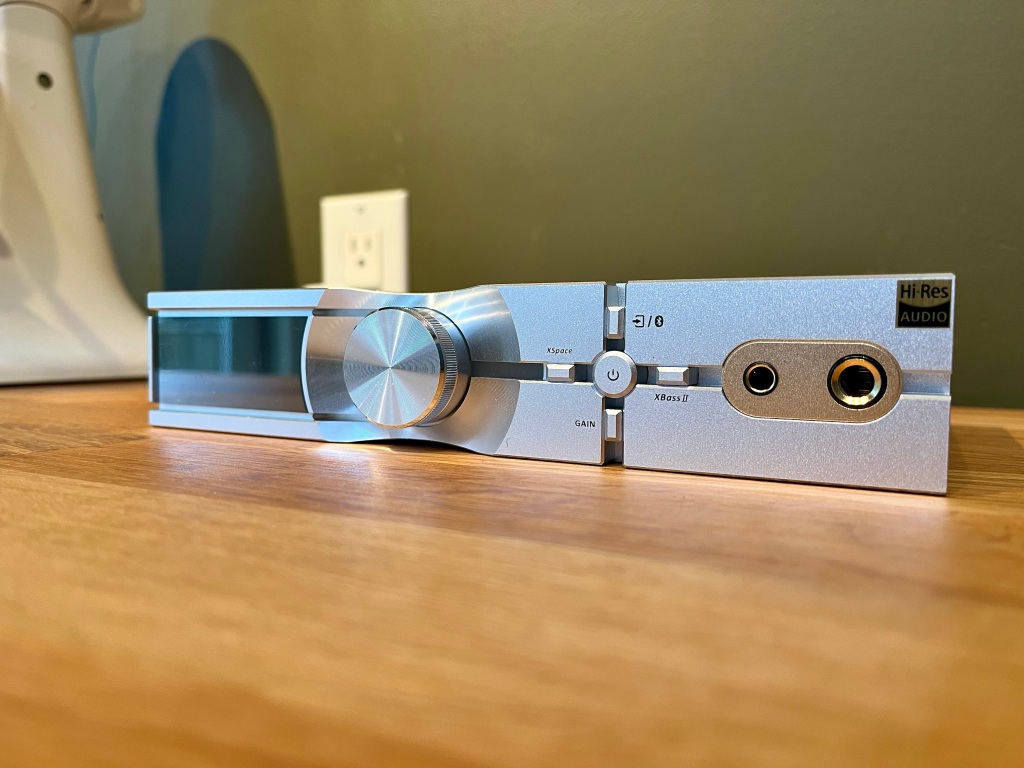
Introduction
Hi Guys,Today we are taking a look at the fairly recently released DAC/Amp combo unit from iFi, the Neo iDSD 2. I reviewed the first Neo iDSD a couple of years ago, so I was looking forward to hearing how the second incarnation had changed and how it stacked up compared to its predecessor. For the rest of this review, I’ll refer to the unit as the Neo 2.
The Neo 2 has some big changes in comparison to the Neo 1, but in terms of looks, it is fairly similar. It can be used either horizontally or vertically, which is handy for tight spaces on desks, and has an upgraded display compared to the original model. The most notable feature change for the Neo 2 is a vastly more robust headphone amplifier section. I think this amplifier section must be very closely related to the amplifier section in the iDSD Diablo 2, with very similar output power and sonics. iFi lists the output power in a similar fashion to their other products in terms of peak output, and RMS output, and from the balanced output (4.4mm) you are looking at 5551mw at 32ohms peak and 2,832mw at 32ohms RMS. The Neo 2 also features aptX lossless Bluetooth, as well as iFi Xbass and 3D sound features, though these are now called XSpace and Xbass 2 on this unit. On the rear of the unit, you have RCA outputs and full-size XLR outputs. In terms of inputs, there is a 3.5mm analog input for using only the amplifier section, a SPDIF optical input, a SPDIF coaxial input, a USB input, a BNC clock sync input, and a DC 9V power input. On the front of the unit, there are a few more buttons than the Neo 1, allowing you to toggle gain, Xbass 2, XSpace, and Bluetooth features. There are also the 4.4mm headphones output and the 6.35mm headphone output.
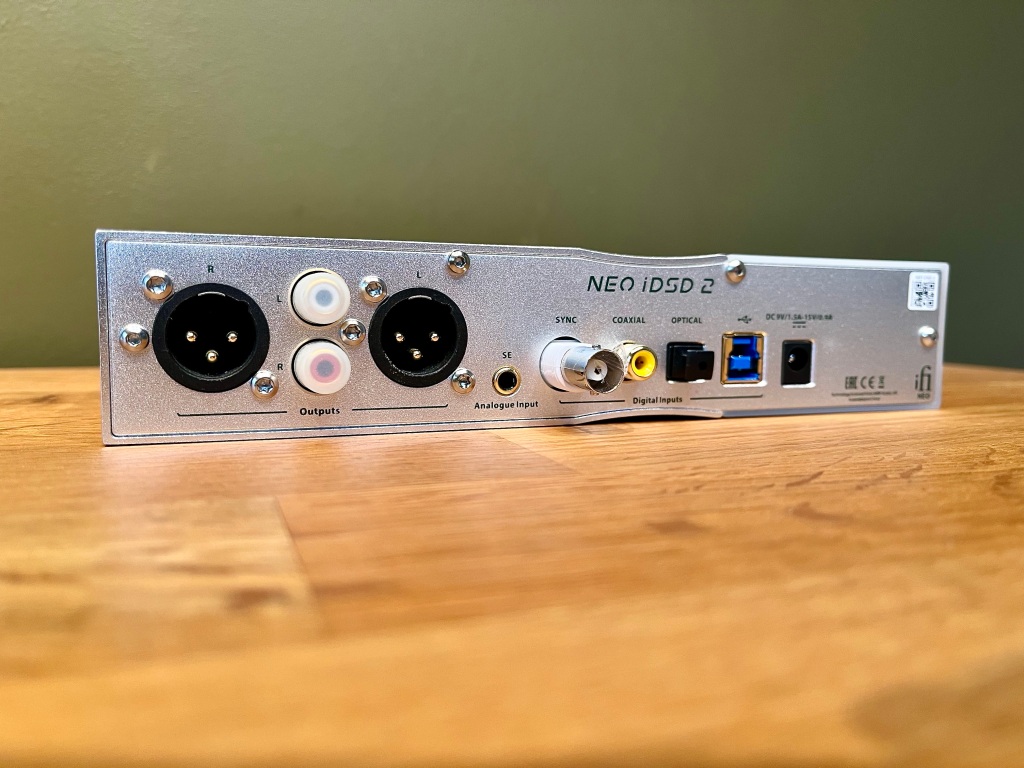
I’ve done a ton of testing with this unit both as a headphone amplifier, as a DAC and as a DAC/Amp combo unit. I will do three sections following addressing the performance in each area.
DAC
As a DAC only, the Neo IDSD is a very capable unit. Although you don’t have the tube section and all of the extra features of the Pro iDSD, the Neo 2 does nicely improve on other iFi units like the ZenDAC. As a DAC only, the Neo 2 does sound very slightly warm in the low mid-range, with good clarity across the entire frequency response. The treble has a small amount of sparkle to it, but I wouldn’t describe it as bright or possessing spikes that can be grating over time. One thing that is nice about the Neo 2 as a DAC is it can also be used as a preamp with variable volume control. This allows slightly more freedom with the use case of the unit and can be used as a DAC/Pre into a standalone power amplifier if needed. Overall detail levels as a pure DAC are totally within what should be expected from a unit of this price point, and perhaps slightly beyond. In terms of overall performance as a DAC compared to the Neo 1, the Neo 2 is very similar. With that being said, I do still feel that the Neo series does make a better case for its use as a DAC/Amp combo unit, and this particularly applies to the Neo 2 given the improved head amp section with this incarnation. The DAC section of the Neo 2 features the standard filter options that most iFi DACs have – Standard, Bit Perfect, Minimum, and GTO. I prefer the GTO filter, which is short for Gibbs Transient-Optimised. Since I first heard this filter on the original Pro iDSD, it has been my favourite option of the iFi filter types. It seems to have the best balance between all the options and helps keep a clear incisive leading edge of all the notes, which helps things sound a bit cleaner and more detailed. I would recommend trying all the various filters, however, and going with the one that you feel works best for your ears.Amp
As an amp only, the Neo 2 is incredibly similar to the iDSD Diablo 2, which I reviewed recently. Although I wasn’t a huge fan of that unit in an overall sense, it didn’t really have anything to do with the overall sonic performance of the Diablo 2, and due to that, I’m very happy to see the Neo 2 utilizing what I am guessing is a very similar headamp section. It is much more powerful than the Neo 1. With the Diablo 2 in combination with the LCD-5, due to its uncharacteristically low impedance (14 ohms), I ran into the current protection of the Diablo 2 from the 4.4mm output. This never happened with the Neo 2 on the 4.4mm output, and I think this might have to do with the fact it is running from a 9v wallwart, vs a 5v wallwart/battery in the Diablo 2. The Neo 2 headamp section has a very neutral presentation verging on bright in the treble. It is very solid in terms of impact, drive, and detail levels. I definitely felt the amplifier section was slightly more detailed than the Neo 1’s headamp section. Another thing to mention is the variable gain levels. You can use iFi’s ieMatch (-12dB) with sensitive IEMs, and then there are regular gain levels of 0dB, 9dB, and 16dB. On the Neo 2, these settings are called Normal, Turbo, and Nitro. As with the Diablo 2 review, I am hoping iFi standardizes their gain naming conventions, perhaps returning to normal, high, and turbo. “Nitro” which used to be called Turbo, on the Diablo 2 is 18dB, but on the Neo 2, it’s 16 dB, so it can all get a bit confusing. The Neo 2’s headamp section will comfortably drive most headphones on the market, though if you want to push the volume high with something like the HE6, or Susvara, you might start running into its limits. Those are pretty unusual use-case scenarios for the Neo 2 however, and with pretty much all other headphones you will be totally fine in terms of power and gain. the Neo 2’s amplifier section is very solid in performance, and I could certainly see someone using it as their only source for headphones, especially if their desk space is limited.DAC/Amp
In my opinion, this is the use case where the Neo 2 really shines. The very neutral, almost bright amplifier section combines with the slightly warm DAC section and ends up with a very pleasing balanced frequency response. There is a small amount of sparkle in the treble, and a little bit of warmth in the low end. It’s a very easy-going sound signature, and it is incredibly easy to enjoy. I never found myself thinking it was overly analytical or boring, as some setups can be. The detail levels and technical performance are totally in line with a product of this price point, but the unit also has all of the typical features iFi products have, which helps make them real Swiss army knives in terms of usability. When you combine this with the much more powerful headamp section of the Neo 2 vs the Neo 1, there really isn’t much this unit can’t do, and it sounds good doing it!
Build Quality
The build quality of the Neo 2 is pretty much exactly the same as the Neo 1. A metal shell that feels well put together. I had zero problems over my time with the unit, and it doesn’t feel flimsy or like it will break at any moment. I really do like the ability to use it either lying horizontally or vertically, and I think that vertical use will be especially helpful for those who have limited desktop real estate available.Settings/Bluetooth
I am very much a fan of wired use of DACs and Amps, but the Neo 2 does have aptX Lossless Bluetooth. I did give this a try for a week and I thought it worked well. I didn’t have any problems with pairing my devices, which was all fairly self-explanatory after the first time you do it. The sound quality was also really good for Bluetooth, though I do still think I heard some difference between a wired connection and the Bluetooth option. Perhaps that was in my head however, I’m certainly open to that being true. I think for most people, this will be a personal preference, and for some, the lack of cables and clutter will outweigh any possible difference in sonic quality. It is certainly worth trying out, and seeing what you think of the feature. The XBass 2 feature has a couple different settings to try. There is Xbass, which is just a bass boost, great for those who enjoy a more than neutral bass response. There is Xbass Presence, which increases the upper midrange. It helps add more smack to snare drums, brings out vocals, but can also be too much and make things a bit shouty. This isn’t a feature I particularly enjoy, but I know some people will absolutely love it, I would recommend trying it out and seeing what you think. Then there is Xbass + Presence, which enables both settings. There is also iFi’s 3D setting, which is called XSpace on the Neo2. This is a form of crossfeed, which can help with hard-panned recordings and old mono recordings. I’m not a fan of it on more modern recordings, as I feel it does the opposite of expanding the sound, but I know that some people really enjoy this take on crossfeed, so again, I’d recommend trying it out and seeing what you personally think.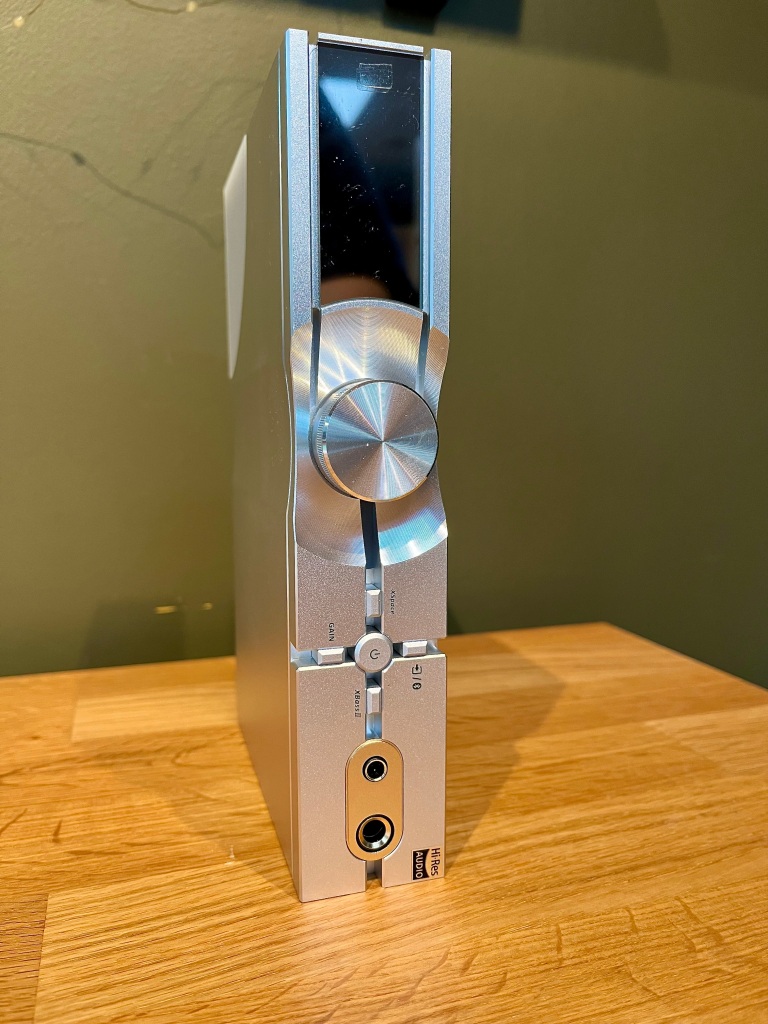
Conclusion
Now, in my iDSD Diablo 2 review, I wasn’t very complimentary and wasn’t a huge fan of the unit. The Neo 2 is a much better piece of equipment in my opinion. It wasn’t that the sonic performance of the Diablo 2 was poor, and I mentioned that in that review. I felt it cost too much at MSRP and did not offer a real tangible improvement over its predecessor. Thankfully, with the Neo 2, none of those concerns are present. The Neo 2 is retailing at $899USD, which whilst not cheap, is less of a jump than the Diablo 2 at its new $1399MSRP. I’d have loved to see the Neo 2 priced at $799USD, but $899 is ok. The Neo 2 also offers refinements in terms of the features offered, the DAC performance being similar but slightly better than the Neo 1. Most importantly the headphone amplifier section of the Neo 2 is a massive improvement over the Neo 1, and that alone justifies its creation as a new product. If you are a user who simply wants a small, transportable, well-built, somewhat more affordable, desktop DAC/Amp unit for headphones, the Neo 2 is incredibly compelling. If you combine that with the fact it can be used as a DAC/Preamp into a pair of powered desktop monitors, it really makes a case for its use as an all-in-one sound center for a desktop setup that doesn’t break the bank (too badly at least.) Overall, I think the Neo 2 is a good addition to iFi’s product range. Apart from the gain naming scheme, there isn’t much I didn’t like about the Neo 2. I hope iFi continues with this sort of improvements to their lineup, and that the Diablo 2 was a blip on the radar because pieces of gear like the Neo 2 are where iFi shines brightest, in my humble opinion. Good stuff iFi!ufospls2
Headphoneus Supremus
Pros: Unique Sound signature
Soundstage depth, and 3D nature
great build
ZMF support
Soundstage depth, and 3D nature
great build
ZMF support
Cons: not the lightest headphone
could be slightly more micro detailed
could be slightly more micro detailed

Introduction
Hi Guys,Today we are talking about the current Flagship headphones from ZMF, the Caldera. This is ZMF’s first entirely in-house designed and built planar magnetic headphone, and although ZMF has become mostly known for their high impedance dynamic driver headphones, the company’s roots are in providing modifications of Fostex T50 planar magnetics. Sadly, I’ve never actually heard any of ZMF’s older T50 modifications, but they had a bit of a cult following and there are still many people using them out there to this very day. Thankfully I do have some experience with other ZMF headphones, which I reviewed a few years ago on this blog. Those two headphones were the Eikon, a bio-cellulose closed-back dynamic driver headphone, and the Verite, an open-back beryllium-coated dynamic driver headphone. I really enjoyed both of those headphones, so I was very curious how things had evolved in the time period since those reviews, and also very curious what Zach (owner of ZMF headphones) had come up with in terms of his first proprietary planar magnetic driver-based headphones.
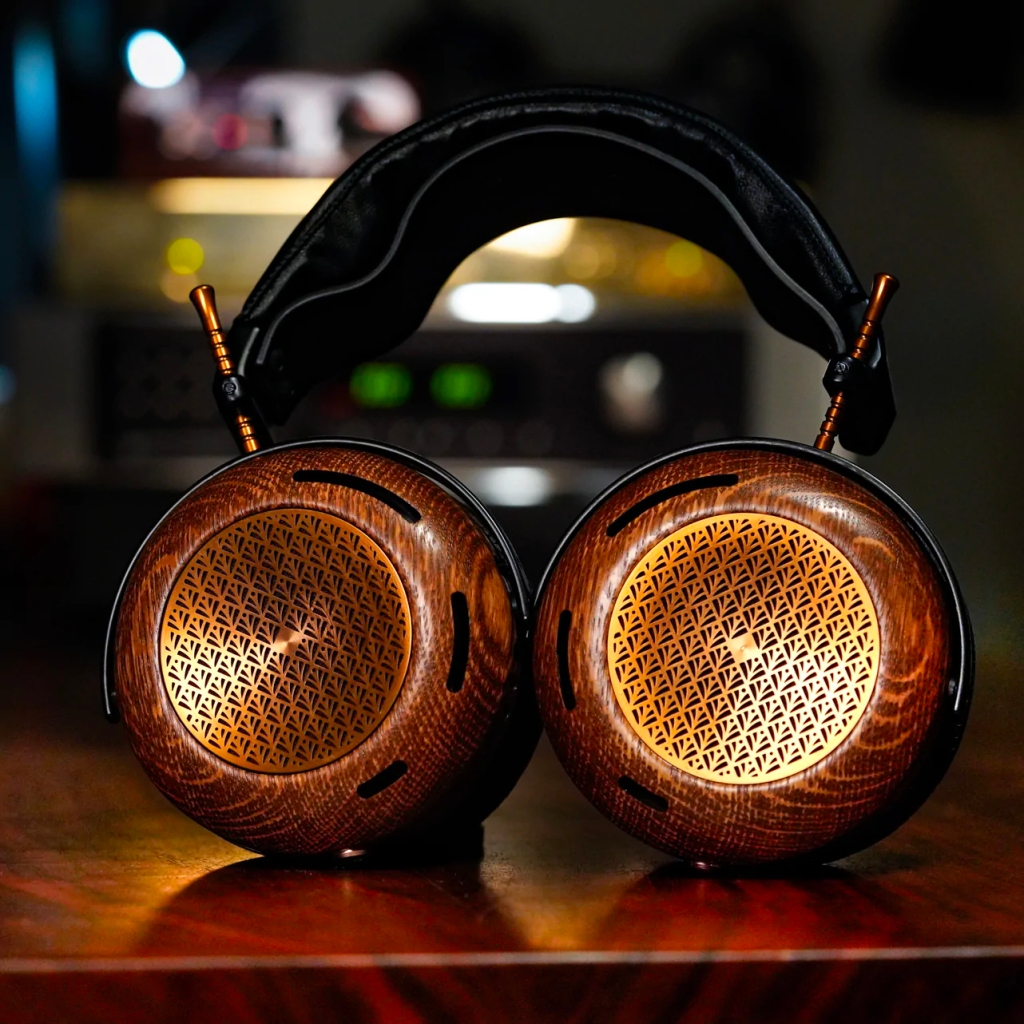
In terms of looks, the Caldera is incredibly similar to other ZMF headphones. Artisan wooden earcups being the main visual feature, of many different types. The pair of Caldera that I have here for review is the current stock option, natural oak wood with black hardware. This currently retails for $3500USD, but there is another stock option at a $200USD upcharge which comes with an aged oak finish and coffee gold hardware. In the time elapsed since the last two reviews of ZMF headphones on this blog, Zach and the team at ZMF have massively increased the number of cosmetic options available. These come in the form of the usual limited edition wood runs, but also stabilized wood runs and stabilized/resin combo runs. These headphones vary massively in terms of colours and figuring of the wood, and also have various hardware colour combos, resulting in some truly spectacular-looking builds. I would never be able to fully feature all the different looks of these runs, so I will provide a link instead to ZMF’s YouTube. To be clear, this is not an affiliate link or sponsored in any way shape, or form, its just the easiest way to share some of the many looks now available from ZMF ()
The Caldera follows suit with the rest of the ZMF headphones lineup in that there are many different options in terms of pads to help tailor the sound to your personal preferences. There will always be traits that the headphones have across all pad options, but they certainly do vary widely, depending on the pads you choose. For the rest of this review, I will be speaking about the Caldera with the stock leather pads installed. I will then cover the individual pads and their specific sound traits in a separate section later in the review.
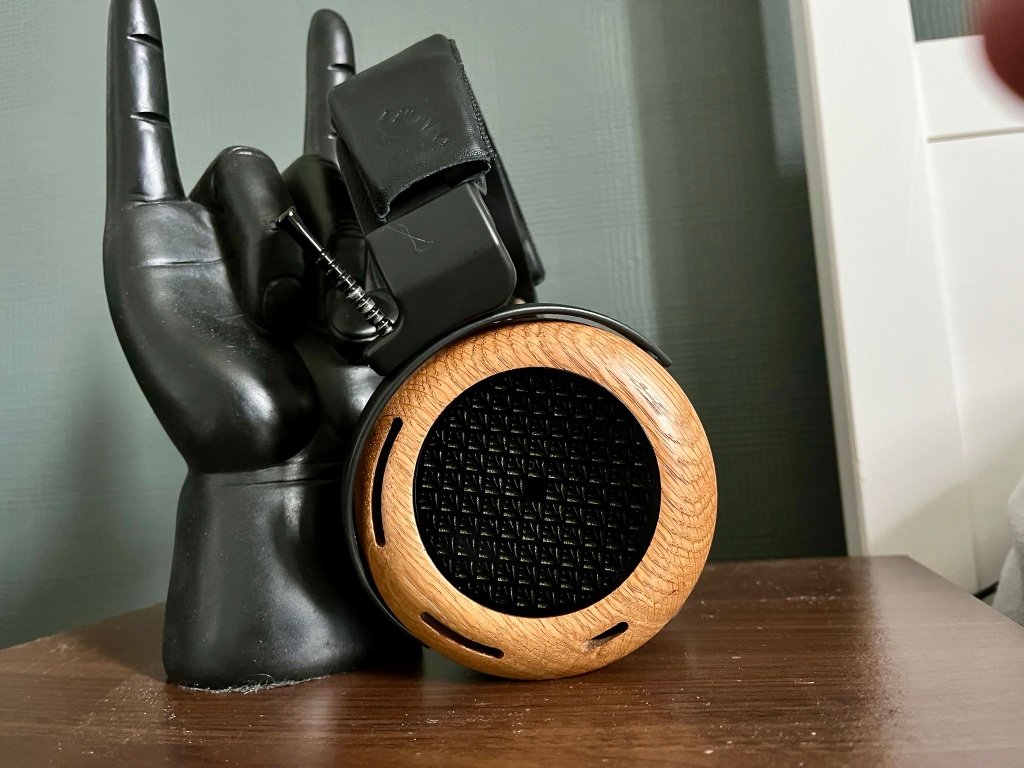
Sonic Impressions
The bass of the caldera in terms of level is pretty much entirely flat, which is fairly characteristic of most planar magnetic headphones these days. That means that whilst they are definitely not bass light, or rolled off in the low end, if you prefer a more robust bass response (as I do) you can play about with boosting the low end via EQ. However, there are many people who I think will enjoy the bass in its stock tuning, and the tonal balance can also be tweaked with different pads as mentioned before. In terms of low-end impact, the Caldera was very similar to the LCD-5 I also had during the time of this review. This aspect did change quite drastically with the different pad options, but with the stock pads, the Caldera is not far behind the Abyss 1266TC, and again very similar to the LCD-5, providing a real amount of heft to kick drums, bass strikes, etc. In terms of speed and deftness of the bass response, the Caldera is right in the middle of the pack when it comes to top-of-the-line planar magnetic headphones. It isn’t fast, and it isn’t slow, it plays it straight down the middle. Overall, I was very happy with the low end of the Caldera, it is a standout in some areas, can be tweaked with the different pad choices, and increased easily via EQ to your preference if need be.The mid-range of the Caldera was a change of pace from what I was expecting, and does show how ZMF doesn’t necessarily have a specific “house sound” these days, but individual headphones which all have their own characteristics and special qualities. I think in the past I have incorrectly associated ZMF with a slightly thicker warmer presentation, but that is not the case with the Caldera. Of course, this is with the stock pads and as I mentioned things can change with the pad choices, but with the stock pads, I would describe the lower mids as pretty much neutral, and the upper mids as being quite forward, in part. There isn’t any warm, gooey thickness in the low mid-range. They aren’t scooped out, or cold, leading to a v-shaped signature, but they definitely don’t come across as being boosted in any way. In the recent Audeze LCD-5 review I did, I spoke of the 3khz peak, and how it was problematic for me. With the Caldera, it is actually around about the 2khz range that there is a peak to my ears, and that 3khz is actually pulled back. I really like this take on upper-mid tuning. That increase in the 2khz region helps with things like rim shots on snare drums, stabs of synthesizers, and crashes of cymbals. When it is combined with that 3khz peak being pulled back, for me and my personal preferences, it sort of gives you the best of both worlds. The impact, and forwardness that helps keep things exciting, with just enough of the area that can make things harsh and grating reduced. Overall, the mid-range of the Caldera is one of my favourites out of all headphones in its stock tuning. There are no areas that annoy me or peaks that are too harsh, and the low mids aren’t too pulled back and sucked out, or overly increased and warm, losing perceived detail and technical performance.
The treble of the Caldera, using the stock pads, is very, very, slightly north of neutral. For me personally, I do prefer a tiny bit more high-end presence, but I could very happily listen to the Calderas treble in its stock form with no issues whatsoever. Compared to the LCD-5 which I felt really lacked treble energy and level, the Caldera is much more in line with my personal preferences. Having the treble slightly increased over being neutral helps keep things lively and also helps with perceived detail levels and technical performance, whilst not being overly boosted also helps provide a frequency response that isn’t bright, grating, and difficult to enjoy for long periods. Of course, as mentioned previously this can be tweaked with the various pad choices, but with the stock pads, it is just very slightly increased over what I would call a neutral treble response. The speed of the treble is very similar to the speed of the low end, in that it pretty much finds itself right in the middle of the pack compared to other flagship planar magnetic headphones. It isn’t fast and zippy like the Susvara, but it is quicker and has a better transient response than the Meze Elite’s.
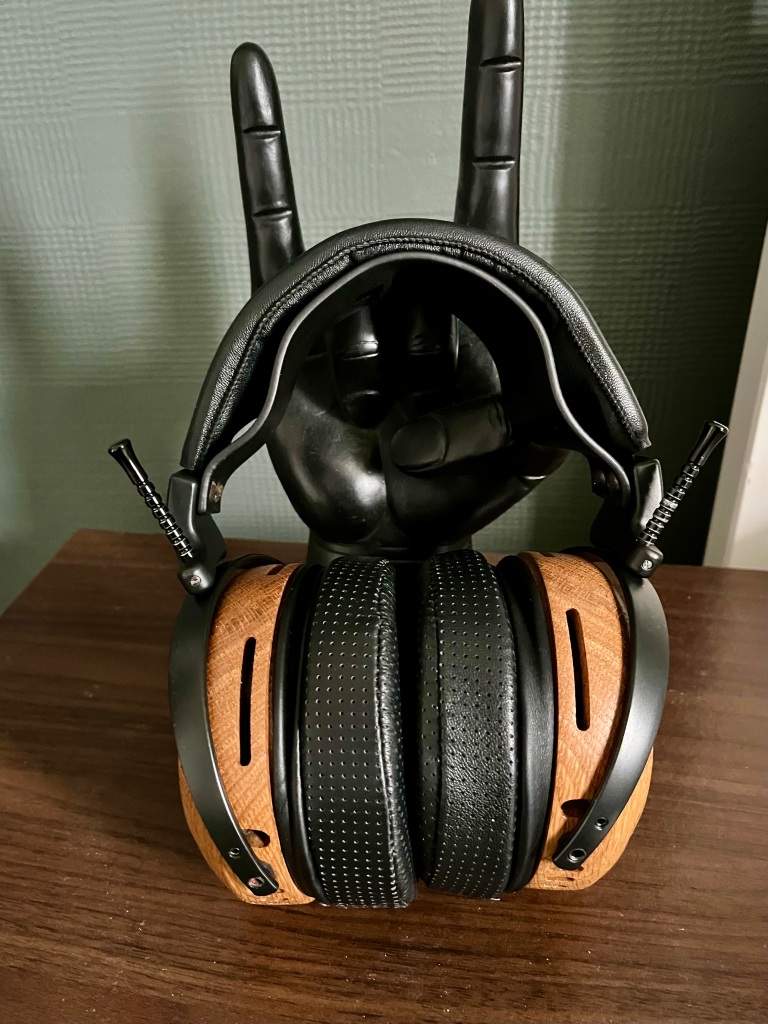
Technical Performance
The overall technical performance of the Caldera is very solid, and I do think it is the best of the ZMF headphones that I have been fortunate enough to hear. The Caldera seems to excel at the “macro” side of things more than the “micro” side of things (in terms of detail,) but isn’t a slouch at either. In terms of micro detail, the Hifiman HE1000se which was originally also priced at $3500USD, does provide more information and low-level detail, but in terms of the larger details, I would say that they are fairly close to each other. The soundstage of the Caldera is fairly mid-sized (with the stock pads), but where it excels is depth and 3D holography within that mid-sized soundstage. This depth and holographic nature is most noticeable with the stock pads, though the other pad options bring other qualities whilst lessening that aforementioned one. The Caldera isn’t the fastest or most detailed driver out of the current TOTL planar magnetic headphones (which also cost significantly more money, which cannot be understated,) but it has a quality that I don’t find in those other faster more detailed drivers. It is hard to describe but there is a “meat on the bones” and toothsome nature to the Caldera, entirely unrelated to frequency response, that I find incredibly compelling. They are just fun to listen to, and sometimes that is worth more than any detail or driver speed ever could be. With all of that being said, I have to make myself clear here, the Caldera is not a slouch of any sort when it comes to technical performance (detail, speed, etc..) it is incredibly competent, the best from ZMF that I have heard, and only slightly trailing behind headphones like the LCD-5 in these areas. I suppose I am trying to convey that the Caldera has other traits that I feel also fall under this area of the review which are harder to quantify, but very important to the overall experience and enjoyment of the headphones.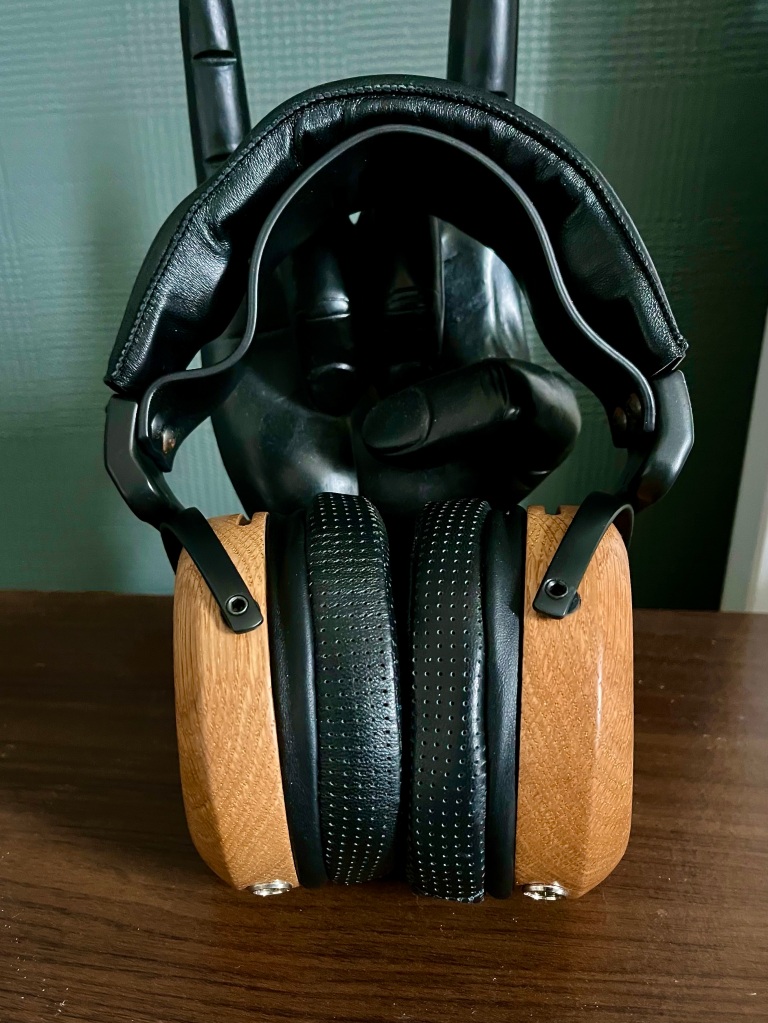
Build Quality
The Caldera follows suit with other ZMF headphones in terms of fit, finish, and build quality. That is to say, excellent. Since I reviewed the Verite and Eikon, the ZMF headband has been slightly improved. It is now wider and seems to distribute the weight of the headphones much better. I found it very comfortable for long listening periods. The Calderas weight will depend on the wood used but this pair I have for review in the stock option comes in at around 500 grams. Although the Caldera is not as comfortable as the Meze ELITE, which is a class leader in this area, I had no problems with the Caldera’s comfort over the review period. The 500 grams isn’t too much, and it is distributed nicely with the new headband design. The Caldera comes with the ZMF stock OFC cable, a pair of stock pads, and a pair of your personal choice of pads. The Caldera have a 60ohm impedance, and 95 dB/mw, so they are really quite easy to drive, especially compared to something like the HE6 or the new Modhouse Tungsten’s. One thing to mention is that if you have other headphones in the ZMF lineup which are high impedance dynamic driver based, and also have an amp specifically for them (say a low power OTL Tube amp) and want to acquire a pair of Caldera, it may be worth trying out other amping options with the Caldera. Sadly I do not have any tube amplification currently, but I did experiment with a few different solid-state options, and the Caldera seemed to enjoy a healthy amount of power and current. With that being said, I must note that the Caldera is fairly easy to drive overall, and will work with a large amount of amps. Some experimentation here is worthwhile, but it doesn’t need to be a power monster as it might with some other current flagship planar magnetic headphones.Pad Options and Mantle Mesh
Now, let’s talk about the various pad options for the Caldera. For this review, I had pairs of the following-Caldera Stock Leather
-Caldera Thick Leather
-Caldera Thin Cowhide
-Caldera Suede
-Caldera Thin Ultra Perforated
-Mantle Mesh (not a pad, explained below)
Caldera Stock Leather: The stock pads ended up being my favourite out of all the options I tried. They provided the best impact and slam, whilst also dialing up the soundstage depth and holographic 3D nature of the Caldera. Their negatives were that they shrunk the soundstage slightly, and also the overall image size shrunk slightly. The stock pads also provided my favourite tonal balance, being mostly neutral with a good balance overall. I also preferred a slightly low-shelf increase applied via EQ with the stock pads, but that is entirely personal preference-based, so I would recommend a bit of experimentation to find what works best for you.
Caldera Thick Leather: These pads actually ended up being my least favourite out of all the options. They slightly increased the low mids area and perceived warmth of the Caldera. I felt they didn’t really add anything of note to the soundstage and imaging of the headphones, but caused a loss of that depth of soundstage and holographic 3D nature I enjoyed so much with the stock pads. With all that being said, I read an impression on a forum thread recently that someone prefers the Caldera Thick pads, so as always, personal experimentation is key here, and finding what works best for *you.*
Caldera Thin Cowhide: The Caldera Thin Cowhide pads were my second favourite pads out of the ones I had here for review. They opened up the image size and made everything sound slightly larger and grander. You lose some of the depth of soundstage that you have with the stock pads, but it is a trade-off for the larger overall image. I also found the cowhide helped bring out some of the detail in the treble, whilst not increasing the perceived amount of treble, which I found surprising due to how thin the pads are. You do lose a slight amount of perceived low end with the thin cowhide pads, but again I increased this with EQ so had no problems with that.
Caldera Suede: The Caldera suede pads off the bat are the most comfortable of the pad options, which is pretty standard for me as I always seem to enjoy the feel of suede vs leather. In terms of sonic performance, the Suede Caldera pads reduce the resonance of the Caldera sound, making everything sound slightly more dry and well separated. You lose some low-end impact and slam with these pads, but the soundstage does open up and the overall image size is larger, similar to the cowhide pads. I don’t think I would choose the suede pads as my main pair of pads for the Caldera but they would make a very compelling secondary option if you plan to only have two pairs of pads (the stock being the other pair.)
Caldera Thin Ultraperforated: The ultra-perforated pads are interesting. You definitely lose a lot of what the stock pads bring to the table, in terms of that holographic nature and soundstage depth, but they open up the airyness of the treble, whilst also increasing the image size. They don’t sound as dry as the Suede pads but do seem to very slightly increase the perceived amount of detail present. I went back and forth about these pads more than any of the others. I don’t think I would choose them as a primary or even secondary pair, but if you are curious they do offer some interesting qualities if you are looking for a good third option.
Mantle Mesh: The Caldera can also use what ZMF has called the “Mantle Mesh.” This is a $20 dollar extra which is applied directly over the driver by the user. What the Mantle mesh does essentially is create an effect of extra dampening of the driver, reducing the upper mids and treble frequencies. When I received the Caldera, I hadn’t realized that the Mantle Mesh was installed, and I found the upper mids and treble overly attenuated and thought it was a fairly dark stock tuning. Of course, once I realized the Mantle Mesh had come installed stock, I removed it and was greeted by a much more agreeable (to me and my ears) stock tuning. If you are someone who is particularly treble sensitive, this could be an absolute lifesaver of an upgrade, and would highly recommend it if you struggle with highs and upper mids of the Caldera. For the average person, I’m guessing it would simply blunt the sound too much, and make things too dull and smoothed over. The mantle mesh is a really great idea for certain people and could take the Caldera from an “ow! that’s so bright” to “this is awesome” experience.

Conclusion
Overall, the ZMF Caldera are a really great pair of headphones. They seem to be the culmination of the entire history of ZMF headphones thus far. From humble Fostex T50 mods to a bespoke in-house designed planar magnetic driver-based headphone, it’s really been neat to watch ZMF grow and continue to innovate. The Caldera has all the hallmarks that ZMF has become known for – Artisan Wood cups and distinct tunings, All done in-house by a team of people who themselves headphone enthusiasts. I sadly haven’t every ZMF headphone, but I have heard a few and the Caldera is certainly my favourite thus far. It is the highest performing in terms of technical performance but is also simply fun and enjoyable to listen to. I found myself going back and listening to old favourites simply because they were great to hear again with the Caldera. The Caldera can be tweaked via pads, and the Mantle Mesh, to your personal preference, and if you don’t mind waiting for a release date and spending a bit more, there are all sorts of cosmetic options for the Caldera, so finding one that suits you in terms of looks shouldn’t be too hard. Personally, I really like the stock-aged oak with coffee gold, but the sheer variety of the woods in the stabilized releases is pretty amazing. The Caldera is less expensive than a lot of the top-of-the-line flagship headphones these days at $3500USD retail, but offers technical performance coming close to many of them. On top of that technical performance, it has its own unique sound signature that is incredibly enjoyable, whilst having some of the best build and support on the market. Overall, I really enjoyed my time with the Caldera, and I definitely give it a thorough recommendation, especially if you are looking for a planar magnetic flagship headphone, but want something a little bit *different.* Awesome job Zach and the team at ZMF!
Last edited:
ufospls2
Headphoneus Supremus
Pros: Good power output for a portable
very similar sound to Diablo 1
very similar sound to Diablo 1
Cons: price
no real improvements over diablo 1 apart from X-MEMS support
no real improvements over diablo 1 apart from X-MEMS support

Hi Guys,
Today we are taking a look at a new product from iFi Audio, the iDSD Diablo 2. This is the most recent iteration in their Micro iDSD lineup, of which I am a long-term fan. The Micro iDSD lineup has always offered a great set of features and performance for their price point, making them a default recommendation for anyone looking for a great transportable headphone DAC/Amp combo unit. The new Diablo 2 has a couple of different features that are new for the Micro iDSD lineup, whilst it is lacking some of the features others have (similar to the original Diablo.)
The first thing I should talk about, which has been a point of contention on forums in recent times is the power rating for the Diablo 2. iFi has always advertised peak output power, versus continuous RMS. The Diablo 2 is advertised as having 5180mw of output very similar in amount to the previous Diablo 1. This is peak output so for very short peak transients it can manage this output, but for continuous power, it can only manage about 2000mw or just under (depending on the resistance.) This is similar to the Pro iCAN, which is advertised as having 14,000mw of output, but again this is peak output and probably managed somewhere about 8000mw in terms of continuous RMS power. In terms of real-world use, for a transportable device, this is totally acceptable and even impressive for a device of its size and general use case. I didn’t have any trouble with the output power of the Diablo 2, as it is very similar to the Diablo 1. One thing to take note of is that the lower the resistance of the headphones (ohms) that you are using, the more it makes sense to use the Diablo 2’s single-ended output, as it delivers more power from the single-ended output into lower resistances than from the balanced output. The extreme case that I ran into this was with the Audeze LCD-5 which has an incredibly low resistance value of 14ohms. I ran into the current protection engaging with the LCD-5 with bass-heavy music at medium volumes using the highest gain setting on the 4.4mm output. Using the 6.35mm output with the LCD-5, I had no issues. Other than that pair of headphones with their unusually low resistance, the Diablo was totally usable in terms of power output.

Now that we have got that disclaimer out of the way, let’s talk about the product in general. The Diablo 2 adopts a new ridged metal case with a nice red anodized finish. Similar to the previous Diablo 2, it has a 6.35mm single-ended output and a 44mm balanced output. There are three gain modes, which have been renamed from the older Micro iDSDs. I don’t like this decision, as the actual gain levels are the same, and it will just create confusion with past products. This means that the levels are 0dB, 9dB, and 18dB, but instead of being called Eco, Normal, and Turbo, they are called Normal, Turbo, and Nitro. Same thing, but it makes it sound like the new “Nitro” mode has a higher gain setting than the old Turbo mode, which it doesn’t. New name, same thing. Another thing which can add confusion for newer users is that iFi is using the term “NOS” (as in nitrous oxide – “Nitro”) to describe the highest gain setting. For someone who doesn’t do a lot of reading about the product, this brings up an issue as NOS in “audiophile speak” could mean “Non Oversampling” with regards to the DAC portion of the Diablo 2, or it could even mean “New Old Stock” with regards to vacuum tubes (which the Diablo 2 most certainly doesn’t have.) The old naming scheme for the gain levels wasn’t broken, it didn’t need to be fixed and seems almost dishonest in that iFi seem to be trying to get people to think the Diablo 2 has a new higher gain higher power output, which it doesn’t.
The Diablo 2 comes with a neat plastic stand which is handy if you are going to be using it as a desktop unit, tilting the front panel upwards to allow for easy access to the front panel. The Diablo 2 also still has iFi’s IEMatch feature, which is selectable on the bottom of the unit. Also new for the Diablo 2 are the USB-C inputs on the rear of the device. This means a USB-C input for data and a USB input for charging. I do wish the Diablo 2 had the feature the Gryphon has to combine charging and data on one input as an option. You are able to charge and also bypass the battery of the Diablo 2, and use a 5v iFi wall wart which comes stock with the Diablo 2. This is handy for anyone who is going to be primarily using the Diablo 2 as a desktop unit. Also on the rear are a SPDIF 3.5mm coax/optical combo input, and a 4.4mm input/output for use as a DAC only, or an amp only. Also on the rear of the unit is the Bluetooth pairing button, a new feature for the Diablo 2 in comparison to the Diablo 1.

The most noticeable new feature on the Diablo 2 is support for any new “X-MEMS” driver-equipped IEMs. X-MEMS is a new driver technology in the IEM space which requires a dedicated amplifier, and it is really only starting to be adopted by manufacturers as we speak. Whether or not it will be widely adopted in the future I don’t know, nor have I heard any example of an X-MEMs driver IEM thus far. However, the feature is present on the Diablo 2, so if you happen to be an early adopter of the X-MEMS tech, the Diablo 2 has you covered.
The sound of the Diablo 2 is incredibly similar to that of its predecessor the Diablo 1, which I reviewed in the past. I would recommend popping over to that review if you are interested in more comments about the Diablo 2’s sound quality in addition to this review, due to how similar they are overall. It is slightly leaner and brighter than the older Micro iDSD models. The bass is quick and precise, and I would say very neutral in its overall level. The mids are less warm and have less presence, especially in the low midrange compared to the older Micro iDSD models. The treble is slightly brighter but also slightly more detailed than the older Micro iDSD models. The Diablo 2 follows suit with the Diablo 1 in that it doesn’t feature any of the typical iFi “3D” or “XBASS” tweaks, so if you would like to tweak the bass level or sound staging, it would need to be done via EQ or something similar from your source, not on the Diablo 2 itself.

The overall technical performance is again very similar to the Diablo 1. It is slightly more detailed, and slightly more refined sounding than the other Micro iDSD models, but also slightly less easygoing due to this. The dynamic performance of the Diablo 2 is again very similar to the Diablo 1, and slightly more refined and quick than than the other Micro iDSD models.
The build quality of the Diablo 2 is totally acceptable. The new metal case is nice in the hand and has a good, solid, well-built feeling to it. The new, larger volume knob is slightly easier to work with in comparison to the Diablo 2, and the channel matching of the volume pot was also totally ok, with no real imbalance at lower volumes. I also like the new red anodized finish, and think it looks much better than the previous slightly more garish red of the Diablo 1.
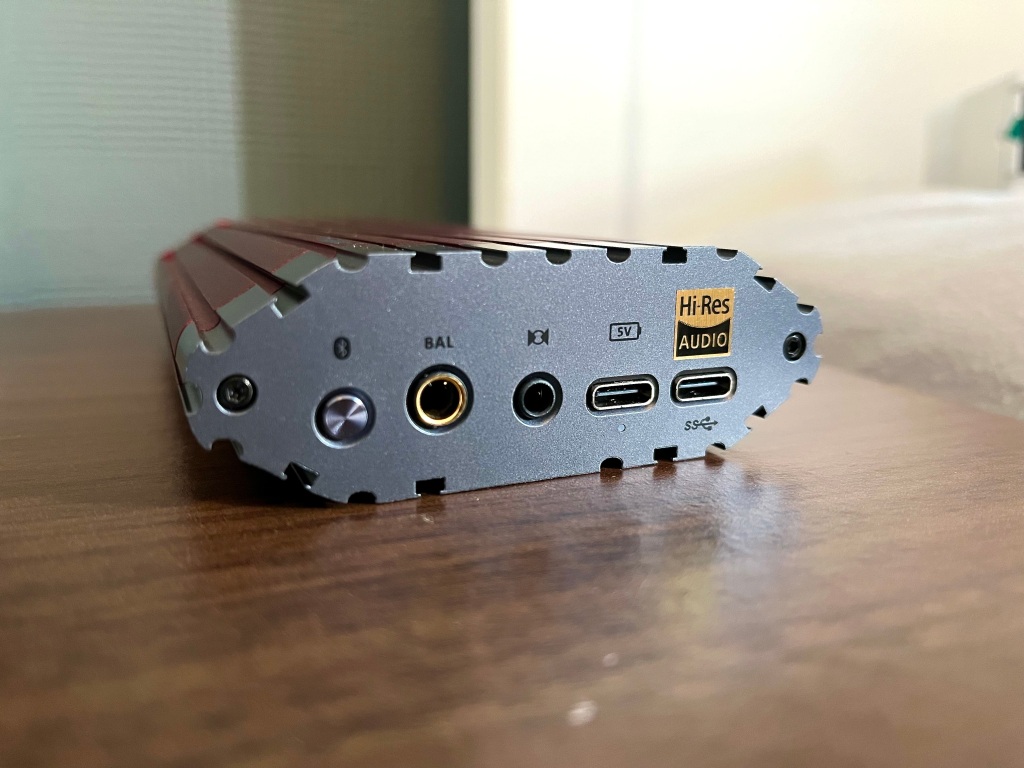
Overall, in terms of performance, the Diablo 2 is incredibly similar to its predecessor, the Diablo 1. Very similar sonically, with some nice improvements in terms of build quality, and implementation of features. My main issue is that the MSRP of the Diablo 2 has increased to $1299USD compared to $899USD for the Diablo 1. At $899 for the Diablo one, I felt it was a good product, but was even starting to wonder if it was increasing too much and moving away from iFi’s previous core tenents. I’ve always felt iFi was a brand that delivered very high performance for the asking price, combined with Swiss army knife-like feature sets. Their gear always sounded good, was affordable, and offered a lot of features for the money. The Diablo 2 sort of feels like a car crash with regards to all of those previous things I valued about the brand. The Diablo 2 sounds incredibly similar to the Diablo 1, it has a new feature in the X-MEMS support (but next to no one has X-MEMS IEMs at this point in time) and beyond a new look and slightly better-built case, doesn’t really offer anything of note over the previous version, but costs $400USD more? I like iFi audio, I am a supporter of the brand, and I hope they can quickly course correct and move back to being focused on the things that brought them most of their success in the headphone space in the first place. A focus on quality, affordability, good feature sets, and if a new product is released, to make it a meaningful improvement over the previous version. When you combine this with the fact that Adorama in the USA had the Micro iDSD Signature (Finale) on sale for $350USD brand new, it becomes damn near impossible to recommend the Diablo 2. For me to recommend the Diablo 2, your use case would have to be incredibly specific.
If you
-Use XMEMS IEM’s
-Also use hard-to-drive headphones
-Do not want desktop-size equipment
-Need transportability
-Are not budget limited
then I could make a recommendation for the Diablo 2.
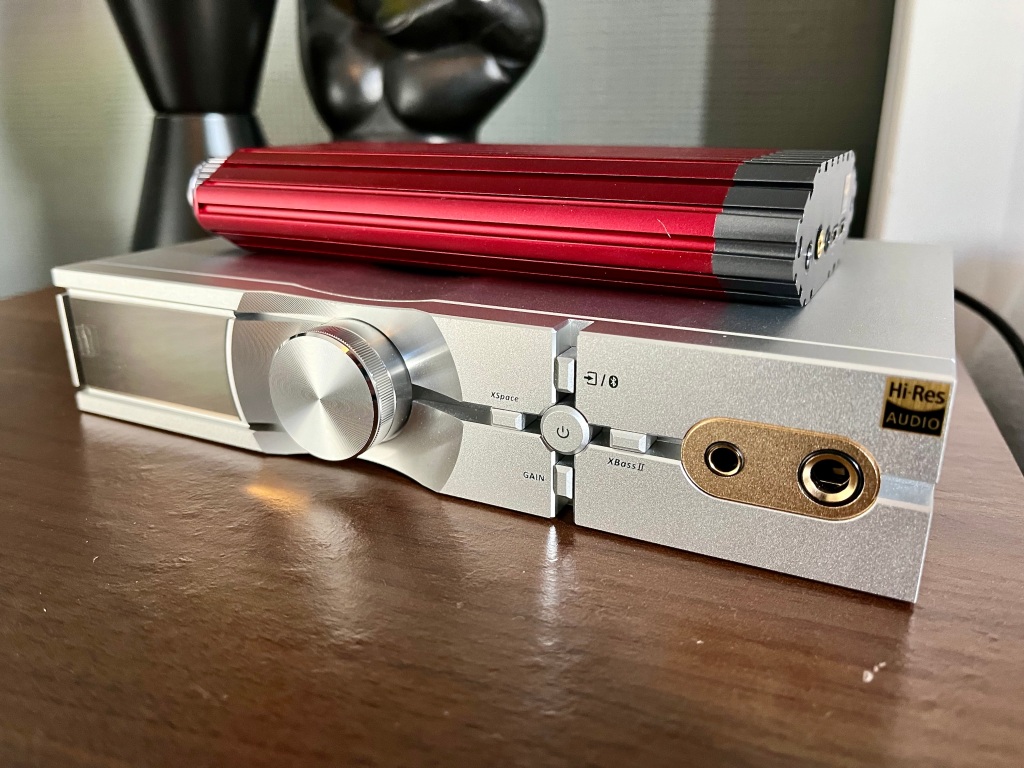
I don’t dislike the Diablo 2 in terms of its strict sonic performance, it just feels like a missed opportunity for iFi Audio. It still sounds good like its predecessor did, it has great power output for a portable device (with the caveat of the peak vs continuous power taken into account,) and it feels sturdy and well-built. However, the Diablo 2 costs too much at its MSRP, to the point of making me feel that iFi is being opportunistic, and also seems to be a summation of iFi’s abandonment of the company’s previous values and core beliefs. Those previous values and core beliefs about their product lineup and design direction were what made them great, and a fan favourite amongst the headphones enthusiast community. I do have the new Neo iDSD 2 here for review, and I do feel more positively about it than I do the Diablo 2, so I hope iFi is not a lost cause, and the ship can be turned around and get back to heading in a good direction.
ufospls2
Headphoneus Supremus
Pros: Detail
Transparency
Speed
Transparency
Speed
Cons: Stock tuning
Upper mid range peak
Upper mid range peak

Introduction
Hi Guys,Today we are taking a look at the most recent flagship planar magnetic headphones from Giant in the space, the LCD-5 from Audeze. Audeze made their name as part of the early planar magnetic headphone resurgence about a decade and a half ago with headphones like the LCD-1, and original LCD-2. Since then, in terms of flagship headphones from Audeze, we have seen the LCD-3, LCD-4, and LCD-5. I have owned the LCD-3 and LCD-4 long term and was really interested in what the LCD-5 was like as it was such a massive departure from both their signature design and past tunings. The original LCD series were typified by their wood rings, heavy build, and usually relaxed and warm tuning (to varying degrees.) The LCD-5 has moved away from that entirely, being much lighter, and slightly smaller physically, with a much more upper mid forward and neutral type of presentation sonically. Tuning-wise, the LCD-5 is very similar to Audeze’s co-flagship headphone, the electrostatic CRBN (which I reviewed a few months back.)
Tuning
In general, I wasn’t a huge fan of the stock tuning of the CRBN, but found with EQ it became an incredibly enjoyable pair of headphones. Due to the LCD-5 being so similar in terms of stock tuning, this was the case again. The overall sound of the LCD-5 does differ from the CRBN in some ways, but overall in terms of tuning alone, they are very similar. I’ll speak about the tuning in its stock form, and then about EQ in relation to the LCD-5 afterwards.The low end of the LCD-5 is entirely neutral. No recession, no boost. This is pretty common amongst planar magnetic headphones, and the LCD-5 is no exception. In previous LCD models, the bass was always a strong point, but could at times be slow sounding. The LCD-5 is the fastest and most accurate of all the LCD headphones in terms of bass. Impact/slam is one aspect that surprised me. The LCD-5 isn’t far away from the Abyss 1266TC in this area, and the 1266TC is the best on the market with regards to slam/impact. As with most headphones, I prefer a low shelf of some sort(adjust to personal preference obviously) to be applied via EQ as I prefer a more robust bass response than the LCD-5 has in its stock tuning.
The mid-range of the LCD-5 is incredibly similar to the CRBN and incredibly different from past LCD models. In terms of the low mid-range, it is much more neutral, less warm, and “gooey” for lack of a better term. The upper mid-range is very similar to the CRBN with a massive 3khz peak. This is also a departure from the much more recessed upper mid-range of previous LCD models. The 3khz peak is too much for me, and I adjusted that area via EQ. I think that the perceived overly forward upper mids nature of the LCD-5 is partly due to the 3khz peak, but also due to the much more subdued low end and treble than would normally be paired with such a peak. I found the 3khz area much less problematic if I simply boosted the low end and treble, but overall, preferred if it was slightly lowered via EQ. I think this upper mid-range is down to personal preference, and what is too much for one person might be just right for the next. As with the bass, the overall transparency, speed, and detail of the driver help convey the mids very well.
The treble of the LCD-5 is again, fairly neutral. It isn’t overly boosted or overly recessed. The treble is quite similar to the previous LCD models, perhaps being slightly less pronounced. For me, it isn’t enough overall in terms of level. I think that in combination with the very forward upper mids, it makes the treble come across as being less pronounced than it actually is. Again, this is something that is easily remedied with EQ, tweaked to personal preferences. The treble is very transparent and detailed, as with the rest of the frequency response.

Technical Performance
In terms of technical performance, the LCD-5 is a big step forward in most areas compared to previous LCD models, and a step back in some other ways. It is without a doubt the most detailed, transparent, impactful, and clean-sounding driver Audeze has come up with thus far. I even think that it slightly edges out the CRBN in terms of overall detail levels and transparency, which is impressive given the CRBN is an electrostatic headphone. The LCD-5’s soundstage is less grand sounding than the LCD-4, and I feel this is something some people might miss. If I had to come up with an analogy, the LCD-4 is a big cozy armchair that envelops you, and the LCD-5 is a carbon fiber racing bucket seat with a 5-point harness. The LCD-5 is the higher-performing headphone, but there is something to be said for the LCD-4 and other LCD series more laid-back nature. Overall the technical performance of the LCD-5 is incredibly impressive.As I have mentioned previously, the stock tuning out of the box with the LCD-5 is not personally for me. It is too forward in the upper mids and lacks low-end and treble presence for my taste. The thing is, the LCD-5 has incredibly low distortion and takes to EQ very, very well. I didn’t end up doing anything drastic, and it turned it into a headphone I greatly enjoyed. I just applied a low and high shelf, and slightly reduced the 3khz peak. With these adjustments in combination with the slam and impact I mentioned speaking about the low end, the LCD-5 sort of reminded me of the Abyss 1266TC. In a way, like a more focused smaller sounding 1266TC.

Build Quality and Comfort
The build quality and overall design are also a massive departure from previous LCD series headphones. Gone are the classic wood rings, replaced with acetate tortoiseshell. Gone are the big sumptuous leather pads, replaced with fluted leather. The overall size has shrunk, I would guess by about 10%. The LCD-5 does feel slightly smaller on your ears than the previous LCD series headphones. The headband is carbon fiber, to help achieve the weight savings that the LCD-5 has managed. With the LCD-4 you were looking at around 700-710 grams for the headphones, and with the LCD-5 that has been reduced to 420 grams. I feel that 420 grams is much more reasonable, and I haven’t had any issues with comfort over my time with the LCD-5. They are not as comfortable as something like the Meze ELITE (and empyrean) which are still the gold standard in my opinion for headphone comfort, but they are entirely usable for long periods without discomfort. The LCD-5 comes with a very nice and well-made braided cable terminated in 4-pin XLR, with a 4-pin XLR to 6.35mm TRS adapter. This has you covered for most uses, and a cheap 4-pin XLR to 4.4mm Pentaconn adapter from Amazon would round that out nicely.One thing to mention about the LCD is that it is much different from previous LCD series headphones in terms of sensitivity and impedance. The LCD-4 was a headphone with a 200ohm impedance and a 97db/mw sensitivity, whilst the LCD5 has an impedance of only 14ohms and 90db/mw sensitivity. This is worth taking into consideration as although the impedance has massively reduced, the sensitivity is much lower. It will take some experimentation to find out which amp works best for your uses, and whether or not you will be using it in a portable setting, etc…For example, due to the uncharacteristically low impedance, I ended up having to use the iFi Diablo 2’s single-ended output instead of the balanced output, as I was hitting the current protection and the unit was shutting off with the balanced 4.4mm out, but there were no issues using the single-ended output. This will entirely depend on the gear you are using, so experiment and see what you find works best.

Comparisons
In terms of comparisons with the LCD-5 being the current flagship planar magnetic headphone from a juggernaut in the space, it makes sense to compare it to other options.Compared to the Hifiman Susvara, the LCD-5 is more aggressive and less laid back. It is slightly less detailed than the Susvara but does have more impact, whilst also being more focused sounding with a smaller soundstage. Of the two, I prefer the Susvara, but the LCD-5 is much easier to drive, and also 1500USD cheaper at MSRP.
Against the Abyss 1266TC, there are more similarities than you might expect (if EQ is applied.) The LCD-5 is slightly less detailed but does come close in terms of impact and slam. The 1266TC has a much bigger overall sound and soundstage but is heavier and slightly less comfortable. These are both very different headphones, with a few similarities in terms of technical performance if the LCD-5 is used with EQ. Again, there is a large difference in cost at 4500USD for the LCD-5.
The Meze Elite is the closest comparison in terms of MSRP, with the ELITE being 4000USD, and the LCD-5 being 4500USD. The Elite actually sort of reminds me more of the LCD-4 in terms of tuning, being slightly warmer and laid back in its overall nature. The LCD-5 is more detailed, with more transparency, impact, and slam. The ELITE is grander sounding, with a bigger sonic image and a much bigger soundstage. Comfort goes to the ELITE, but it is a class leader in this area.
Compared to Audezes co flagship, the CRBN, the LCD-5 has an incredibly similar frequency response. It has a smaller soundstage, especially in terms of soundstage height. It is very slightly more resolving and transparent than the CRBN, which surprised me due to the CRBN’s electrostatic nature. The big plus for the LCD-5 is the lack of need for an electrostatic amplifier. I’d be very curious to see Audeze try a Planar Magnetic headphone in the form factor of the CRBN, that could be a real winner.

Conclusion
Overall, the LCD-5 is a very interesting addition to Audeze’s lineup and a very big departure from their previous LCD series headphones in general. It is a much physically lighter and smaller headphone, with an entirely different tuning. I am not a fan of the tuning of the LCD-5 in its stock form, with it being too upper mid-forward, whilst lacking low and high end for my personal preferences. However, after applying EQ to make it more in line with my personal preferences, the LCD-5 became an incredibly enjoyable headphone to listen to. It is very detailed, transparent, and has a surprising amount of impact/slam. Overall comfort levels and weight in particular are a big improvement over the previous LCD headphones, but at times I did miss that sumptuous feel that the LCD4 had, for example. In a way, it is like a big comfortable 1980s Bentley Turbo R vs a 911 GT2RS. Both are great, just very different. With regards to the stock tuning not being my preference, I know that there are people out there who love the LCD-5’s stock tuning, so I would highly recommend you give them a try if you are not sure. You may not feel the need for EQ, and the stock tuning might be right up your alley.I’m really curious about what is next for Audeze, especially with their recent acquisition by Sony PlayStation. The LCD-5 is a great addition to their lineup, but I’d also like to see them continue to experiment with other tunings and form factors (like the CRBN) whilst trying to maintain the level of technical performance the LCD-5 has achieved. Great stuff Audeze!
tamleo
The ugliest headphone I have ever seen. With the price I will buy a focal utopia lol
A
alekc
I am really missing MM-500 in this review, especially since ifi diablo has been mentioned. I have been listening to MM-500 and LCD-5 with micro idsd siganture and there was almost no difference in some aspects like detail retrival. Yet the tunning of MM-500 brought me a lot more joy not to mention the price difference. I also disagree with Susvara vs LCD-5 description. On Envy Performance edition LCD-5 are nowhere near Susvarna or T+A both Solitaire versions. Overall thank you for interesting review and nice read 

YungOmbat
so many negative opinions on lcd 5 lol
ufospls2
Headphoneus Supremus
Pros: Build Quality
Usability after update
Bass quality
Usability after update
Bass quality
Cons: 3khz peak
Slightly less treble than I prefer personally
Slightly less treble than I prefer personally
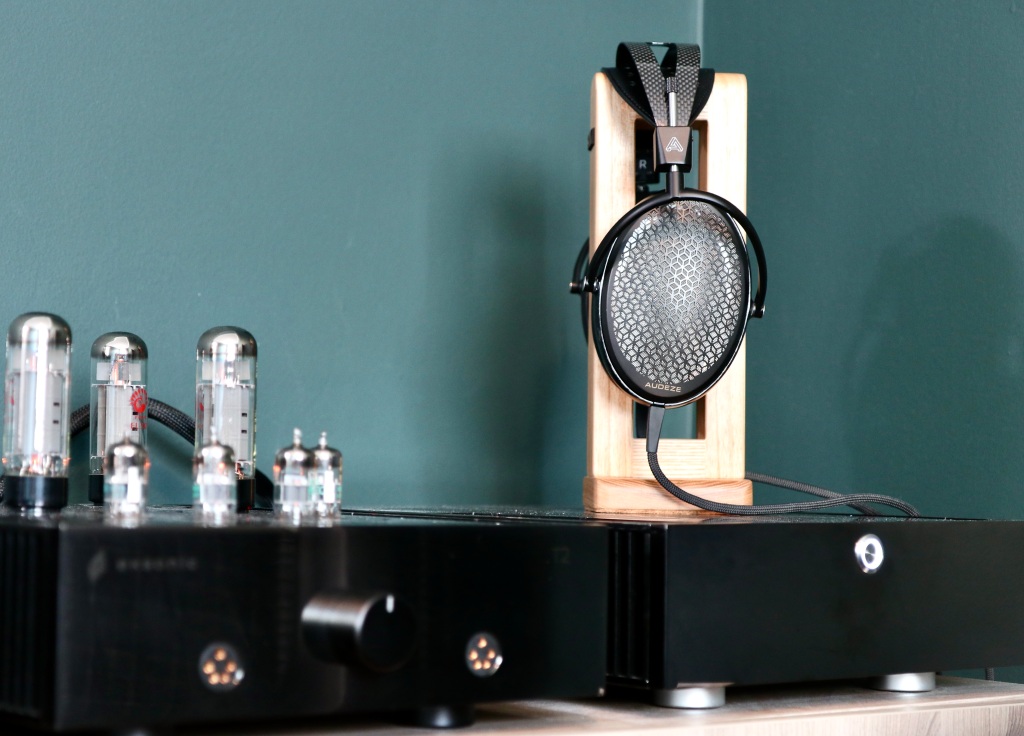
Introduction
Today we are taking a look at a very interesting headphone from Audeze. Now, the immediate assumption is that if a headphone is an Audeze, it’s a Planar Magnetic. In this case, however, The CRBN is an electrostatic pair of headphones, Audezes first foray into this product category. The CRBN, and more specifically their driver technology, is slightly different from traditional electrostatic headphones and is derived from a driver that Audeze made for use in MRI machines. This meant that no metal could be used within the driver’s makeup. Audeze has instead used carbon nanotubes throughout the driver (to provide conductivity as far as I understand) and as such, this is where the name CRBN comes from. Overall, whilst it’s a very neat concept, I’m more concerned about how an individual pair of headphones sounds, vs. being worried about the technologies used to create it. With that being said, I give Audeze a ton of credit for continuing to try and improve and innovate, and coming up with creative solutions for headphones.Past History vs. Now
Now, I have a bit of a history with the CRBN itself. Both positive and negative. I’d recommend reading through the entire review, as the CRBN has seen a change over its lifetime, and this directly impacted my overall opinions about the product. I originally purchased a pair of CRBN a few months after their initial release, and they were delivered a few months later. That first pair was entirely broken, but no worries, headphones.com swapped it out for another unit they had in stock, which was great. This pair was entirely functional and what was to be expected from a CRBN at that point in time. The problem was that…..it wasn’t really usable in an overall sense, at least not easily or as you would expect, even from a typical electrostatic headphone. Audeze made a statement that the drivers were tensioned slightly more loosely than other electrostatic headphones in order to provide a more full and robust bass response. The CRBN did have a slightly more robust low end, but in my opinion, it wasn’t that much more than neutral, and the trade-offs in terms of usability of the headphone were not worth the payoff in terms of low end.The main problem was that due to the looser driver tension, the drivers would stick to the stators when listened to at a medium-high volume level or above, and distort. Now, due to the way the driver is made with the carbon nanotubes, no damage will occur from it sticking to the stators, but it will directly impact the sound and distort. Not good. In addition to that, any air pressure change inside the extremely well-sealed cups would cause the CRBN drivers to stick to the stators, and again distort. Again, due to the extremely good seal the CRBN pads provide, even slight head movements, could cause this to happen. I usually do my concentrated listening lying in bed at night, and any small movement of the headphones against the pillow would cause a loud driver flex noise, usually a loud cracking type of noise, and the driver would stick to the stators. Each and every time the driver of an electrostatic headphones sticks to the stators, you have to unplug the headphones, short the pins on your thumb or similar to de-charge the diaphragms and then plug them back in to go back to listening. With the CRBN in its original form, this was happening every couple of minutes or so. It was incredibly frustrating. Audeze has great customer support, but as the headphones were functioning within their expected performance at that point in time I ended up selling them to someone who could make better use of them, as they might listening differently than I do.

Over time, there were many similar reports to mine of people struggling with the same issues on various headphone forums, head-fi in particular. Around April of 2022, some rumours began circulating, that Audeze had made some changes to the CRBN and how their drivers perform. I was never able to receive direct confirmation from Audeze whether this had happened or not beyond a statement saying they had “streamlined the CRBN driver production.” Still, there were enough reports of it on Head-Fi, and users reporting that they had sent their headphones in to Audeze to be looked at, and received them back entirely absent of all the diaphragm sticking issues they had before, to make me curious. I ended up purchasing a pair of CRBNs that were a post-April 2022 manufacture date, to see if there was any validity to the claims of changes to the manufacturing of diagrams. My best guess is that slightly increased the tension of the diaphragm to avoid the issues of the early models.
Thankfully, the more recent pair of CRBNs had next to no issues. I managed to get the drivers to stick two times, once was with a fairly substantial bass boost at higher volumes, and another was due to a random head movement that cause the seal to break. Overall, the CRBN was now an entirely usable functional electrostatic headphone, it acted as my other electrostats did, and had no real issues in terms of overall usability. Audeze now seems to have companies list the CRBN as being the “2023 update.” Someone on head-fi confirmed that this was in reference to the driver changes that appear to have been made around April 2022. Again, I’m not operating off of direct knowledge here, just best-guess dates based on others’ experiences and interactions with Audeze. Overall, I would have no hesitation recommending someone try the CRBN now, with regards to production quality and overall usability of the drivers. Also, I know that if you do have an old model, made near the beginning of their production, if you send it in to Audeze they will update it to the most recent specifications. For anyone out there reading this, if you have a pair of early CRBN, and are struggling with this issue, I would highly recommend sending it in to Audeze. The update made them much more pleasurable to use.
Now, with all that backstory and information out of the way, the real question is how does the CRBN sound?
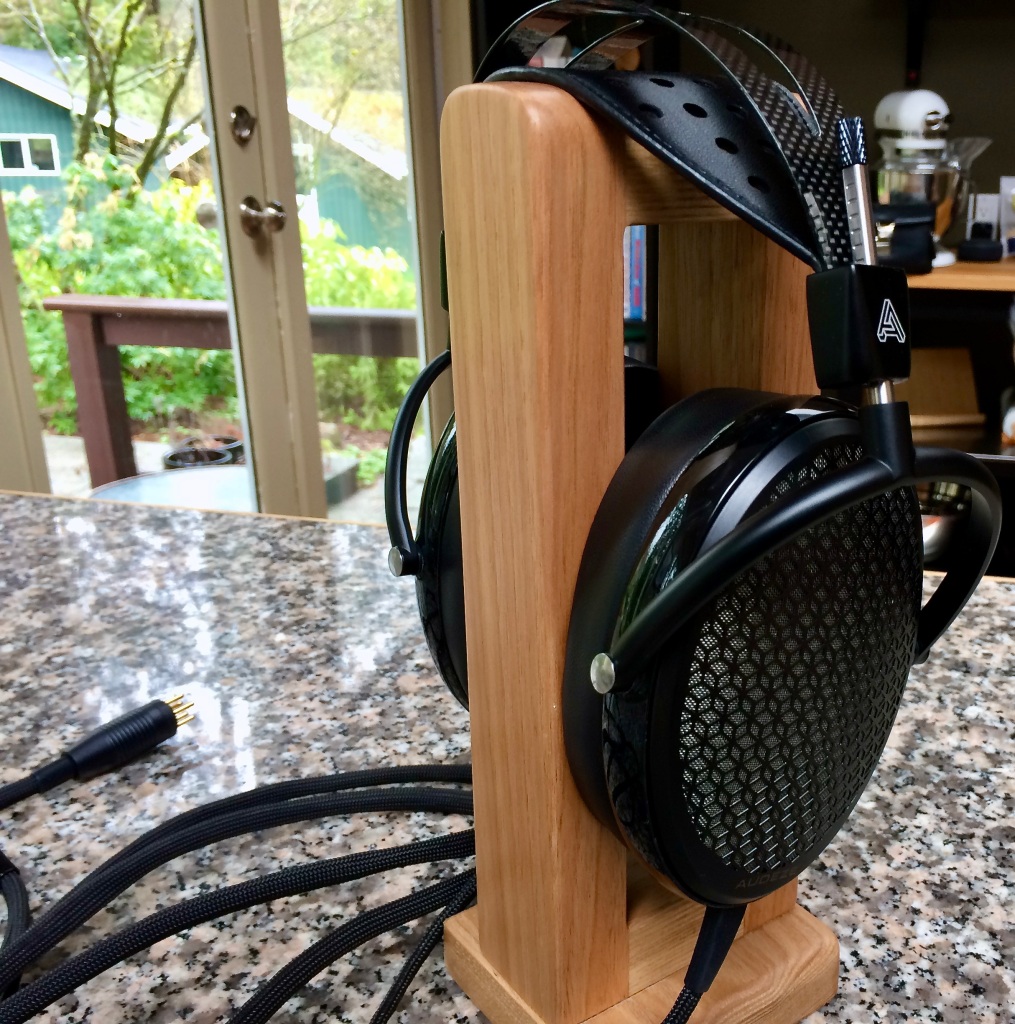
Tuning
The bass of the CRBN is certainly a slight improvement over some electrostatic headphones. In particular, the SR-009 comes to mind. Much more physicality to it, and a slight increase in terms of level. Still, I don’t want to give the impression the CRBN is a bass monster, because it isn’t. I always ran the CRBN with a 3db low shelve, as I always prefer a more robust bass response over the more neutral response from most electrostatic or planar magnetics. In some ways, the CRBN makes me think of planar magnetic bass, more than electrostatic bass. It is quick, fairly dynamic and hard-hitting, though not as much as something like the AB1266 from Abyss, or the HE6 from Hifiman. I think that part of the reason the CRBNs bass is as well done as it is due to the incredible seal achieved with the CRBNs pads. They are without a doubt the best sealing electrostatics I have experienced, and this might contribute to that real physical feeling from the low end.The mids of the carbon are hit-and-miss for me. In the low and middle midrange, I’d say that the CRBN are pretty much dead on neutral. No real warmth in the low mids, and definitely no suck out in the middle. My issue is with the upper mids of the CRBN, and it is my overall biggest gripe with their stock tuning. The 3khz peak. It is way too forward for me personally. Gives everything a shout and bite to it that I just can’t get on with. Some people enjoy this forward nature in this area, but for me, it just makes things tough to listen to. Thankfully, EQ resolved the issue entirely for me and took the CRBN from a headphone I couldn’t really enjoy, to one that had a ton of good things going for it. I would highly recommend trying the CRBN prior to purchasing them if you can, and if not, be open to giving EQ’ing them a try. It made all the difference for me.
The highs of the carbon are what I would consider very slightly less than neutral. Not enough to consider them a dark headphone, but they are not bright or strident headphones. Again, I ended up boosting the highs entirely with a high shelve by about 2 dB, and that brought them into my personal preference range very nicely. In some ways, the highs in their stock tuning remind me of the HD600/650. If you tend to prefer a bit more air and sparkle from your headphones, I would again recommend trying the CRBN prior to purchase or be open to trying out EQ. Again, this was an area that after a little tweaking via EQ, took the CRBN from a bit of a “not for me” to a “this is actually really, really good” headphone.
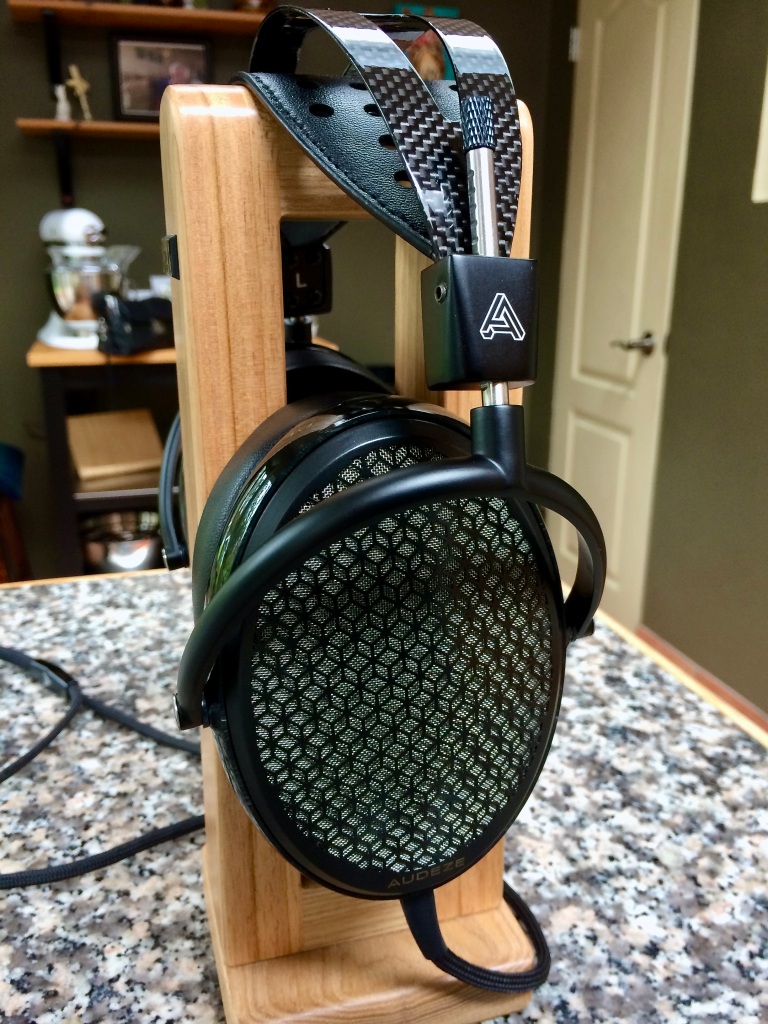
Technical Performance
In terms of technical performance, the CRBN is clearly high-end. I don’t think they reach the sonic heights that the Stax X9000 and Hifiman Shangri-la Sr. reach, but comparing them to other headphones in their price range, I think they stack up well. Overall detail levels remind me of the LCD-4 (I have not heard the LCD-5 yet) and the CRBN always seemed to do better with the “macro” than the “micro” both in terms of detail and dynamics. Again, this sort of reminds me of the characteristics of some planar magnetic headphones and contributes to my feeling that the CRBN is the most planar magnetic sounding electrostatic headphone on the market. The soundstage of the CRBN is very tall, perhaps due to the driver shape, and what I would describe as very slightly wide. It is not a large open soundstage like the X9000 or Shangri-la, but also not a very close up and front-row type of soundstage like the Focal Utopia. The CRBN has a good amount of punch and slam to it, but I would describe it as similar to the LCD-4 in this way, and not as hard and fast in terms of slam as the HE6 from Hifiman or 1266TC from Abyss.Build Quality
The build quality of the CRBN is next level. Really, and I don’t say this lightly, I think the CRBN is the best-built headphone I’ve come across so far. It just exudes class and quality. It feels incredibly solid and well put together, the pads are deep and sumptuous. Comfort levels are very good, and the clamp force is just enough to provide their great seal, but not too much to be uncomfortable. Overall the CRBN gets an A+ from me in this area. Really well done Audeze.The CRBN is slightly difficult to drive in terms of electrostatic headphones. You will be well rewarded for providing them with an amplifier that can provide good, and consistent power. Things like the Headamp BHSE, Eksonic T2, KGSSHV Carbon are all good options. I think at the least I would recommend a KGSSHV for the CRBN (or similar.)
Comparisons
Compared to the headphone it is directly competing with, the Stax SR009S, the Audeze strikes an entirely different sonic signature. The Stax sounds like an electrostatic headphone and does all those typical traits very well. The CRBN has a better more robust low end and does not have the typical electrostatic air and sparkle in the high end. After a bit of tweaking via EQ, I think the CRBN would be my overall preference between these two headphones.Compared to the LCD-4, the CRBN is similar in some ways but very different in others. The LCD-4 has “old Audeze” tuning, and the CRBN has “new Audeze” tuning if you will. The LCD-4 is much more laid back and relaxed, it is a warm hug of a headphone compared to the CRBN in its stock tuning. I think the CRBN wins in terms of overall detail levels and technical performance, but the LCD-4 is the right choice for someone who wants a laid-back listen that remains well detailed. I would be really curious to see Audeze continue to develop on the electrostatic side and perhaps do a CRBN Classic, which is tuned like the classic Audeze models. I think that might sell very well for them. Only time will tell if the market wants that product I suppose.
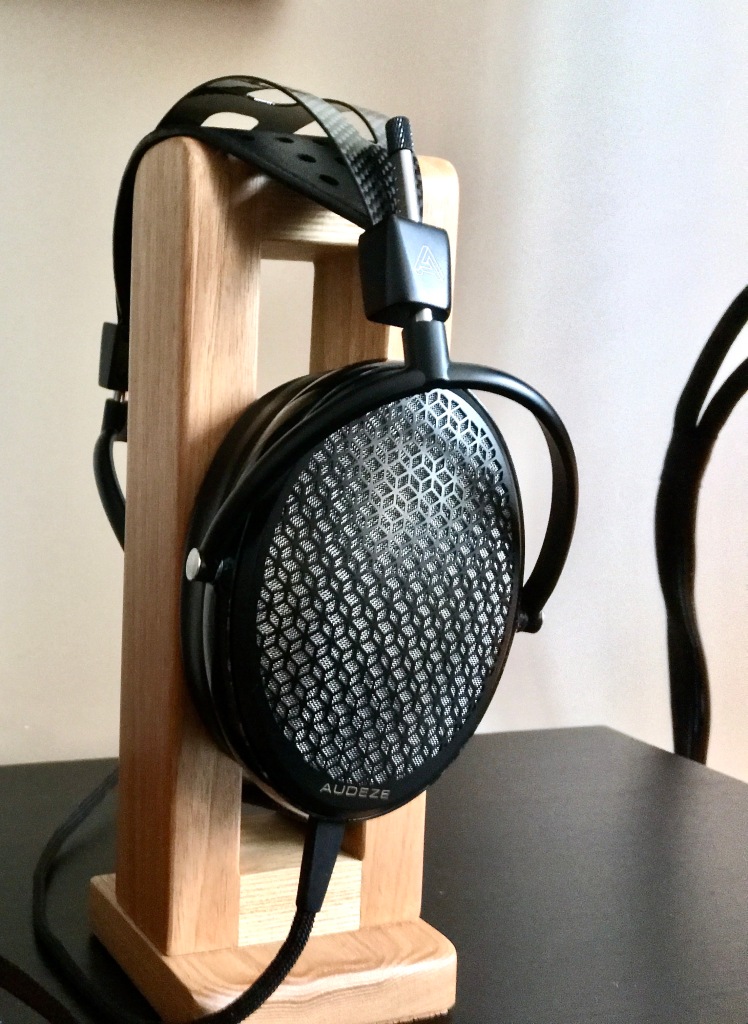
Conclusion
Overall, the Audeze CRBN has been a bit of a saga for me. It didn’t really start out all that well, but Audeze has put the CRBN right and really has a good headphone on their hands now. Though the stock tuning isn’t personally for me, with some tweaking with EQ, the CRBN becomes an immensely enjoyable headphone to listen to. It is also the best built and high-quality feeling headphone I have come across so far, whilst remaining very comfortable for longer listening sessions. Nowadays, I can definitely recommend the CRBN if you either enjoy a mostly neutral tuning with forward upper mids. Also, if you are willing to EQ to your preference, the CRBN takes well to it, whilst retaining very good overall technical performance. The CRBN had a rocky start, but I definitely would recommend it these days, if you take into account the aforementioned points about tuning and personal preferences.ufospls2
Headphoneus Supremus
Pros: Overall sound quality as a TWS earphone
much improved ergonomics over the RE2000 series
much improved ergonomics over the RE2000 series
Cons: Slightly peaky treble, better with EQ
Price vs other TWS on the market (perhaps sale in the future?)
Price vs other TWS on the market (perhaps sale in the future?)

Introduction
Hi Guys,Today we are taking a look at a new true wireless set of earphones from Hifiman, the Svanar Wireless. Hifiman recently released their new top-of-the-line earphones, simply called the Svanar, which are a replacement for their RE2000 Gold earphones which were released around the same time as the Susvara headphones (2017.) I enjoyed and bought both the RE2000 Gold, and RE2000 Silver, and was curious what the new Svanar TWS might bring to the table in terms of performance whilst being an entirely different product category (wired vs wireless/Bluetooth.) For the rest of the review I will just refer to the Svanar TWS as the Svanar, but please keep in mind I am talking about the TWS version, not the much more costly and high-end Svanar wired.
The RE2000 Gold and Silver are one of my favourite earphones that I have heard or owned still to this day. They have a slightly V-shaped signature, great bass performance in terms of quality, and good detail and technical performance across the board. They did lack slightly in terms of comfort compared to other more ergonomic earphones, but in terms of sound, they did a ton of things right. The Svanar seems to build on the design ideas behind the RE2000 series, whilst of course adding many different technologies and ideas, being a TWS set of earphones. They both use the same “topology diaphragm” and although I’m assuming there have been changes over the years, the basic principle is the same. It is a single dynamic driver, vs multiple balanced armature drivers, or something like a tribrid or quadbrid setup that many earphones feature these days.

Technical Information
In terms of basic overall principles, the Svanar is similar to other TWS sets of earphones. They come with a case that they live in, which can also charge them. Being TWS, they have a DAC, amp, and battery built-in, and run entirely wirelessly from your phone, tablet, computer, or other source of choice. You can charge the battery in the case via USB-C, which will then charge the earphones when they are placed in their receptacles. The Svanar has three different listening modes, “High Fidelity,” “ANC,” and “Transparency.” High Fidelity turns off all DSP-like noise cancelling and provides the best overall sound quality. ANC is noise cancelling, providing up to 35db of reduction in ambient noise, which is very handy on something like a plane journey. Transparency mode activates the microphones in the earphones and lets you hear what is going on in the world around you as if you don’t have earphones in your ears. For most of my listening, I stuck with High Fidelity but did try and simulate an airplane environment with a portable AC machine, and it performed very well, reducing ambient noise significantly. I didn’t use the transparency mode very much, but it does function as intended and lets you hear conversations and such if you need to talk to someone or hear what is happening around you.The built-in DAC of the Svanar is based on Hifiman’s new “Hymalaya” DAC architecture. It is an R2R-based DAC, and from what I understand is supposed to be similar to, but improve upon the PCM1704 DACs of days past. In the context of the Svanar, it is hard to say exactly how it sounds, as the earphones are a contained system, and you are unable to hear the DAC on its own, rather hearing the combination of the transducer, amp, DAC, wireless transmission altogether. With that being said, I do think it’s neat that Hifiman is doing more than simply trying to create headphones, and really do seem to be trying to innovate in other areas. Perhaps someday they will release a standalone DAC featuring the Hymalaya architecture, it would be interesting to hear how it performs in that context.
Now, the most important thing is how do the Svanar actually sound? In short, extremely good for a TWS earphone. The juggernaut of TWS, the Apple Airpod Pro are bested by the Svanar, that much was obvious to me.
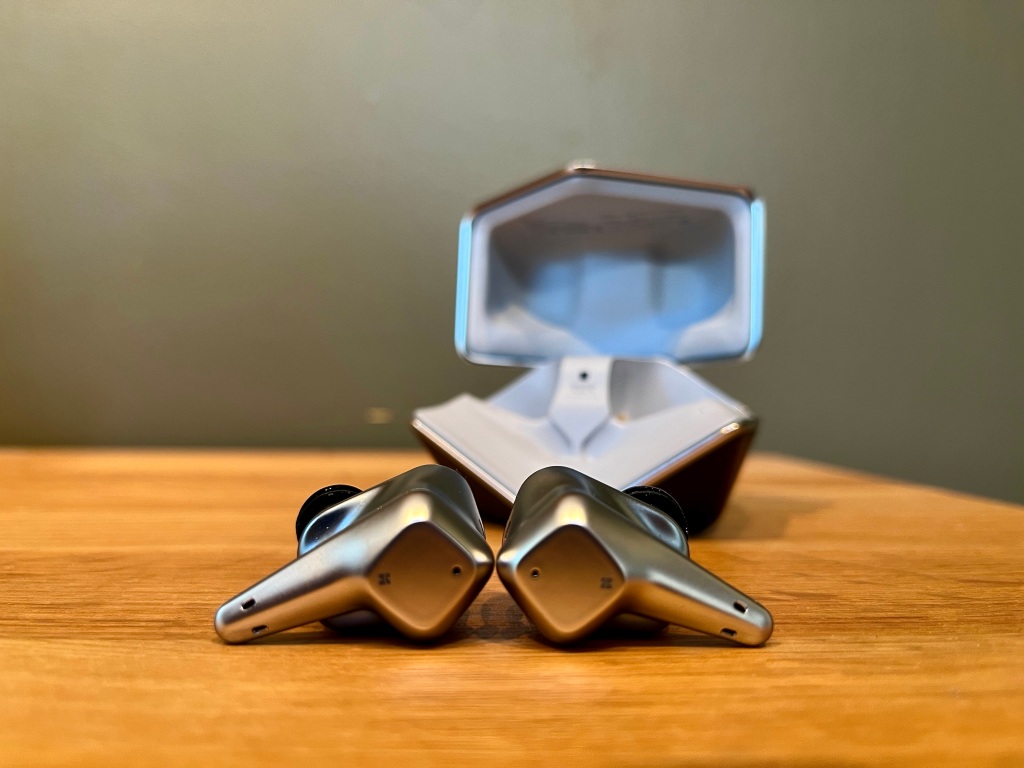
Tuning/Frequency Response
The bass of the Svanar really reminds me of the RE2000 series. It is slightly elevated, definitely slightly more than neutral. I enjoy a fairly large amount of bass, usually EQ’ing it up on headphones a little bit via a low shelf, and the Svanar didn’t need any EQ increase in the low end for my personal preferences. I do think that being a single dynamic driver, it is common for the bass performance in terms of impact, slam, and speed to be quite a bit better than balanced armature drivers, and that is the case with the Svanar. It is not the absolute most refined or “best” bass I have heard from an earphone, but at this price point and considering the number of other features with the Svanar being a TWS pair of earphones, I was entirely satisfied with the low-end of the Svanar.The mids are slightly more present in the low mid-range than I remember the RE2000 twins being, but that is based on memory so I could be incorrect in that assessment. In the middle of the mid-range, it’s slightly pulled back from neutral, which is similar to the RE2000, giving a slightly V-shaped signature when combined with the treble. Overall, if you prefer a warm and thick midrange, I don’t think the Svanar is the right choice if you aren’t ok with EQ’ing. If you are like me, and listen to lots of electronica, the Svanar really works well with that genre, as well as things like rock, metal etc…
The highs are slightly brighter than I remember the RE2000 being. There seem to be a couple of peaks in the treble and I played about with EQ to bring those down slightly. Once some measurements are available I would be able to pinpoint these peaks a bit more accurately, but I ended up trying 4khz and 8khz down about 1db each, and that seemed to help things. Without that EQ, I could see these really suiting someone who loves a brighter treble response, but for me, it got a bit fatiguing and harsh on certain poorer-quality tracks, especially over long listening sessions.
Technical Performance
The Svanar has very good technical performance for a TWS pair of earphones. The best I have personally heard, and as mentioned before I do think they sound better and perform better technically than the Apple AirPods Pro. They are quite detailed and do have a good amount of dynamic impact and slam, probably partly due to their single-dynamic driver nature. I do think that the RE2000 Gold is a bit better in terms of overall technical performance, but that does also depend on the overall system, as comparing non-true wireless earphones to wired earphones is very difficult to do on an entirely level playing field.Build Quality and Ergonomics
The Svanar are very light and very comfortable. Much more ergonomically shaped than the RE2000 and comfortable for longer listening sessions. The only thing I found was that the “antenna” if you will, the long part of the earphone did slightly press into the area right below my ear, but it wasn’t enough to annoy or cause pain over time. The earphones are mostly made of plastic, and the back plate seems to be made from carbon fibre of some form. In terms of ear tips, I ended up using the double flange Hifiman tips, as I felt that gave the best sound quality overall. If you are going to be on a flight or have an ear shape that requires a bit more insertion depth, trying a pair of triple flange tips is worth your while. They will help provide more seal, and still sound very good, though not as good as the double flange tips, in my opinion. The storage and charging case seal magnetically, and the earphones pop in easily, also magnetically, which connects them to the battery to charge. You can charge the case via USB-C, or wirelessly via a charging pad.The codecs available for the Bluetooth function are LDAC, AAC, and SBC. You can easily and quickly change between the listening modes by pressing the left earbuds faceplate for 3 seconds, allowing you to change between High Fidelity, ANC, and Transparency. When the battery power falls below 10%, you will hear a prompt saying “Low battery, please charge” every couple of minutes.

Conclussion
Spending time with the Svanar TWS has honestly been a real change of pace for me, I’m usually listening to wire headphones, and the TWS nature and overall usability of the Svanar TWS has been great. They sound very good for a pair of TWS earphones, though do lag behind slightly in terms of overall sound quality vs their older RE2000 siblings. With that being said, it has to be taken into account that they are an entirely different product category and do what they do within that category extremely well. Perhaps not the best choice if you are simply looking for the best-performing pair of earphones regardless of price or features, but if you want a pair of awesome sounding TWS earphones, with all the convenience that comes with that genre of product, then the Svanar are absolutely, 100% worth trying. I’m really looking forward to seeing what Hifiman comes up with over time in their wireless range, and if they are able to continue to create great-sounding products, that also have all the “mod cons.”ufospls2
Headphoneus Supremus
Pros: Clean clear and crisp sound signature
love the blue finish
love the blue finish
Cons: seperate data and power, with no option to combine the inputs
no fast charging, meaning wont work from laptop to charge
no fast charging, meaning wont work from laptop to charge

Hi Guys,
Today we are taking a look at a product that is a first for me, from a company called EarMen. EarMen is a Chicago/Serbia based affordable portable audio based sub company of Auris Audio, a maker of high end tube gear. The piece of gear in question is called the Angel, a portable DAC/Amp combo unit. I have a fair amount of experience with pieces of equipment similar to this, particularly from iFi Audio, so I was really interested to see what EarMens take on the product type would turn out like.
The Angel itself is a fully balanced unit, with two gain modes and both single ended and balanced line out options on the rear. It comes in a very striking anodized blue finish, with both 4.4mm balanced and 3.5mm SE outputs on the front. The DAC section of the Angel is based on the ESS ES9038Q2M chip, is 768khz/32bit capable, and also DSD and MQA capable. The data and charge inputs are separated, and on the rear of the device. I’m honestly not a huge fan of separating the two on portable devices, but I do understand why companies tend to go this route. It is usually done to help separate noise issues from the power section from the data stream of the unit. Still, on portable pieces of gear I find it really handy to have them combined, and only having to bother with one input cable. I suppose this depends on your use case, and a more reference based IEM listener may really want the separation to increase audio quality, but a more casual portable listener like myself may be more convenience oriented. The Angel does also have combo mini toslink/spdif input for data use, instead of the USB-C input, if you prefer to use a different input type.
From the balanced headphone output in Gain+ mode, the Angel puts out a respectable 8.5Vrms. This makes it a suitable choice for IEMs, and up to moderately difficult to drive headphones. I wouldn’t recommend it for something like the 1266TC from Abyss, or the HE6 from Hifiman. However, something like a Sundara or similar would be driven well from the Angel, and I doubt you would struggle in terms of needing more volume level.

In terms of overall tonal balance, I would say the Angel is mostly neutral, bordering on a slightly lean sound signature. I would describe it in an overall sense as being clean, clear, and crisp. I will mention more about comparisons later on in the review, but the Angel having this tonal balance is a nice change of pace from its main competitors, the iDSD products from iFi audio, which are a bit warmer and more organic sounding. Options are good to have.
The bass is in line with the neutral signature I mentioned above, bordering on slightly lean. This works well with warmer headphones and IEMs. Compared to something like the iDSD Signature from iFi, the Angel has a slightly faster and sharper sounding leading edge in the low end, and overall. It’s a slightly faster, quicker sounding DAC/Amp than the iDSD’s. The low end has a good amount of impact to it, and is slightly less rounded off sounding than the iDSD Signature. If you prefer a slightly quicker leaner sound signature, the Angel is a good option to check out.
This sound signature also carries through the mids, with the low mids being neutral and not warm at all. It is a fairly even keeled sounding mid range, but I do feel the upper mids come across as slightly more forward than the iDSD Signature for example. The slightly bloom and low mid warmth present on the iDSD Signature is not present here, and help give the overall tonal balance a slightly clearer and cleaner sonic image.
The treble on the Angel is slightly forward sounding, and has the fairly stereotypical clean and clear sound you might expect from the ESS DAC. Its definitely not grating and over blown like some of the early 9018 based DACs were, but there is a slight amount of edge and sharpness to the treble. This does lend itself to a non veiled sound signature, which works well with warmer and thicker sounding IEMs or headphones.

In terms of overall technical performance, the Angel is a strong performer. It has the aforementioned clean and clear type sound signature, with decent detail levels for the price point. I do think it is similar in overall detail levels to iFi’s iDSD Signature, but due to its tonal balance, comes across as being slightly more detailed. It has a slightly narrower soundstage than the iDSD Signature, and a more “front row” type of presentation. Again, this works well with warmer and thicker sounding headphones and IEMs. Imaging is a fairly strong point, everything is rock solid in its placement and very coherent sounding overall.
The build quality of the Angel is rock solid. Its fully made out of metal, and feels high quality and like it will last. I have not had any problems with the build quality at all. One thing I need to mention, and it is really the only negative I have had over my time with the Angel is the lack of fast charging. EarMen implemented this to prolong the life of the battery. Now, its not that I need fast charging in terms of time, but I was not able to plug it in to my laptop, to listen and keep it charged at the same time. I would have to charge it separately from a slow charger below 5v/2a, and then use from my laptop separately. This was a bit annoying at times as I would forget to charge it, and run out of battery when I wanted to listen, and was not able to charge from my laptop (a MacBook Pro) whilst listening. Its not a huge problem, just a minor annoyance that took a bit of effort to remember to charge up the Angel when not in use.
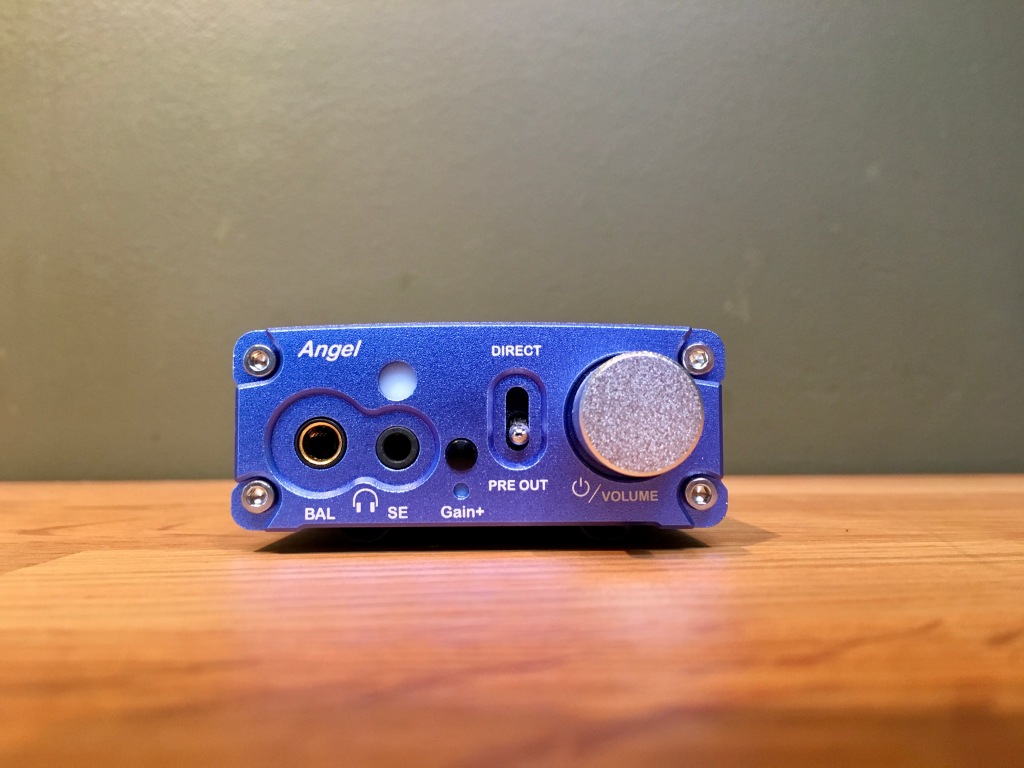
In terms of comparisons, the angels main competitor are the iDSD products from iFi. This is really stiff competition, as the iDSD’s are very well thought out, well featured, well built devices. The iDSD Signature is the main competitor in terms of features, and comes in at a very similar price point of $750USD, vs the Angel’s $799USD. I think it depends on your sonic preferences and also use case as to which I would recommend. The Angel would be better for people who prefer a more neutral, clean and clear type of sound signature, or are going to be using warmer IEM/headphones. I would recommend the iDSD if you prefer a slightly more forgiving sound signature, or need a bit more power in terms of output, for use with harder to drive headphones. The Angel is slightly smaller than the iDSD, so if space is a concern it is a clear winner in that category. The over all sonic performance in terms of technical quality is quite similar, with the two simply having different tonal balances and output power specs.
The Angel works very well as a DAC/Amp combo, but you can also use it as a plain DAC, from the outputs on the rear. You will have to use either a 3.5mm to RCA, or 4.4mm to XLR cable. I tried both, and the Angel performs well as a DAC only, maintaining the same sound signature as when it is used as a DAC/Amp combo. One thing to note is that if you will be using it as a DAC only, make sure you have a cable long enough to plug it in to charge whilst using, or make sure to get it charged prior to listening sessions. You don’t want to be right in the middle of enjoying some tunes and boom, red light, no power – no tunes. You can also select direct, or pre-out on the front of the unit, meaning the Angel can be used directly with a power amplifier in a stereo system, or used to lower input into a higher gain amplifier or similar. It’s a very handy feature to have.
Overall, the Angel was a really nice change of pace to try out. It is similar to the iFi iDSD products in terms of looks and functions, but offers a different tonal balance and set of sonic qualities. With a couple small changes, it would have really knocked it out of the park for me. The inclusion of fast charge capability, not for charging time concerns, but simply to use with my laptop would be nice to see on any V2 in the future. Also, I’d love to see the capability to combine charging and data on a single cable, but also to be able to flip a switch to go to entirely separate inputs, giving the user the decision of how they want to use it.

The Angel has a great clean, clear, and crisp type of sound signature, with decent power levels to work with IEMs and most headphones. I wouldn’t recommend it for especially hard to drive headphones, but apart from those, you should be entirely ok with most models. The Angel does also work well as a stand alone DAC, as long as you have the right cable handy and make sure it is charged up before a longer listening session. I really dig the blue colour scheme, and the build quality feels rock solid. Overall, the Angel is a solid first effort at a higher performing portable DAC/Amp combo, and with a few tweaks, could knock it out of a park if they ever come up with a V2 model. I’d certainly recommend the Angel given it fits your use case and sonic preferences.
ufospls2
Headphoneus Supremus
Pros: Sturdy Build
good price/performance
good price/performance
Cons: price vs the original range
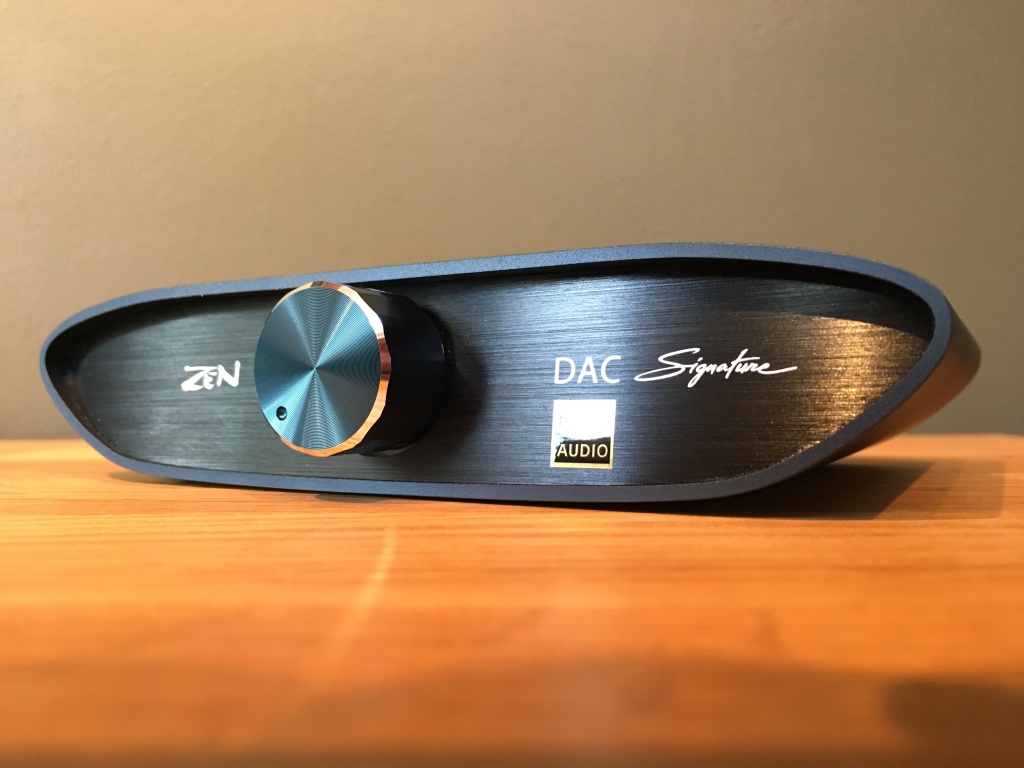
Hi Guys,
Today we are taking a look at the top of the Zen Range DAC from iFi. Anyone who reads this blog or my posts knows I’m a fan of iFi’s products, especially at the more affordable end of the product spectrum. I think they offer a lot of sound for the money, and usually strike a good balance between a very agreeable tonality and technical performance when compared to other options of the market in a similar price range.
The Zen range originally consisted of one product line, but has since become a three tier product range. You have the most affordable, single ended line, the Zen AIR. The original, now mid tier range, the plain Zen V2 line. Thirdly, you now have the Zen Signature line, which improves on some of the components and circuits used. I’m curious if the Zen AIR range was created to try and target the original price point and affordability of the the original Zen line, due to increased costs across the the board resulting in much higher MSRP of the original (now V2) line.
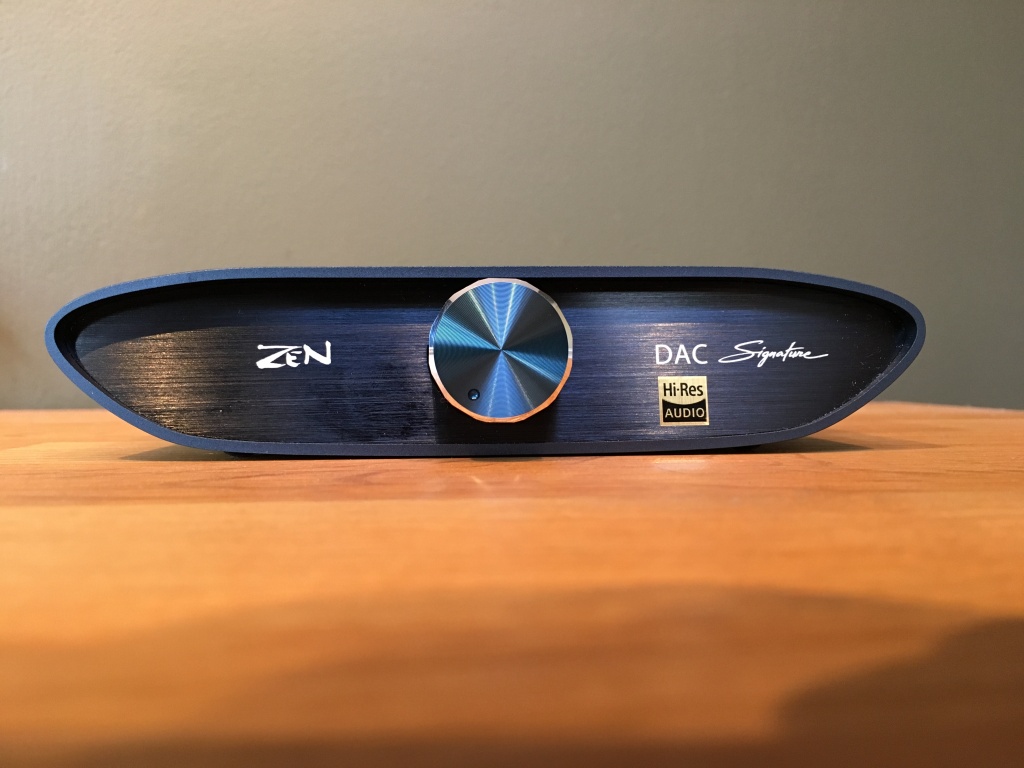
The Zen Signature lineup consists of the Zen One Signature, a bluetooth/USB combo DAC, the Zen Can Signature, which is a headphone amp/preamp, and the Zen DAC Signature, which is the subject of todays review.
The Zen DAC Signature is unlike the Zen AIR DAC, and the Zen DAC V2, as it is the only standalone DAC in the entire line up, in that it doesn’t feature a headphone amp. It can be used as a preamp as it does also have an analog volume control. The major differences from the Zen DAC V2, are the use of higher quality components, improved USB input, and some circuit changes. The look is entirely different, featuring a navy blue shell and black front panel. I actually really like the look of the Signature range, and think it looks much better than the other Zen lines. The back of the volume knob lights up in different colours according to the sample rate you are playing, and overall, makes the unit quite fetching in terms of aesthetics.
Of course, the most important thing isn’t how it looks, but how it sounds. In terms of overall tonal balance the Zen DAC Signature is very similar to the Zen DAC, with slight improvements in overall refinement and clarity. For the rest of the comparisons I will just refer to the Signature as the Sig.
The bass of the Sig is somewhat rounded off sounding, and there is a slight bloom to the low end (and lower mids) which does bring some slight warmth to the overall sound signature. The Sig is not a bass monster or very bass light either, but there does seem to be slight elevation of the low end. In terms of impact or slam, the somewhat rounded off nature takes away from the perceived speed of and impact of the lows, but I also wouldn’t say the bass is muddy or lacking definition.
The low mid range of the Sig does have the slight warmth and elevation mentioned previously. The upper mid range is not massively forward or recessed, and seems mostly neutral throughout that range. I found the Sig to work really well with acoustic music, and vocals in particular. The upper mids were never shouty or harsh and nasal. However, if you are looking for a very neutral DAC with a lot of slam and speed for electronica and a neutral tonal balance, you might be better with a different option.
The high end of the Sig was probably my favourite part of its overall response. Not sharp or sibilant, and not overly forward. At the same time, mostly neutral sounding, not recessed or too dark. If you prefer a darker sounding DAC, or perhaps are using very bright headphones/speakers, you might be better served with a different DAC, but for most users I think the treble of the Sig will be very agreeable.
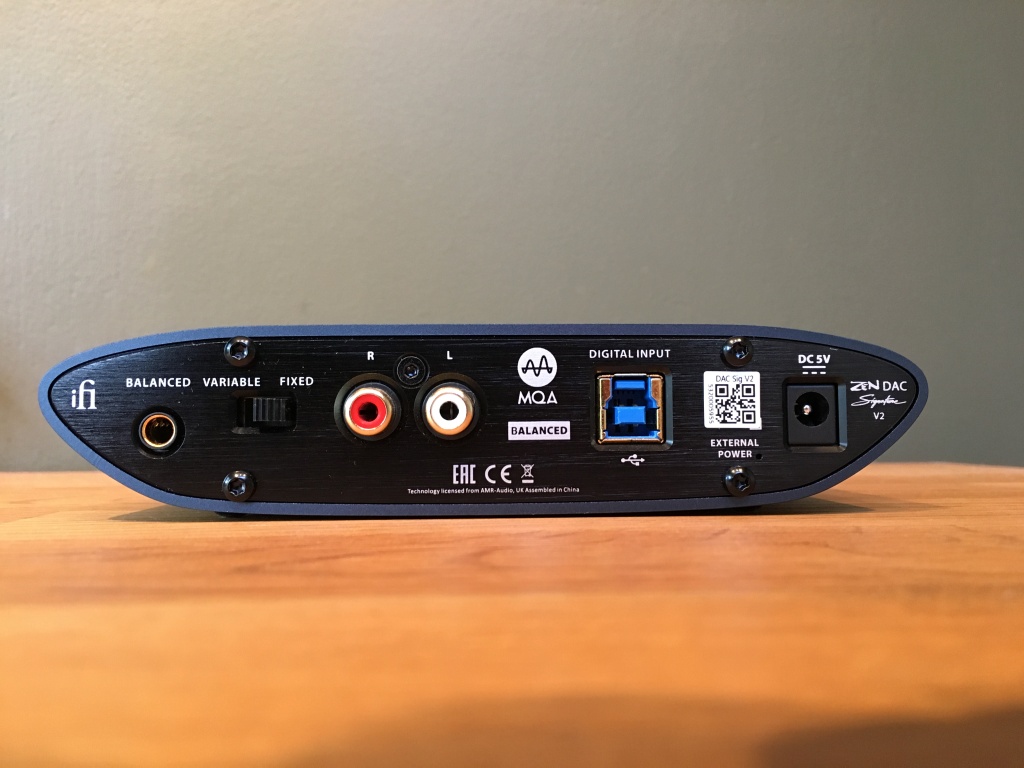
The Sig retails for $300USD currently, which for the performance it provides is very fair I reckon. It does improve on the technical performance of the Zen DAC V2, and as such, also the Zen Air DAC I would assume (I have not yet heard the Air DAC.) The overall detail levels and clarity seem slightly increased. The sound staging is very similar, but the imaging does seem slightly sharper and well placed throughout the soundstage vs the V2. It’s not a massive difference in terms of overall technical improvement, but it is noticeable and does add up to a more refined and higher performing sound signature.
The build quality of the Sig is largely similar to the other Zen Lines, and simply has a different colour scheme. All of the Zen line feel well built, solid and sturdy in the hand, and entirely in line with their price point. You can choose to run the Sig off the USB input for its power and data, or buy a separate DC input power brick to provide the power, and use the USB for data. You can choose either balanced or SE output via RCA for SE, and 4.4mm pentaconn for balanced. This will require a pentaconn to XLR cable, which can be bought separately. I would recommend using the balanced output if possible, as it does improve on the SE output. With that being said, if your amplification only has SE inputs, you aren’t missing out on a ton, and I would still recommend the Sig even if it is only going to be used single ended. The volume control and pre amp function is achieved using an analog pot, which as long as you are above 9 o’clock has good channel matching. It’s a handy feature to have, and would work well either to a power amp directly, or to a pair of active speakers. I mostly just used the Sig with a headphone amplifier, but I did try the pre out function, and found that it worked well and as advertised. You can turn off the preamp function on the rear of the device by selecting “fixed” vs. “variable.”
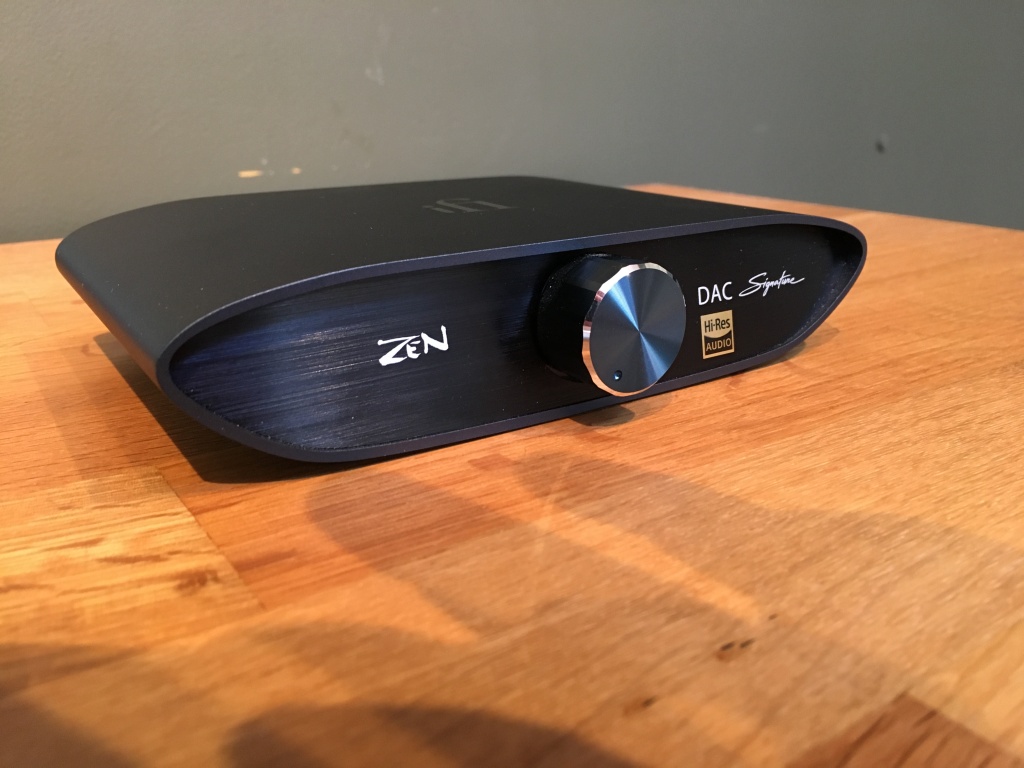
Overall, the Zen DAC Signature is a great option in the $300USD range if you don’t need amplification built in, like the rest of the Zen DAC options. It is the highest performing DAC model in the range, and also works as a pre amp if you are a speaker user. I think that its overall tonal balance is very agreeable, and will likely work for the vast majority of users well. The colour scheme is attractive, and easy on the eyes, and an improvement over the grey of the Zen V2 line up. The technical performance is an improvement over the Zen DAC V2, and entirely acceptable for the price point. If you are looking for a colder sounding DAC, with a sharper leading edge, you may be better off with a different option, but for most people, I think that the Zen DAC V2, is a better choice than a lot of the other similar option on the market currently.
Jimmyblues1959
Nice review! I have the original version of the Zen Dac Signature and have found it be an excellent pairing with several of my headphone amplifiers. It also does function well via its preamplifier outputs. It is of course best suited for use with its matching Zen Can Signature headphone amplifier which I use via its balanced input. I use the Zen Can Signature model customized for the Sennheiser HD6XX headphones and together with the Zen Dac Signature via its balanced output, the system does offer an excellent synergy. The fact that this equipment is stackable with a small footprint serves to further enhance its appeal. And construction quality is first rate.
ufospls2
Headphoneus Supremus
Pros: good technical performance
comfort
speed and detail
comfort
speed and detail
Cons: Stock tuning not for me
price
price

Hi guys,
Today we are taking a look at a product which is a bit of a change of pace, an interesting pair of IEMs from Audeze called the Euclid. In traditional Audeze fashion, these feature a planar magnetic driver, similar to their open back LCDi4, iSINE, and LCD-i3 siblings. Now, in the past I have owned Audezes LCD-i4 open backed IEMs, which were more of a miniature headphone, than a true IEM. Having had a good experience with their sound quality, I was curious if Audeze had managed to capture some of their sound in a closed back model. For all the LCDi4 sounded great, its open back nature did limit its use case compared to a traditional closed IEM, and the fit was also something I struggled with. If the Euclid could improve upon those areas, but continue to be a very capable driver, then I felt it had a ton of potential.
Thankfully, the Euclid are much more traditional in their form and fit. The driver itself has shrunk compared to the LCDi4, which has a 30mm driver, whilst the Euclid has an 18mm driver. In comparison to the group of planar magnetic driver options from Chi-Fi land that have been released in the last couple years, this is slightly bigger, with most of those options featuring a 14mm or 14.5mm driver.

The Euclids use an MMCX terminated cable, weigh 15g per side without the cable, and come in a nicely presented box with a handy small pelican case for storage. Included are Audeze silicon tips, SpinFit silicon tips, and Comply foam tips. I ended up preferring the Audeze silicon tips, though the Spinfit are certainly worth trying to find your ideal fit. I usually don’t enjoy foam tips, so I only tested the comply tips in terms of sound, and not as my preferred overall fit. As far as I understand the Euclid come with a 3.5mm cable, a 4.4mm Pentaconn Cable, and a bluetooth cable is available separately. At 12 ohms impedance and 105db/mw in terms of sensitivity, the Euclid are not the most sensitive IEMs on the market, but entirely serviceable and can be driver well from most DAPs, laptops, dongles, etc…You certainly do not need a large desktop amp to get the best out of the Euclid. They seems to play well over a wide variety of sources, and I will mention some pairings I enjoyed later on in the review.
In terms of general overall tonal balance, the Euclid seemed a bit more even keeled than the LCDi4 which I used to owned. Still, with that being said, in its stock tuning the Euclid is not my favourite. I think that for many listeners it may actually work very well, but I did end up preferring it after doing a bit tweaking via EQ. Audeze themselves seem to be a big supporter of the idea of EQ, going as far as releasing their “Reveal” (a software program they created) presets for their headphones and IEMs. Now, I prefer just figuring out what I prefer and doing it myself, but the reveal presets are always there, should you be interested in trying them out, and not interested in trying out EQ on your own. The drivers of the Euclid really do seem to be a level above the cheaper Chi-Fi planar magnetic options in term of technical performance, and take to EQ very well.
In terms of the bass response of the Euclid, it did seem to be slightly elevated, and I actually really enjoyed it in its stock tuning. I didn’t feel an overall need to ad any bass or that I was lacking low end. There is more of a sub bass focus than a mid bass focus, and it seems to be a somewhat easy going low end response. I mean that in the sense that some IEMs really just go for it in terms of bass, and also have tons of slam and punch in terms of dynamic drivers. Some of the Campfire Audio’s like the Atlas are like that. The Audeze seems more polite and technically capable than those IEMs however. Perhaps this is due to the Planar Magnetic driver in use here, but there is a real sense of speed and delicacy that a lot of IEMs don’t have on show, not just in the low end but in terms of the overall performance.
The mids of the Euclid did seem a little bit nasal and forward in the upper mids to me at times. I ended up preferring to reduce the 2khz area a little bit, which seemed to help with that nasal quality. I also found that snare drums and clap (or similar) type noises could be a bit too much, being piercing and grating. The Euclid's lower mids seemed mostly neutral, not really being forward and warm and mushy, or pulled back, being cold and clinical. They struck a fairly good balance between the two extremes, and I never bothered with tweaking them via EQ in the lower mids.
The treble response of the Euclid was where I had the most problems. The lower treble was actually entirely ok, I just felt that for my personal preferences, the upper treble (lets say 8.5Khz and above) was way too dark. There just wasn’t enough energy, air, and sparkle. I also feel that through this recessed upper treble, it seemed to be masking how truly capable the drivers themselves were in terms of presenting detail and technical performance. Now, a darker treble obviously doesn’t mean that the detail isn’t there, and an overly hot treble can also make you think there is detail that isn’t really there, but I did end up feeling that with a boost in the highs, the Euclid really came into their own, and showed what they were truly capable of.

Which brings me to my next point. Although the Euclid did not seem to be as large sounding and technically impressive as their LCDi4 siblings, they were incredibly capable IEMs. Lots of detail, lots of dynamic capability, with decent soundstage width and height for a closed back IEM. The tonal balance in its stock form may not be my favourite and treble in particular may not show off what the Euclid are capable, but after I got them dialled in, they really did impress me. The LCDi4 does have a much “bigger” sound, and a wider soundstage, and I think that is due to its larger driver and open back nature. That whilst Audeze has done a great job with the rear chamber and optimization of the Euclid to get a good sounding closed planar IEM, they just can’t out physics, physics, to beat the LCDi4s performance. To be fair though, the Euclid is vastly more affordable than the LCDi4, and I think it is the most technically capable IEM I have heard for the price (which I will mention more about after I speak about the build quality)
Now, the Euclid are made of a metal shell, feel fairly substantial at 15g. Thankfully, they don’t need ear hooks like the open back IEMs from Audeze, and do have a much better overall fit. Once I did some experimenting with the Eartips they came with, settling on the stock Audeze silicon tips, they were entirely comfortable for long listening sessions. There are more comfortable smaller IEMs on the market, but in terms of accommodating the driver size of the Euclid, their comfort is absolutely ok, for me and my ears. If you have very small ears you may have some issues with the fit, so I would recommend trying to get your ears on a demo pair, if at all possible. The build of the stock cables was also absolutely acceptable, and I haven’t had any problems with the MMCX termination thus far. The Euclid's feel like a well built product overall, being substantial, but not too heavy to cause comfort issues.
The bluetooth cable that Audeze makes for the Euclid, which I believe originally came with them stock, but is now an additional add on, works very well. Pairing the cable with your bluetooth source is very easy to do, and the whole process seemed smooth and worked well. The cable itself actually doesn’t have a ton of power or gain so if you want to really rock out, you would be better off with a DAP or dongle with a bit more power. However, if you want to be free to move around, with no attached cables or things to worry about, the bluetooth cable is worth considering. It sounds totally fine for a bluetooth option, but of course, for ultimate sound quality, I found that other sources did improve upon its performance. EDIT: I have since found out the Bluetooth cable is no longer available.
In terms of pairings, you don’t need a desktop amp to enjoy the Euclid. I’ve tried them with lots of portable sources, and the iFi GoBar was a great option. I also enjoyed my Fiio Q3. Basically, whichever portable DAP or amp you prefer the sound of, as long as its moderately powerful, will sound good with the Euclid. They are not very picky about what they are paired up with.
My main comparison with the Euclid was the 7Hertz Timeless, another planar magnetic IEM. The Euclid is better in terms of technical performance, build quality, and comfort but the stock tuning of the 7hertz is better for my personal preferences. As I am not opposed to EQ use, the Audeze are the clearly superior choice especially given the pricing problems I will mention in the next section. The 7Hertz were a great option when they came out, but things have changed in a very quick way since their release, so I would hesitate to recommend them at this point.
Now, I need to talk about the price of the Euclid as it’s a complicated issue and has caused some problems in terms of what to recommend. The Euclid released at an MSRP of $1299USD. Compared to the $2500USD MSRP of the LCDi4, whilst also being closed back, was an interesting addition to Audezes line up. There were a few sales here and there with the Euclid going for around $1000USD. Then, Audeze had B-stock models at around about $650USD two years in a row during their B-Stock sale. Most recently, Adorama.com, a US based online retailer, has had them on sale, B-Stock new models, for $299USD. They are also showing as being sold out on Audezes website. I’m not sure if that means they are going to be discontinued, or what is going on. With that being said, if you can get a pair of these for $299USD, and either like their stock tuning or don’t mind playing with EQ, then this is the EQ to get for the money in my opinion. Its technical performance for $299USD blows anything else out of the water at that price point, and many above that price point. At its MSRP, it's still a great sounding IEM, which is comfortable and well built, but has a much larger number of competitors to go up against. I would have even recommended the Euclid at its MSRP with caveats, but if you can get a pair from Adorama or used at $299, it's a no brainer in my opinion for those looking for an IEM.

Overall, the Euclid is a very technically capable IEM, albeit with a stock tuning that is not my favourite. The accessories that come with the Euclid are great, equally well built, and make it an overall well done package. If you are willing to EQ the Euclid’s frequency response to be more in line with your personal preferences, their technical performance is very good, with good comfort and build quality as well. If you were paying MSRP, and don’t like to EQ, I would recommend trying them prior to purchase if at all possible to make sure you like the stock tuning. However, if you were able to get a pair from Adorama or similar at $299USD for a new A stock pair, and that is within your budget, I would recommend giving them a try regardless of your sonic preferences as you may end up really enjoying them, and the financial risk is much lower.
I’m curious if Audeze will ever be able to come up with a higher performing closed back IEM, similar in sound and performance to the LCDi4. Would it be possible to do a bigger driver in a closed back model? With even more technical performance? I’m really not sure, but if Audeze does indeed ever release a “V2” or a model above the Euclid, I’d certainly be very interested to hear them and see what they are like. Overall, I’d recommend the Euclid, especially if you can get it at the bargain basement pricing they have been going for lately.
Last edited:
goaud27
@Goldenbullhorn So how was your experience?
G
Goldenbullhorn
Sound clean with good separation. As for tuning I don't really have a strong preference for certain profile, so not much to comment on beside I find it enjoyable. I am still a noob when it comes to this hobby, so I am scared to say anything definitive...I would just say for the sub 300$ price I bought it as I think it's absolutely worth.
sofastreamer
nice description of the tonality. i like dark treble, but my biggest fear was, that shouty upper mids audeze seems to prefer in some of their products and unfortunately you mentioned exactly that. thank you!
@Goldenbullhorn 300?? what a steal! i honestly would have bought at least 3, no joke
@Goldenbullhorn 300?? what a steal! i honestly would have bought at least 3, no joke
ufospls2
Headphoneus Supremus
Pros: Great bass
Dynamic capabilities
detail
price/performance
Dynamic capabilities
detail
price/performance
Cons: Some may prefer a more neutral sound
sound best warmed up
sound best warmed up

Hi Guys,
Today we are talking about the Schiit Audio Yggdrasil “OG”/A2/Unison DAC. There are three different versions of the Yggdrasil currently available, and various permutations over time with different USB solutions and analog boards etc…The three current versions are the “Less is more” “More is less” and “OG.” The “OG” is the original DAC chip configuration, with the second generation (A2) analog boards, and also includes Schiits proprietary USB solution, which is called “Unison.” I have not heard either the “Less is more” or “More is less” versions of the Yggdrasil, but I have actually heard the Yggdrasil with the original “A1” analog board, and Gen 3 USB. Schiit has very recently released the Yggdrasil +, which is simply a new, more streamlined chassis, with a remote control and a non oversampling mode. Everything else remains the same in terms of sound differences across the three available models, as far as I understand. I should note, Schiit has mentioned that the “More is less” version will likely be unavailable sooner rather than later, so if you want a Yggdrasil that is more measurement focused, now would be the time to pick one up. It does appear that the “OG” and “Less is more” will continue to be available.
For the rest of this review, I’ll just refer to the Yggdrasil as the Yggy, as its colloquially known, and all my comments are pertaining to the “OG” A2/Unison version, unless otherwise stated. I did most of my listening for this review with my Boulder 866 with the Yggy acting as the DAC, and also my DIYT2 for use with electrostatic headphones.
The Yggy does benefit from being left on continuously, which has to do with the DAC chips reaching their optimal operating temperature. Over time I do think this aspect has perhaps been slightly overblown, with people saying it takes months of being left on to reach thermal stability. From my experience a few hours seemed to do it, and then maybe some slight changes over the next day or two. With that being said, I’ve ended up just leaving it on, as then you don’t have to worry about it.

The first thing I noticed about the Yggy was its bass response. Being my first long term experience with a Schiit DAC, perhaps this is the “Moffat bass” that people speak about (Mike Moffat being Schiits digital designer, and a pioneer in the field of digital audio conversion.) It came across as being perhaps the most bass, in terms of level, I’ve ever heard a DAC provide. Definitely north of neutral. Big, fat bass. Yet, although it was big and fat, it did retain quite a bit of speed and delicacy when called for. Its not the fastest, most incisive bass I have heard, but I didn’t find myself wanting for more in that area for most types of music. I could definitely see some DACs sounding a bit lean in the low end if you are coming from the Yggy to something more neutral in the low end. One thing I should note is that I didn’t find the low end of the Yggy sounding bloated and overly mushy. This can sometimes happen with the low end being prominent, but the Yggy didn’t go that far or have troubles with that, to my ears.
The mid range, in terms of level, seemed mostly neutral to me. There was a slight sense of harmonic sweetness in the mids, especially the lower mid range. It never really struck me as a very warm sounding DAC, and seemed to have more emphasis on the lows and highs, than the mid range. The slight sense of harmonic sweetness I mentioned in the mids did help with perceived timbre overall, and worked well with jazz and classical music in particular. It helped give a certain sense of “realness” in particular with acoustic instruments across the board.
The highs of the Yggy were also slightly elevated. Less so than the low end, but a very slight increase over neutral. I also found they had a really nice air and somewhat sparkly nature. Although I felt the lows and highs were elevated, I don’t want to give the impression that this is a V-Shaped DAC. It never went that far in my opinion, perhaps the low end does, but the highs are not north of neutral enough to say that the overall signature is V shaped. L shaped perhaps? I’m not sure if that is even a thing. I did feel the upper treble was slightly more emphasized than the lower treble, which is probably why I felt there was a nice sense of air and spaciousness to the treble response.

In terms of technical performance, the Yggy fared incredibly well for a DAC that costs $2699USD. There is a serious amount of value for money with this DAC. The overall detail levels were superb, especially for the cost of the DAC, both micro and macro detail. Though this is fairly hard to describe, it has a good amount of punch and slam, maybe this is also to do with that “Moffat bass” I mentioned earlier. Dynamic swings were handled very capably, though I felt it was much better at the Macro Dynamic side of things, with the tiny micro dynamics side of things being done better by some other DACs. The soundstage of the Yggy was quite wide, and expanded more left and and right, than out in front in terms of how I perceived its staging with headphones.
Schiit Audio’s proprietary USB solution, “Unison” was what I used for most of this review. I did also try the AES, Coax, and optical inputs from a D/D converter. I found the Unison USB to sound best to my ears out of all those options, but at the same time, if you have a particularly good source that you like, it might be better than the Unison USB. For someone like me, using a Laptop as their source, the Unison input is a bit of a no brainer, its a one and done, plug and play solution, that actually sounds better than most AES/Coax sources. With that being said, maybe you have some super CD spinner or similar that sounds awesome through its AES outpit, or similar, and in that case I would use the input that sounds best from your source. For me, and my uses, Unison was the winner. You, and your specific source, may end up having different results.
The build quality of the Yggy seemed great to me. Though the very recently released “+” version does have a slightly more streamlined looking chassis, the original chassis still works very well. Its a fairly heavy and solid feeling piece of gear, and I haven’t had any problems with it at all thus far. It just feels well put together, and like it will last a long time. In terms of build quality, the Yggy gets a thumbs up from me. I also like that Schiit has made black more commonly available across its line up as I do prefer black gear to silver gear. Obviously, it doesn’t effect the sound, and is entirely a cosmetic preference, but the fact it is a more readily available option than it used to be is neat.
In terms of comparisons, I can compare it to the Yggy A1/Gen 3 USB from memory, and also the built in DAC of my Boulder 866, which is an AD1855 based solution, and incredibly capable for a built in DAC.
Compared to the A1/Gen3 Yggy, the A2/Unison seemed slightly warmer, with more bass and more highs. The A1 seemed some what colder sounding, a bit more clinical in nature, though not highly clinical in an overall sense. Detail and resolution seemed quite similar between the two, but perhaps slightly more perceptible on the A1/Gen3 due to its slightly more clinical sound. Dynamics were better on the A2/Unison to my ears. If you find an A1/Gen3 Yggy at a really good price, that might actually be one of the better DAC bargains out there currently, especially if you use a cheap D/D converter to bypass the Gen3 USB by using AES or Coax. The Unison USB does sound much better than the Gen 3 USB did.
Compared to my Boulder 866’s built in DAC, which I did a lot of direct A/B comparisons with. The 866’s DAC is much more neutral. Less bass, and less highs. More even keeled sounding overall. The 866 does outdo the Yggdrasil in terms of overall detail levels, but the Yggdrasil seemed better at Dynamic swings and was also more “fun” to listen to. There was also the slight harmonic sweetness in the midrange that the Yggdrasil has that the Boulder did not have, which was nice with acoustic instruments in particular.
Another DAC that is in a similar price range to the Yggy is the iFi Audio Pro iDSD Signature. Though it has all sorts of features the Yggy doesn’t (Headphone Amp, Tube section etc..) I think I prefer the Yggy in terms of DAC performance. The Yggy is slightly more detailed, slightly less warm, and also better dynamically. If you want the other features like a headphone amp, tube section, etc…that the iDSD Signature has built in, then it is a very good choice, but if you want a pure DAC only option, I would save a few hundred dollars and go for the Yggy.
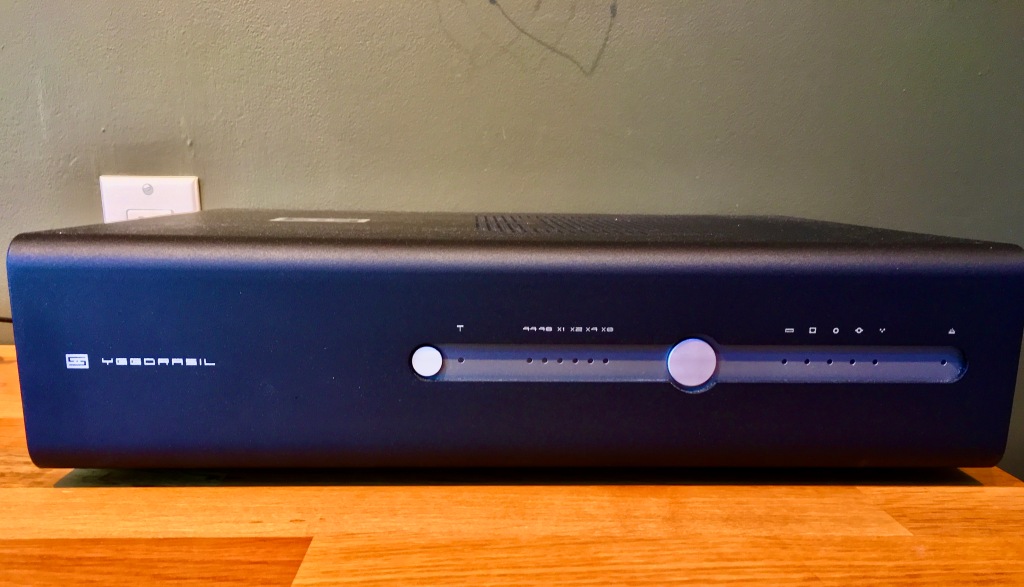
Overall, the Schiit Yggdrasil A2/Unison “OG” is probably the best DAC for the money at MSRP I have heard. At $2699USD, there are other options on the market, but I think the Yggy really makes a case for itself in terms of how enjoyable it is to listen to. I really loved its bass response, and its technical performance was great for how much it costs. There are better, more technically capable DACs out there, but the ones that I have heard all cost a lot more money, which complicates matters. The Yggy is very, very competent in its overall performance, it is fun to listen to, it doesn’t cost as much as a house, and it is really well built. I would definitely recommend the Yggdrasil if you are looking for a DAC. If you want to save a few hundred dollars, definitely do some reading about the “Less is more” version also, as some people do actually prefer it to the “OG” I have written about in this review. That will be up to you and your ears, but from what I understand it’s pretty hard to go wrong with either version. Good Job Schiit!
sp33ls
Great review. It'd be awesome to see a follow-up post comparing the "OG" to the "Less is More" variant.
I had the A1, sold it, and now own the Less Is More. The LiM is definitely special to my ears. It's even more "natural" than the OG -- and dare I say "analog?"
Would be cool to see a comparison here.
I had the A1, sold it, and now own the Less Is More. The LiM is definitely special to my ears. It's even more "natural" than the OG -- and dare I say "analog?"
Would be cool to see a comparison here.
ufospls2
Headphoneus Supremus
Pros: Detailed
Spacious
more real world pricing vs the SR.
Spacious
more real world pricing vs the SR.
Cons: build quality compared to other brands
cable
cable
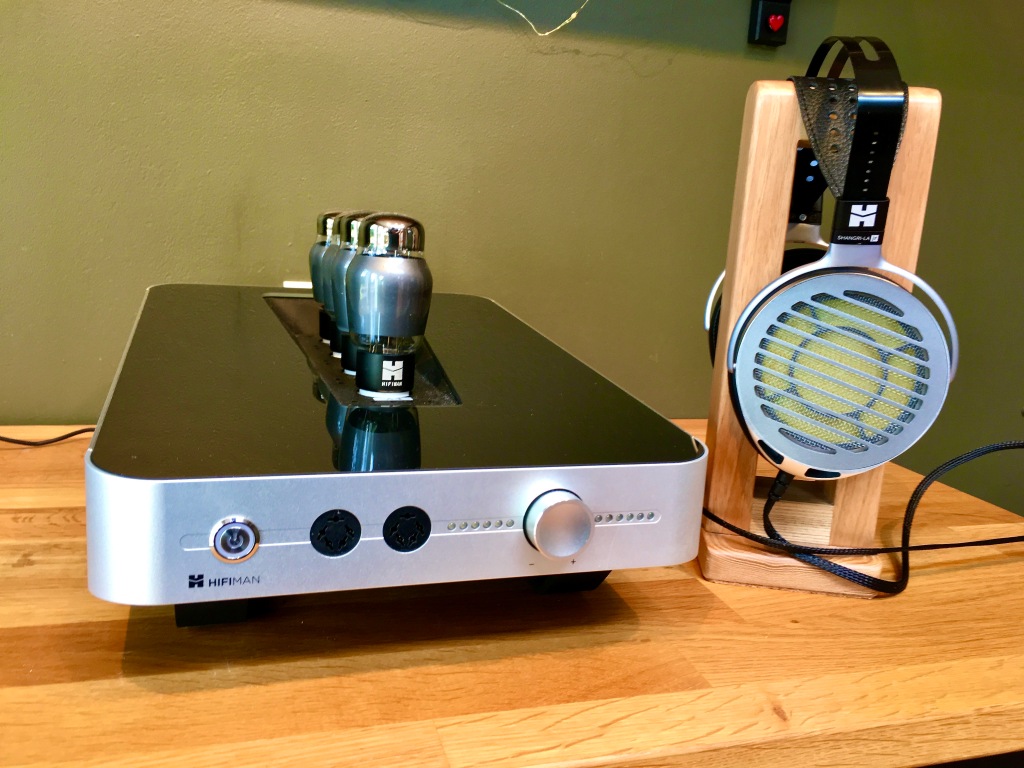
Hi Guys,
Today we are having a look at Hifimans Shangri-La Jr. headphone system. Having recently had the opportunity to spend some time with their senior version of this headphone, I was really looking forward to hearing the differences between the two, how they matched up to each other, and if the Jr. version was able to capture some of the magic that the Sr.’s had. The Sr. are still the best technically performing pair of headphones that I have personally heard, so in that respect the Jr. certainly had a lot to live up to, though obviously at the massive pricing difference, there are going to be concessions in certain areas. Through a bit of a mix up on Hifimans end, they also lent me the matching amplifier for the Jr. headphones. I have not heard the Sr.’s matching amplifier, so I’m not able to offer a comparison in that area, but I have experience with other electrostatic amplifiers, and will be writing about some of the comparative differences between those.
So, onto the headphones themselves! For the rest of the review I will just refer to them as the Jr’s, and I will specify when I am talking about the amplifier, later on in this review. I’ve used a mixture of gear throughout the review period. In terms of amps, I’ve used the Stax SRM-D50 and SRM-500T, a DIY KGSSHV Carbon, an Eksonic/Kerry DIYT2, and the Shangrila Jr amplifier itself. In terms of a DAC, I’ve pretty much entirely used my Schiit Audio Yggdrasil A2/Unison DAC.
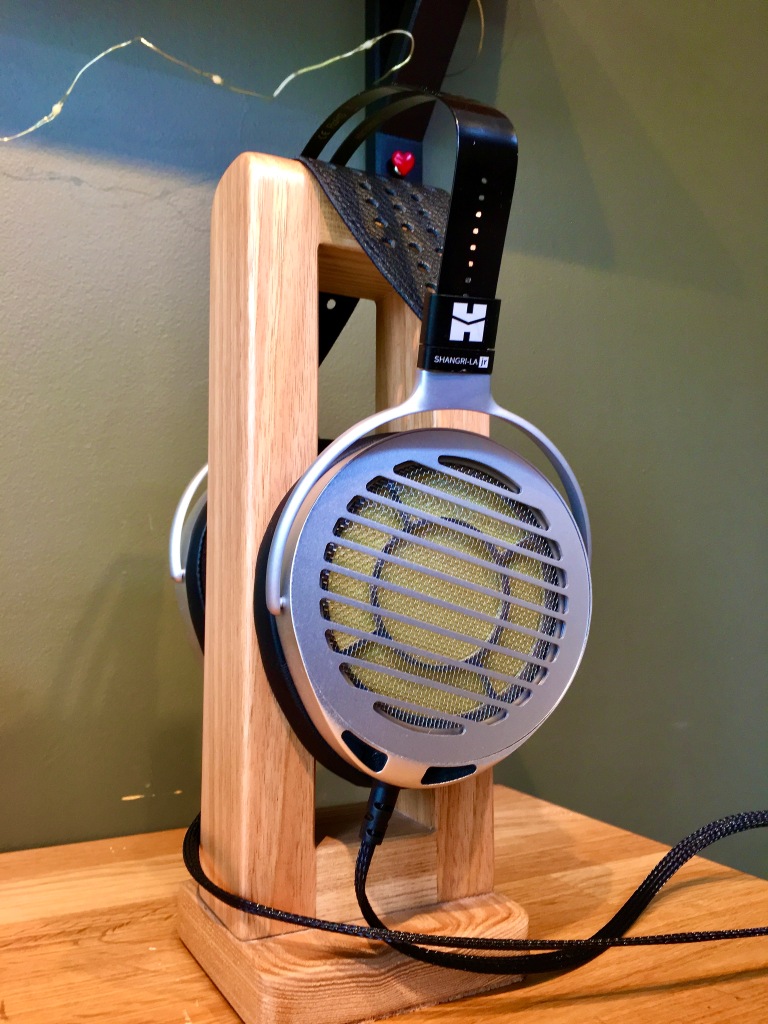
The bass of the Jr’s has been an interesting thing to try and figure out. One person who’s impressions I respect and appreciate mentioned they felt the Sr’s had a more robust and further extending response. At first, I wasn’t noticing this, but over time I began to agree. However, the reason why, and this is only in my personal opinion, is split between both the frequency response, and the overall “tactility” and “impact” of the bass. The Jr is slightly less extended sounding than the Sr in the low end, but there really isn’t much difference between the two. There does seem to be slightly more mid bass with the Sr’s also, but again, there isn’t much difference between the two. What I think might lead to people feeling the Jr has less overall bass is that it has less impact compared to the Sr’s, and more of the stereotypical electrostatic weak bass response. Overall, you feel the low end less than with Jr than with the Sr’s. There isn’t a massive difference between the two, but it is noticeable.
In terms of the midrange, the Jr and Sr are remarkably similar. Both headphones are fairly clean and cold sounding in the mids, vs warm and “romantic.” I think that the Jr has slightly more upper mids and the Sr has slightly more lower treble, but the mid range overall, is very similar. I really enjoy the mid performance of both headphones as they are so similar, and it really helps the drivers convey a real sense of speed and delicacy that some warmer thicker sounding headphones can miss.
In terms of the treble response, as mentioned, I feel the Sr has slightly more lower treble, but overall, I feel the Jr comes across as being slightly brighter. I think this is due to the slightly lower perceived level of the low end, and also the upper treble tuning varying slightly between the two. I never found either to have too much treble, but due to some of the technical performance variations, the Jr does come across as a bit brighter and more in your face than the Sr.

Although the two headphones are quite similar overall in terms of their frequency response, most of the differences in sonics come from other areas. The Jr is a much more conventional sounding headphone, whilst the Sr does somethings that help it pull away from the rest of the pack in terms of overall performance. The Jr has a smaller sounding image compared to the Sr, and is noticeably shorter in terms of soundstage height. Yet, compared to many other headphones (and even the Susvara incidentally) the Jr does have a fairly large sounding sonic image, a wide soundstage. The detail levels between the Jr and Sr are fairly close, with the Sr pulling ahead in terms of micro detail, micro dynamics, and its overall speed and delicate sounding nature. I think the Jr is comparable to the Susvara in terms of its detail and technical performance, but is slightly less warm, and colder sounding. The sonic image and soundstage of the Jr is similar to the Susvara but slightly bigger, perhaps due to their very similar shape and the fact that they use the same pads.
In terms of the build quality of the Jr, I had no problems with it, but again, it does lack the finesse and fine details of some other flagship headphones. It is an incredibly comfortable headphone to wear, weighing 374 grams. It feels very similar to the Susvara in terms of comfort, but is slightly lighter due to the lack of magnets being that it is an electrostatic design. It is a metal framed headphone, and does not have any wood parts like the Sr’s do. The Sr do feel slightly more well put together and better built, but I didn’t find there was a massive difference between the two in terms of their build quality. The cable is a bit flimsy (same cable on both) and could be half a meter longer, just for fitting into more setups easily. I think that the build quality and the materials being used is more acceptable on a $4000MSRP headphone, vs a $18,000 headphone.

Now, lets talk about the matching amplifier! Its a fairly substantial unit, weighing in at 24lbs. It feels well built, and I had no troubles with it over the review period. It uses a quad of 6SN7 tubes, which are numbered A1 through A4 matching their individual sockets. I assume this has something to do with the tube bias being set at the factory prior to shipping. The volume control comes via a 24 step relay based attenuator, which resets to zero whenever you turn the amp off. Overall, I found the headphone and amp to match well in terms of looks, but the question is how does it sound.
I remember reading that Fang Bian (hifimans CEO) felt that the common DIY Stax amp designs were too powerful, and that had an impact on their musicality. I’m not sure if thats true or not, but it was clear that the Jr amplifier does have less power on tap than my KGSSHV Carbon, and DIYT2. In terms of its sonic performance, I felt is was fairly neutral, leaning on the side of a very slight warmth and harmonic bloom, perhaps from the tubes. Its detail levels were perhaps slightly less than my KGSSHV Carbon. The Carbon and my DIYT2 did take a hold of the drivers with more authority, and had a better performance in the low end. Now, the Jr’s amp costs $4000MSRP when bundled with the headphones (making them 4000 dollars each.) The amp is $5000MSRP when purchased on its own. I think that at MSRP, on its own, its knocking on the doors of the HeadAmp BHSE and the KGSSHV Carbon, both of which I feel are better amplifiers. However, Hifimans can usually be found from dealers at less than MSRP if you ask around, and there is also the used market. This complicated matters a bit, because lets say you find an open box set of the headphone and amp, or maybe a used set of both? Lets say that costs $6000USD (as a guess,) making the amp $3000 and the headphones $3000. The amp becomes much more easy to recommend in this case, especially if it is the Jr headphones you will be using primarily. I wouldn’t recommend the Jr amp for use with the Audeze CRBN, or Stax SR007mk2, as those are both much more hard to drive than the Jr headphones.
Overall, the Jr’s matching amplifier is a solid performer. IT does lack the ultimate power and refinement for harder to drive electrostatic headphones, but if you get a good deal on it, and are primarily using it with the Jr headphones, I can totally see why someone might pair them together. The tonal balance of the amp helps flesh out the midrange of the headphones slightly, and brings and overall slightly “sweeter” performance to their overall tonality. Its a good match up sonically, but if you are purely thinking in terms of MSRP, especially if the amp is purchased on its own, it doesn’t offer the best sound/performance ratio on the market. With that being said, purchased as a package with the headphones, especially if you can score a deal of some sort, it begins to make much more sense.

In terms of comparisons with other headphones, the Jr’s natural competitor on the market is the former Stax Headphones flagship, the Stax SR009S. I have reviewed this headphone in the past, and did really enjoy its performance. Overall, if I had to choose between the two, I would choose the Shangri-La Jr. I think it has a slightly more detailed sound, with a slightly wider and spacious soundstage. The SR009S is a bit more focused sounding, with a slightly smaller overall sonic image. The build is slightly better on the SR009S, and the cable is much better, but in terms of overall sonic performance, I prefer the Jr’s.
Compared to the Audeze CRBN, which is another similarly priced electrostatic headphone, I’d find it much more difficult to choose either, as they are som vastly different. The Jr’s are a more traditional sounding electrostatic headphone, more airy and ethereal. They have a faster driver and very similar levels of detail. The CRBN has more impact, and is almost more planar magnetic sounding. The CRBNs build quality and materials are superb, and do beat the Jr’s overall in that area. I think that if you want an electrostatic headphone that is different, and has some planar magnetic sound qualities, the CRBN is the way to go. If you are prioritizing a more traditional electrostatic sound from your headphones (detail, ease, speed, delicateness) then the Jr’s are the way to go.
Overall, I have really enjoyed my time with the Shangri-La Jr headphone and amp combination. They don’t reach the ultimate sonic heights that their Sr sibling does, but considering the truly massive gap in price, they do an amazing job of capturing the overall essence of their flagship sibling. They do lack that last 10% of detail, sonic image size, and delicate nature, but compared to other electrostatic flagships on the market, they stack up incredibly well, whilst also being slightly cheaper than the other flagships. The Jr are sort of like an electrostatic Susvara, trading off the slight warmth and sweet midrange of the Susvara, for a very slightly more detailed and delicate overall sound. Though my recommendation for the amp does have some conditions to it (finding a deal of some sort, and not wanting to use some of the harder to drive electrostatic headphones) I can thoroughly recommend the Shangri-La Jr headphones if you are purchasing them on their own. They stack up very well to the other options on the market in the electrostatic space. Of course, if you can financially manage the Shangri-La Sr, then that is the way to go, but if not, you can get a heck of a lot of their performance, at a much more real world price in the Shangri-La Jr. Two thumbs up from me.
Last edited:
ufospls2
Headphoneus Supremus
Pros: Comfort
Price/Performance Ratio
Speed
Price/Performance Ratio
Speed
Cons: Slightly Nasal 1khz range
Sub bass roll off (really only a worry if you are watching movies)
Sub bass roll off (really only a worry if you are watching movies)

Hi Guys,
Today we are finishing up my set of reviews of Stax Headphones current Lambda series. The L300, L500mk2, and the subject of todays review, the L700mk2. The L700mk2, which I will just refer to as the L700 for the rest of this review, is the top of the current Lambda range. In terms of pricing it splits the difference between the L500mk2 at $830USD, the first headphone in the Omega Range, the SR007mk2, at $2205USD, coming in at an MSRP of $1649USD. This makes it comparable to headphones like the Hifiman Arya, and others, in the sort of “not the most expensive, but still great” performance category.
For the majority of this review I used the Stax D50 DAC/Amp combo unit, the Stax SRM-500T tube amp, and I also tried the L700 out on my KGSSHV Carbon and DIYT2. The DAC used was the Schitt Yggdrasil A2/Unison.
For the most part, I found the L700 to be similar to its Lambda siblings, with some improvements in terms of technical performance. The overall tuning struck me as being mostly balanced, not overly bright or lacking low end.

The bass seems similar to the other Lambda headphones. Some roll off in the lowest sub bass region, but in real world listening, entirely satisfying. I do think the L700 has slightly more impact in its low end than the L500/L300 but the difference isn’t massive. Compared to the SR009 I felt the L700 actually has a better bass response. Slightly more in terms of level, but also slightly more impact/slam. With that being said, you do need to keep in mind this is a pair of Stax electrostatics, and the bass impact isn’t the same as something like the Abyss AB1266. Also, if the bass level isn’t in line with your preferences, the L700 does take a low shelve via EQ very well, and you can adjust it to your tastes very easily.
The mids of the L700 are slightly less forward overall than the L300, and pretty similar to the L500. As with the other Lambda models, there is a bit of a peak around the 1khz range, which can lead to some song sounding a bit nasal and congested. I do feel it’s not enough of a peak to become really problematic, but it also very easy to reduce slightly via EQ should it annoy you. Apart from that peak, the overall sense I got from the mid range was one of slight warmth, and not a cold and clinical recession. This makes the L700 play well with multiple genres and slightly more “easy” to listen to than something like the SR009, which can be a bit more fatiguing. This is always a bit of a difficult balance to get right, between being accurate sounding, and easy going, but the L700 strikes a good balance between the two.
The treble performance of the L700 again struck me as being similar to the L500. It is slightly less bright and forward than the SR009, but there is more treble energy than with the SR007mk2. Similar to the mid range performance, I think Stax was going for a balanced treble, rather than a brighter more fatiguing sound signature. I think that if you are a treble head, there may not be enough high frequency energy, but again, this is something that you can tweak very easily via EQ. For the average listener though, I think the treble of the L700 will strike a balance between clarity, air, and being too dark or muted sounding. Similar to the L500, the L700 seems to strike a balance between the SR007mk2, and SR009 in its treble response, which works well for many genres, rather than being a specialist at one or two things.

In terms of detail, and overall technical performance, the L700 does slightly increase its performance vs the L300, and L500. There is definitely an increase in overall detail performance, both micro and macro. Its not a massive difference, but it is clearly audible. The entire Lambda range does lack some of the ultimate driver speed that the higher end Stax have, but I do feel they are faster than some of their dynamic driver, or planar magnetic driver rivals on the market place. The L700 sounds slightly more natural overall than the L500, and especially the L300, where I found a “plastic-y” timbre to come out at times. The soundstage performance is a bit wider, and deeper than the L500. The difference is not huge, but is audible. I do think the L700 has different pads than the L500 and L300, so this may contribute to this perception. It is quite an airy and open sounding headphone, perhaps due to its electrostatic nature, as well as very open design.
The build quality of the L700 is similar to the L500, but does feel slightly more premium. There is really not much difference between the two however, apart from the pads. However, it does feel more premium than the L300, which is understandable given the massive difference in cost between the two. I found the comfort to be great, and very easy to wear for long listening sessions. Slightly less clamp force is present than the L300, again being similar to the L500 in this area. Apart from the metal yolkes, the L700 is mostly made of plastic like its siblings, which doesn’t lend itself to the most premium feeling build. With that being said, I never had a problem with any of the parts, it feels well put together, and the plastic usage helps keep the weight low (371g, sans cable.)
As with all other Stax headphones, they are electrostatic designs and require a dedicated amplifier of some form. As I mentioned earlier, I mainly used two of Stax’s more affordable models for this review, the D50 and SRM-500T. I will report back about those in a full review in a couple days. In the headphone community, the Stax made amplifiers get a pretty hard time vs some of the DIY designs, but the L700 worked well off of both of them. I did try the L700 off my KGSSHV Carbon and DIY T2, but they did not scale as well the Omega models may do. This is a good thing in my opinion, as it allows them to sound their best off of more modest source equipment, and also allows people to get into electrostatic headphones at a more affordable price than having to spend thousands upon thousands on an amplifier.
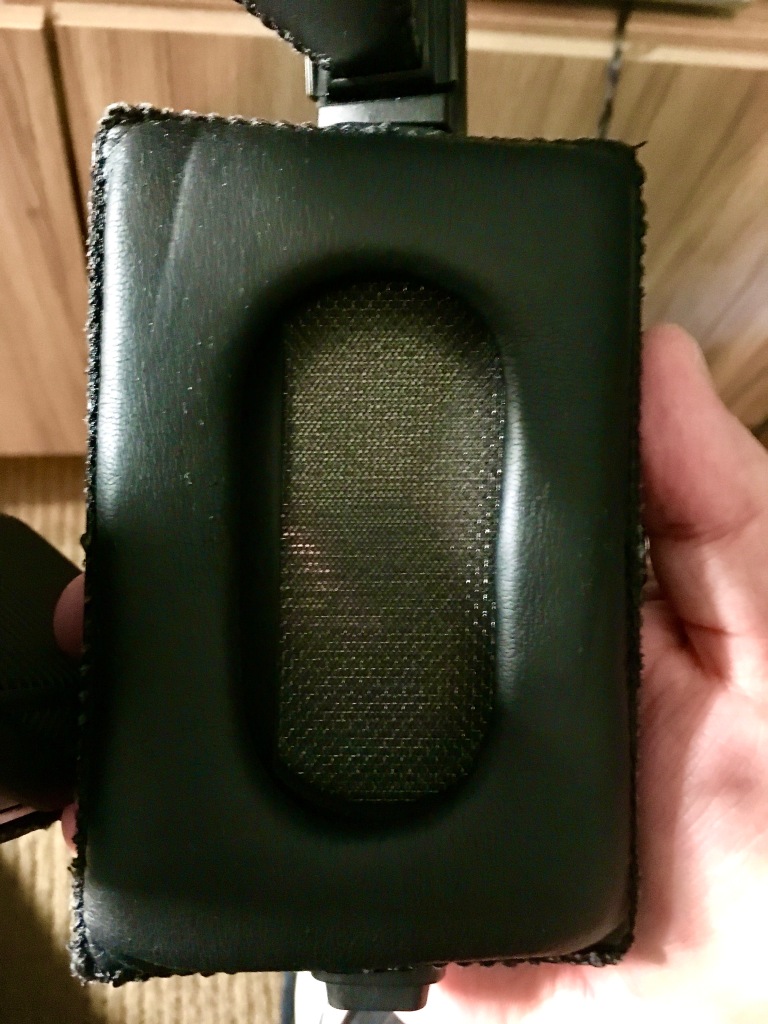
Having now spent time with all three models from Stax’s Lambda entry range, I feel I have a pretty good idea of what they are all about. They do a lot of things very well, with a few areas that are somewhat weaker simply due to their electrostatic nature. I think that if you hear a pair of Stax, and they speak to you in a good way, there really isn’t anything like them. The Lambda range offers three different price points, and you can decide which might be the best for you and your budget. They do get better as you move up the range, culminating in the L700mk2, which is certainly the best of the three in terms of overall sonic performance. If you happen to be curious about electrostatic headphones, but don’t want to go all out and spend a lot on one of the Omega range Stax headphones, then I would suggest trying to find a local dealer to hear a pair of Lambda’s. Lots of high end two channel stereo shops seem to stock Stax, so have a look on google and you might be able to find a shop locally that would let you try them out. In terms of value, I think the L500mk2 is the winner of the three for price/performance ratio. With that being said, the L700mk2 is the better headphone, should you be able to afford its pricing
The L700mk2 has been fun to get to know, and does offer the best sound quality out of the current Lambda headphones. I love the quirky square vented look, keeping the tradition going from the original 1980’s models. They do require dedicated amplification of some form, but if you are willing to take that into account, sound absolutely great. They strike a really good balance between detail and clarity, and warmth and ease of listening. Whilst they don’t reach the overall sonic performance heights that the more expensive Omega headphones do, they are more easy going, easier to drive, comfy, well built, and still retain a ton of sound quality. I definitely recommend trying these out if you can get a chance too, and I think that if you like them, then you will really like them. Two thumbs up from me
OhmsClaw
So what you're saying is get the L500 MK2 with L700 pads  .
.
Also I think the combo energizer deals are the way to go! But they're always sold out.
Also I think the combo energizer deals are the way to go! But they're always sold out.
ufospls2
Well, I haven't tried that combo so I can't say for sure. Might be worth trying? I know some people have written impressions of the combo in the threads 



capetownwatches
I picked up a new SRS-5100 some years ago for about half of retail - best audio deal I've ever done.
Only change has been adding L700 pads and IMHO its not even negotiable.
Yes, L700 is "better" but my old ears are very happy with the L500.
Only change has been adding L700 pads and IMHO its not even negotiable.
Yes, L700 is "better" but my old ears are very happy with the L500.
ufospls2
Headphoneus Supremus
Pros: Size/Portability
Sound/Size performance
Sound/Size performance
Cons: More expensive than competition
lettering on back hard to read
lettering on back hard to read
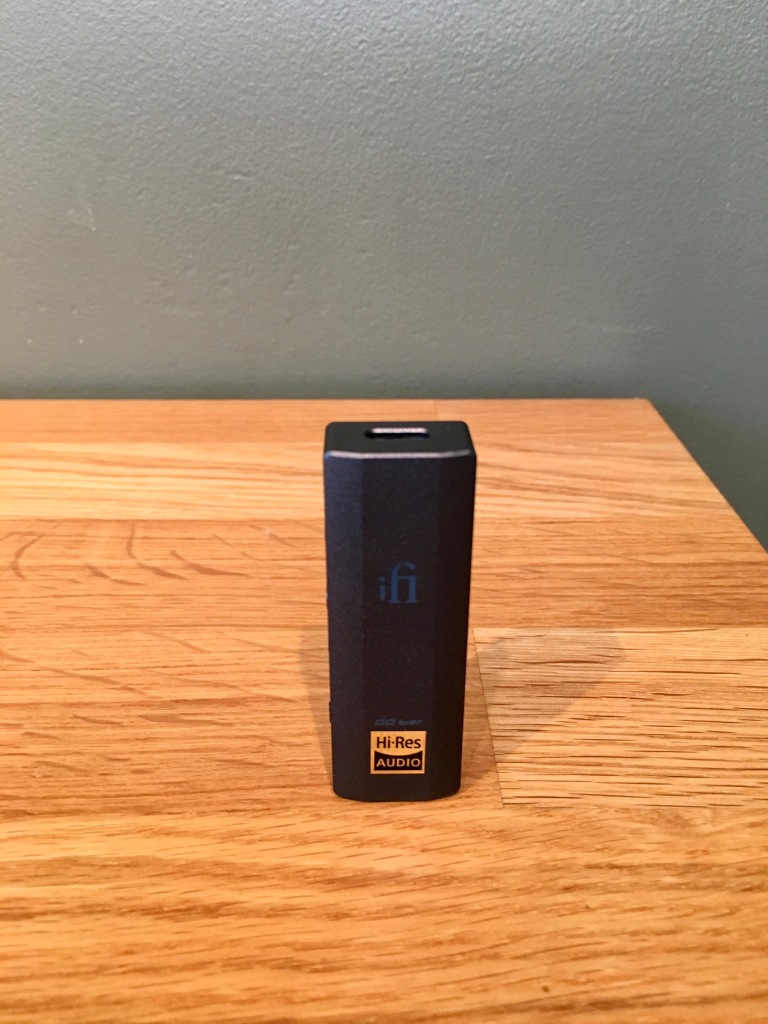
Hi Guy,
Today we are taking a look at what is probably the smallest piece of gear I have ever reviewed, the iFi Audio GObar. The GObar is what typically gets called a USB Dongle DAC/Amp nowadays. I’ve spent time with a few of these types of devices over the years, but it seems that in the last two years or so the availability of options on the market has absolutely exploded. It seems to be the case nowadays, especially from so called “Chi-Fi” companies, that they all have at least one product of this type in their line up. This type of product and its form factor does seem to have advanced rapidly in its capabilities, the GObar being one example of this. iFi is a fairly consistent example of pushing the amount of features available in a device in its given market space and form factor, and the GObar does seem to continue this trend.
I remember back in a 2015 I bought an LH Labs Geek Out V2, which was a disaster in terms of usability and design, but sounded great for its size and the market at that time. I never would have expected devices of this type to have come so far in such a short period of time, but compared to that GOV2, and the original AudioQuest Dragonfly, the GOBar is a revelation. However, it has very stiff competition from the vast array of similar devices on the market, so let’s check out how it sounds and performs.

In terms of overall tonal balance, the GObar reminds me of the time I spent with the HipDacV2 from iFi. Its has that slight warmth to its mid range, but does seem slightly different from the traditional iFi “house sound” I have come to know very well. It’s a bit brighter and sharper than I am used to from iFi. This does work well with some headphones, but if you are perhaps using a bright pair of IEM’s for example, it may not be the best choice. The bass seems mostly neutral to me, not being bloated and sluggish in any way, but also not lean or cold. The mids, especially the lower mids, are again slightly warmer than neutral. The highs are slightly tipped up as I mentioned, but this does help things sound a bit lively and helps details in the top end come across easily.
In terms of things like detail and technical performance, it’s pretty remarkable compared to the dongle market in 2015. The GObar is genuinely an engaging device to listen with. Is it comparable to the Pro iDSD from iFi? No, not really, and yet, you have to keep in mind the size and MSRP of this little device whilst you are using it. I was listening with my T+A Solitaire P at one point, and really didn’t find myself wanting for much. I was just enjoying my tunes, and wasn’t thinking I was missing out on anything or being annoyed by something in particular. The overall detail levels for the price range are totally in line with what they should be, and the sound staging etc…are slightly wider than neutral.

In terms of filter options, the GObar has 4. Bit perfect, Standard, Minimum Phase, and the same GTO filter that is featured on the Pro iDSD. I ended up preferring the GTO filter, similar to my time with the Pro iDSD. My second favourite was the “Standard” filter. Also in keeping with iFi’s other equipment, the GObar includes the XBass+ and XSpace options. I really enjoy the XBass+ with most headphones, but do find the Xspace works better with some recordings than others. Thankfully, both options are easily switched on and off with a single button on the side of the unit, so you can try them out and see what works best for you and your ears.
Also included is iFi’s “IEMatch” technology for use with sensitive IEM’s. This is a very handy option if you are experiencing a bit hiss with your easy to drive IEMs. I ended up not needing it personally (my IEMs are not sensitive at all,) but it is there should you have a sensitive pair.
There is only one input into the GObar and that is done via USB-C. I am so happy iFi went with USB-C and not with Micro-USB. USB-C is a better, more reliable, and overall better connector type with better longevity. In terms of output there is a 4.4mm Pentaconn fully balanced output, and right beside it iFi 3.5mm “S-Balanced” connector, which aims to bring the benefits of a balanced circuit to single ended devices. The GObar does a rock solid 475mw into 32 ohms from the balanced output, and 300mw from the SE output. This is somewhat higher than the power output of similar “Chi-Fi” devices on the market. One thing I would have liked to see on the GOBar is slightly easier to read lettering on its rear. I found myself having to hold it in the light at a certain angle to read what options I had on or off. It’s not a big thing, and I suppose it would spoil the “clean” look of the GObar, but it would make it slightly easier to use.

Now, this is the difficult question. The GObar retails at $329USD. This is higher than the other aforementioned “Chi-Fi” dongle options on the market. If you are in the market for a USB Dongle DAC/Amp and it is simply going to be for totally casual listening, or maybe to serve as a backup for your backup of your desktop setup, then I would seek out one of the cheaper “Chi-Fi” options. A lot of those will do a decent enough job and have enough power for IEMs and easier to drive headphones etc….BUT, the GObar from iFi would 100% be my recommendation for other uses. Perhaps this is going to be your only DAC/Amp, if you are a beginner or need something small and transportable. Maybe you have decently difficult headphones to power as well as IEMs, for those people, I would unquestionably recommend the GOBar. The extra $100 or so USD is worth it in those cases. As with everything in this life, it all depends on you and your own personal use case.
The iFi GOBar, whilst being slightly more expensive than its competition, does bring some new features to the USB Dongle DAC/Amp market, as well as higher power output. It seems to have a lot of the features I have enjoyed about iFi Audio gear, yet it is this tiny little portable dongle. The amount of sound quality, and features in such a tiny package is pretty remarkable. If the GOBar fits your use case, I wouldn’t hesitate to recommend it. If you happen to just need a back up of your backup gear, there are other cheaper options on the market that might suit you better, but if you need a USB Dongle that is more “all out” in its capabilities, then the GOBar is the way to go.
ufospls2
Headphoneus Supremus
Pros: Price/Performance Ratio
Cons: High clamp force
Thin pads
sub bass
Thin pads
sub bass
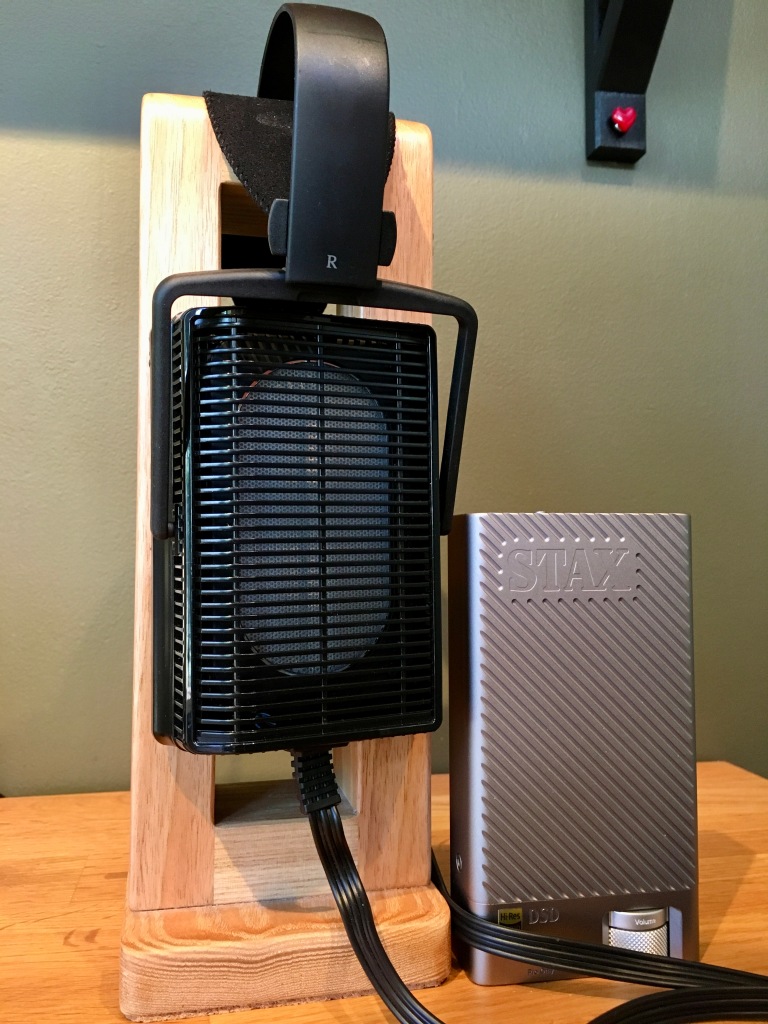
Hi Guys,
Today we are talking about Stax Headphones entry level pair of headphones, the SR-L300 (which I will refer to as the L300 for the rest of this review.) This is Stax’s most affordable model, clocking in at $455USD MSRP. Having spent some time with their mid tier lambda model recently, the L500mk2, I was really looking forward to seeing how the L300 would differ, and if it would offer up a good amount of the L500mk2’s sound for half the price. Let’s dig in to see how it fared.
The first thing that strikes you about the L300 is its unusual frame and look. Largely unchanged since the original Lambda’s in the 1980’s, the rectangular frame is visually striking, if not a bit out there. Still, I honestly like how they look, in that they immediately make me think “Stax.” Looks aren’t that important however, and I am much more concerned about how something sounds, than how it looks.
For the vast majority of this review I paired the L300 with the Stax D10 portable DAC/Amp.

The bass of the L300 is probably its weakest area, especially the sub bass, exhibiting most of the common pitfalls of electrostatic drivers. There is a pretty significant drop off in the sub bass, which is noticeable on some electronic music that goes down that low, and if you watch movies on your headphones, it would be noticeable there also. You can boost it to some extent via EQ, but this headphone is never going to be a sub bass monster. The mid bass actually seems slightly lifted to me, which I enjoy. It gives it a certain sense of punch and fullness. This may be a bit controversial, but I think the headphone community is a bit sub bass obsessed, and whilst it is important, its not the most important thing in the frequency response (and this is coming from someone who is a bit of a bass head.) Most music isn’t going to go below 40hz, and even the most demanding of electronica isn’t going to go below 30hz often, if ever. If you watch movies with headphones, then yeah, I could see it being more important to you, for sure. In terms of bass I’m mostly concerned about how things are from 30-35hz upwards. Doing a slight boost with the L300 via eq via a low shelf actually makes them incredibly enjoyable for most music, and I never found myself being desperate for more bass. In terms of the technical performance of the low end, it’s actually quite good. It has slightly less impact than the L500mk2, and sounded a bit more rounded off on the leading edges. The bass was quick, and kept up with fast passages well, which is one of the main strengths of electrostatic drivers, that I have found, the overall speed and definition.
The mid range is actually interesting compared to the L500mk2. I felt the low mids were a bit more pulled back. I’m curious if this is a decision to tune the L300 to the more main stream preference of a somewhat V shaped tuning, vs a more mid forward “audiophile” tuning. The low mids don’t sound sucked out or hollow, but certainly a bit more v shaped and less present than the L500mk2. The L300 do exhibit a very similar peak to the L500mk2 around about 1khz, which is very noticeable. It gives the sound a slightly nasal congested feel. This is very easily fixed with a little bit EQ, and I think it might just be a characteristic of the current Lambda driver series as all the models seem to exhibit this peak to varying degrees. The L300 is absolutely listenable without Eq’ing this peak, but does 100% benefit from it being lowered slightly in terms of its overall tonality.
The highs of the L300 reminded me of the L500mk2. I felt that came across as being tuned in a fairly neutral manner, in that they were’t dark, but also weren’t painfully bright. There is a tiny bit of tizz to cymbals at times but it was never something that really bothered me (and cymbals can certainly be annoying on some headphones.) There seemed to be a bit of a peak in the lower treble which helped accentuate detail, but I never found the treble sounding sharp or bright, always coming across as being fairly smooth.

The technical performance of the L300 is admirable for its price point. This is perhaps expected due to the fact it is a pair of Stax headphones, and is an electrostatic headphone. It does fall behind the L500mk2 in terms of technical performance when it comes to detail, and dynamics etc…And yet, if I had to put a number on it, I’d say it is about 80% of the way there. Considering these cost half the amount, that’s pretty impressive. I’ve even seen mention of using the L300 with the L500/L700 pads helps get it even closer. The over detail levels of the L300 are very good, beating out some of the planar magnetic and dynamic driver based headphones at around about the same MSRPa
The build quality of the L300 is a step down from the L500mk2, but that is to be expected I suppose. It uses a simple slider mechanism for adjustment of the headband, has a non detachable cable, and feels a bit more plastic-y overall. The ear-pads are a bit less plush and use fully synthetic leather vs the mix of real and synthetic on the L500mk2. I have a fairly large head, and found the clamp force of the L300 to get a little bit much at times. It certainly has a higher clamp force than the L500mk2, which I found totally fine to wear for longer periods. The build quality is acceptable, it all feels well put together, but understandably a bit less premium and well put together than its big brother, the L500mk2.
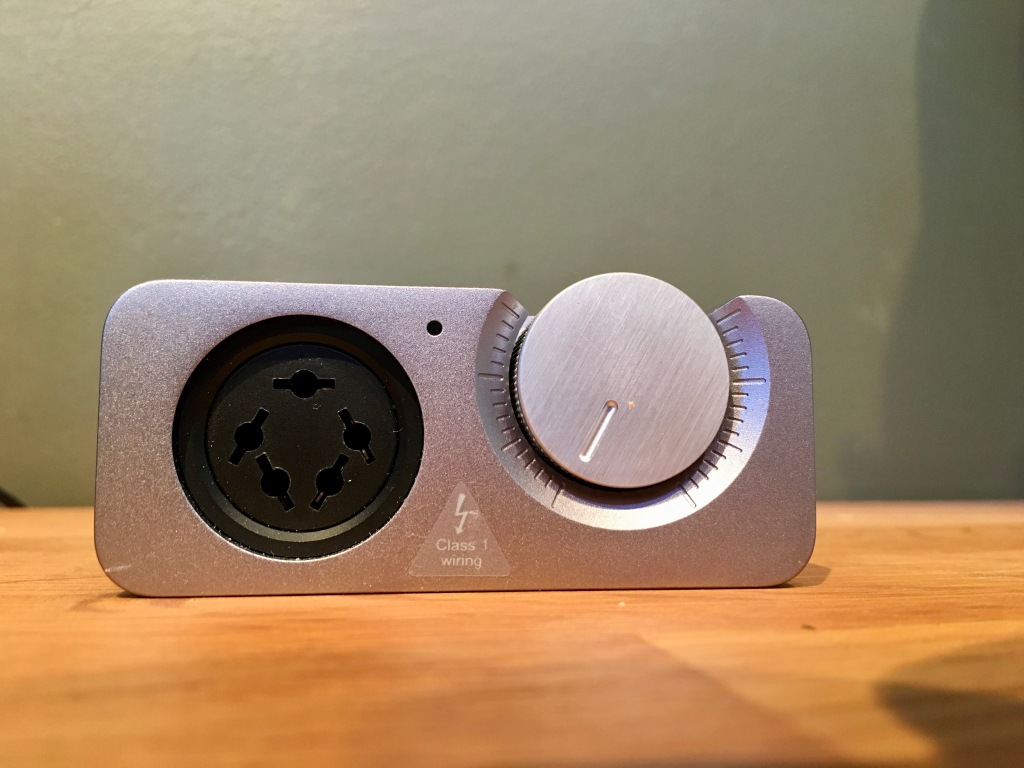
For the vast majority of this review I used the L300 in conjunction with Stax’s portable DAC/Amp, the D10. The D10 is certainly a more affordable entry into electrostatic amplification than most other options (whilst also including a DAC) and also pairs up well with the easy to drive (in terms of electrostatic headphones) L300. I would presume it would work well with the other lambda series headphones also, as they have very similar driver specs. The D10 is a substantial feeling device and is quite solid and heavy. It does have a battery within it, but be warned, although the manual says you will get about 3 hours out of the battery using it as a DAC/Amp combo (vs Amp only) I found that I only got about 2 hours out of the battery at moderate listening volumes. The D10 takes a micro-USB input for use with the DAC section, or a 3.5mm line in, for use with an external DAC. I mostly used it as a DAC/Amp combo during this review. The micro-USB is not something I am a huge fan of, especially if you are going to be plugging, and unplugging the cable often. Micro-USB jacks wear out and get all loose fairly quickly, so if Stax ever revises the D10, I’d love to see them go with a USB-C input. In terms of tonal balance I found the D10 slightly bright, with decent transparency. I tried a pair of hard to drive electrostatic’s on it (SR007mk2) and that was an absolute no go. The D10 just doesn’t have the drive and power to drive them well in the low end. With the L300 however, I suffered no such problems, and ended up really enjoying the pairing. Was it as good as my KGSSHV Carbon desktop amp? No, but you can hardly expect a small portable device to compete with good desktop gear. The D10 does its job well, looks nice, and can handle easier to drive electrostatic headphones with ease. This opens them up to being a possible transportable companion in a hotel room or similar, which for some people will be a huge bonus.

Overall, the Stax Headphones L300 has been a treat to spend time with. At $455 MSRP, I would say it is the first logical stop off for someone curious about electrostatic headphones. It really gives you an idea of what they sound like and are capable of. It can also be driven with more modest amplifiers vs something very difficult to drive like the SR007mk2. Although it feels slightly less premium and uses cheaper materials than the L500mk2 and L700mk2, it provides a lot of the sound quality of its older siblings at a much cheaper price. Heck, if you find a used pair you would be able to try out electrostatic sound for an even more affordable price. The L300 is a great entry level model in my opinion, and if you are willing to tweak its sound signature with a little bit EQ, it gets even better. I could certainly see someone buying a pair of L300 and D10, and being happy and not going any further. They really are an enjoyable listen.
ufospls2
Headphoneus Supremus
Pros: Technical Performance
Build Quality
Comfort
Build Quality
Comfort
Cons: 3khz peak
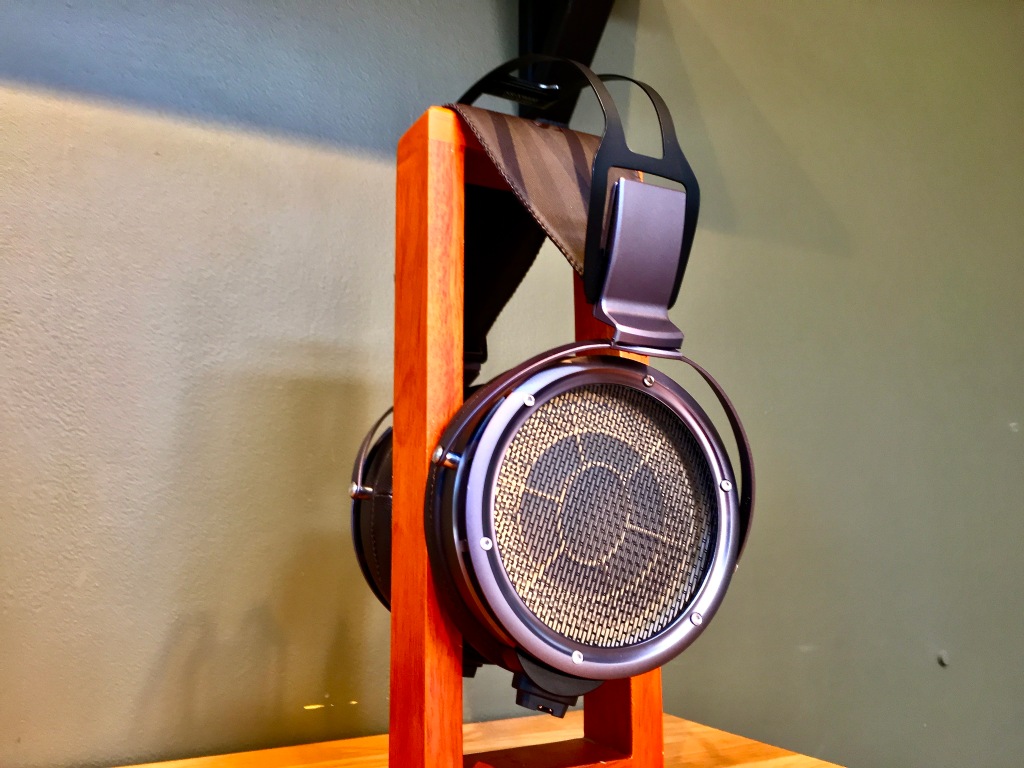
Hi Guys,
Today we are talking about Stax Headphones new flagship model, the SR-X9000. For the rest of this review, I’ll just refer to it as the X9000.
The X9000 is the very long anticipated replacement for the SR009 and SR009S, the previous flagships from Stax. With such a long history and such a dedicated cult following, a new flagship from Stax is a big deal, at least in terms of the headphone hobby. I remember people speculating what would be next ,even back in 2014/2015, and now today, in 2022 we have the X9000. The X9000 was released back in September of 2021, but I think Stax has been a bit overwhelmed with orders, and is struggling to fulfill the demand from the community. Wait times as of right now are very long, and there are still people who ordered back in October/November 2021 (currently July 2022) waiting for their headphones to arrive. With that being said, there does seem to have been a few more shipments arriving lately, so if you are reading this and still waiting for your pair, I hope you will have them soon.
The X9000 builds upon the “omega” legacy, which started with the original SR-Omega, back in 1993. Then there was the SR007, the SR007mk2, the SR009, and the SR009S. I have not heard the original Omega from 1993, which does have a cult following of its own, but I have heard all the others. The X9000, to me, is not really an upgrade of any one particular Stax Flagship, nor is it a mix of SR007 and SR009. It is sort of doing its own thing. I have done a lot of comparative listening, and the X9000 is absolutely my favourite Stax headphone I have heard thus far, minus one caveat I will mention a bit later.
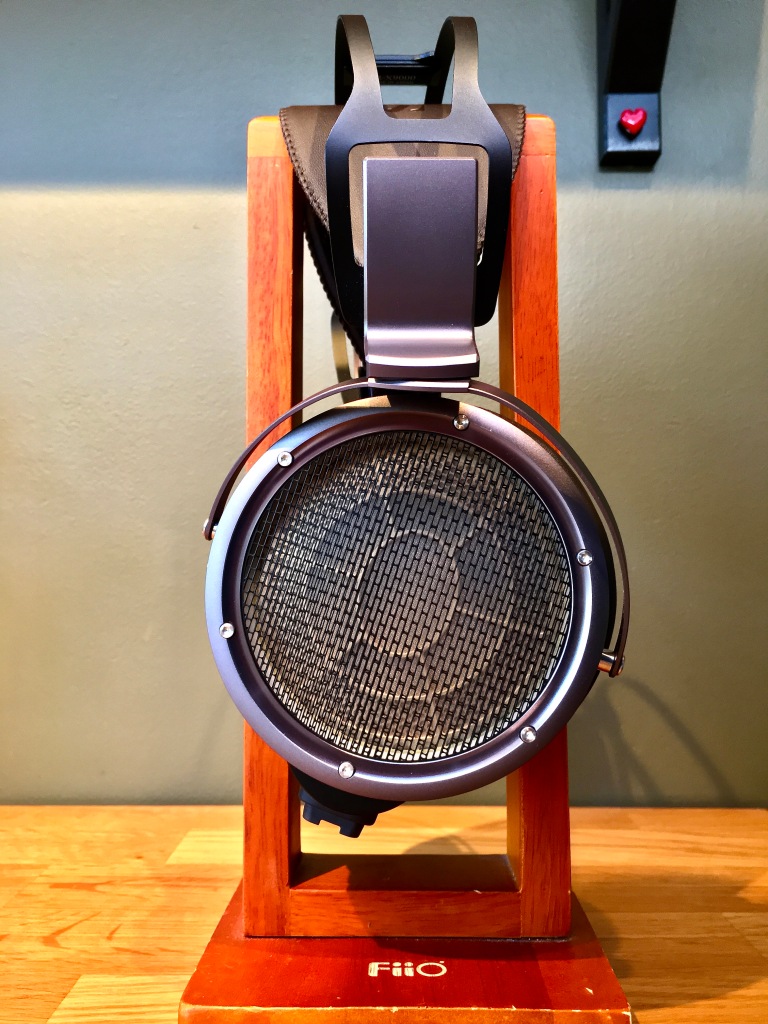
The bass of the X9000 has been surprising. Not so much in its overall level, though it does have more bass than the SR009. It has a bit less in terms of quantity than the SR007, with the Sr007 sounding fuller and warmer, with a bit more mid bass. The X9000 has the best quality of bass I have heard from Stax. It’s very fast, with more impact than is usually associated with something like the SR009. Admittedly, it does not have the impact or slam that the Abyss 1266TC has, but not much does to be honest. In terms of level, I could certainly enjoy the X9000 in its stock tuning, but did find a +3db low shelve brought it more in line with my personal preferences. I never found myself wanting more from the low end performance of the X9000, and its sub bass was also quite impressive for an electrostatic design.
With regards to the X9000’s midrange, Stax seems to have err’d on the side of slight warmth, and a forgiving nature in the low mids, much less so than the SR007, but more so than the SR009. Now, this brings me to the caveat I mentioned earlier. In the first couple days of listening with the X9000, there was something that just wasn’t sitting right with my ears, and was annoying me at anything above a medium listening level. It was the peak at 3khz. I just couldn’t get on with it, and ended up lowering it by 3.5db via EQ, and the X9000 went from being frustrating to listen to (because I could tell it was a very accomplished headphone) to being one of the best I have heard, period. Now, to make a quick comparison, the Audeze CRBN has an even bigger peak at 3khz, and I found I was not able to rectify them with EQ to be in line with my preferences. There are a lot of people out there who enjoy the stock tuning of Audeze’s CRBN, so you may hear the X9000 and be totally ok with its peak at 3khz. Perhaps I am just sensitive to this area, and you may not be.

The treble of the X9000 is not dark, nor is it bright. It seems to me to be leaning towards a relaxed presentation, neutral-ish, but leaning towards dark rather than bright. Given peoples issues with the somewhat bright treble of the SR009, this tuning decision makes sense. I wouldn’t say the X9000 itself is actually a very laid back headphone, its still relatively forward sounding, and it doesn’t strike me that it is masking detail by being overly dark. The treble and leading edges or notes are fairly incisive sounding and I never founding myself wincing at cymbals hits or shrill vocals when listening at spirited volumes.
Now, for me personally, what made the X9000 really standout was its technical performance. I have seen some impressions that felt it didn’t really improve over the SR009 in this area, and I have to be honest, I feel completely the opposite. I have listened extensively back to back with the SR009, and the X9000 really has taken a big step forward. Pretty much every single metric has been improved over the previous flagship. The sonic image is much bigger, and the soundstage is wider. The overall detail levels are again improved in comparison to the SR009. Imaging is also improved over the SR009, which is surprising as I always felt that was one of the SR009’s strong points. I have a suspicion the ear pad design of the X9000 may be contributing to the overall larger sonic picture, as well as the larger driver. Stax really does seem to have managed to improve the drivers performance compared to their previous flagship models, so in that sense, the ten year wait between the SR009 and X9000 was worth it.
In terms of build quality, the materials used, and overall feel, the X9000 is on par with the best I have come across. It is a lightweight and extremely comfortable headphone, and also feels more premium than the other Stax headphones. The leather of the ear pads feels very nice and “high quality.” This is one area I felt Stax could improve upon previously, and I have to admit that for the MSRP, the X9000 certainly feel as if they are made to that standard. In comparison, something like the Hifiman Shangri-La lacks in this area, but the X9000 has really delivered on its promises of being a high end flagship in terms of build quality. The X9000 also comes in a nicely done pawlonia wood box, and the overall package feels well put together, and again, of a “premium” nature.

One comparison that makes a lot of sense is to compare the X9000 to the Hifiman Shangri-La Sr. Both are flagship electrostatic models, though as I mentioned previously the build of the X9000 is certainly superior between the two. However, sonically speaking, its a much closer battle. The X9000 has a similar “large” sonic image to the Shangri-La, with the Shangri-La having a taller soundstage,but the width between the two being similar. The overall detail levels are very similar but I would give the edge to the Shangri-La by about 5’ish %. The Shangri-la is a slightly brighter, and also more forward sounding overall, with a sharper leading edge to notes. There is a sense of delicacy and air that the Shangri-La has that the X9000 doesn’t. With that being said, the X9000’s tonal balance works very well for some music, more so than the Shangri-La. If you are concerned with budget, the X9000 is the obvious choice ($6200MSRP vs $18,0000MSRP) because it comes incredibly close to the SR in over technical performance whilst also performing better with some forms of music.
In comparison to the Abyss 1266TC, these are actually two very complimentary headphones. The Abyss has this raw energy, slam, visceral quality that I have still yet to hear a headphone match. It is also a very detailed headphone with a highly capable technical performance, though I do think the X9000 may slightly beat it on the detail front, but the difference is incredibly small. I could honestly see someone deciding upon these two headphones as a pair of complementary flagships to own.
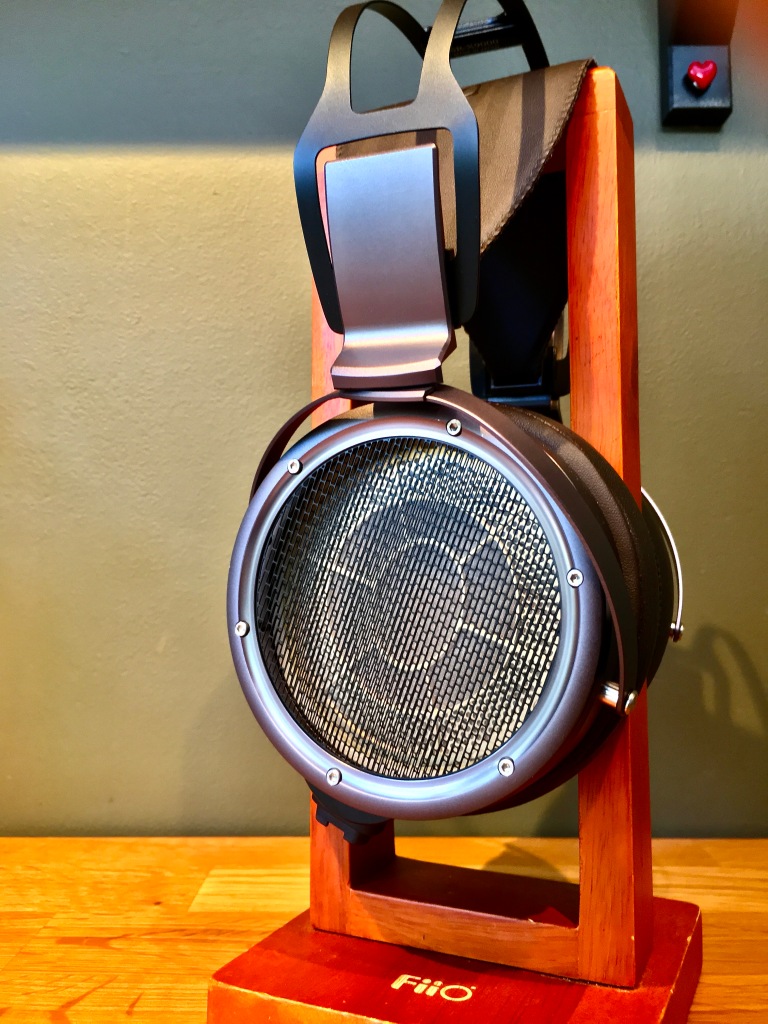
Overall? The Stax SR-X9000 has taken a long time to arrive, but I do believe it’s been worth the wait. It’s the most complete and competent Stax headphone I have personally heard (keeping in mind I have not heard the original omega.) Stax seems to have listened to customers complaints about their previous headphones and done their best to address them. The somewhat lean and bright sounding SR009 has been fixed, and the somewhat overly warm and lacklustre build quality of the SR007 has also been addressed. That’s not to say the SR-X9000 is without fault, as I do find it has too much energy in the 3khz range, which is thankfully easily fixed by a tiny tweak with EQ. Once that has been done, the SR-X9000 has comfortably made it into my top 3 personal favourite headphones. The Abyss 1266TC, The Hifiman Shangri-La SR, and the SR-X9000. I look forward to seeing what Stax comes up with for the next flagship, see you in a decade or so
ufospls2
Headphoneus Supremus
Pros: All in one nature - Executed very well
Higher performance than original model
compact
Higher performance than original model
compact
Cons: Fairly expensive
Build quality could be more "premium" feeling
Build quality could be more "premium" feeling

Hi Guys,
Today we are taking a look at iFi Audio’s recently released update to their flagship all in one DAC/Amp, the Pro iDSD Signature. For the rest of this review, I will refer to it as the iDSD Sig.
I reviewed the original Pro iDSD about two years ago, and really did quite enjoy it, and all the capabilities it contained. The new signature model is honestly not that different in terms of features, being more of a refinement of the overall concept, rather than a brand new product. In this sense, the new signature model feels like the obvious conclusion of this iteration of the iDSD concept. Compared to the original model, the small improvements here and there all add up to a product that feels more mature, more complete, as well as fixing little things that may have been left on the table with the original model. I would recommend reading my original review, as I think this could be considered as a long addendum to that review, rather than a stand alone review of a new product.
In terms of looks, the iDSD Sig is actually the same. It features the same chassis, and features, with the only difference being a golden “signature” badge underneath display, and golden surrounds of the two main knobs on the front of the unit. These little bits of sparkle are actually totally welcome, and do give the product a little bit more intrigue in terms of looks. Don’t expect a massive difference though, as it is still largely the same original silver chassis in terms of size and shape.
Funnily enough, this actually reflects the sonic changes for the new iDSD Sig also. The overall tonal balance is pretty much exactly the same I have found, but some key upgrades in terms of parts quality etc…have brought an increase to the technical performance of the unit. The changes are all incremental improvements vs. an entirely different sounding device.

iPower ELITE
The first thing you will notice when unboxing the new iDSD Sig is the included iPower ELITE power supply which comes standard with the Signature edition. It is a hefty unit, being very well made, and feels great. I did try doing some switching between a generic cheap power supply unit, and the included ELITE version, and found that it brought a sense of a blacker background, which does help with perceived detail and space. It is not a huge difference, but as the ELITE unit is included stock, I think it is a welcome addition, and does bring some improvements to the overall sonic performance of the iDSD.
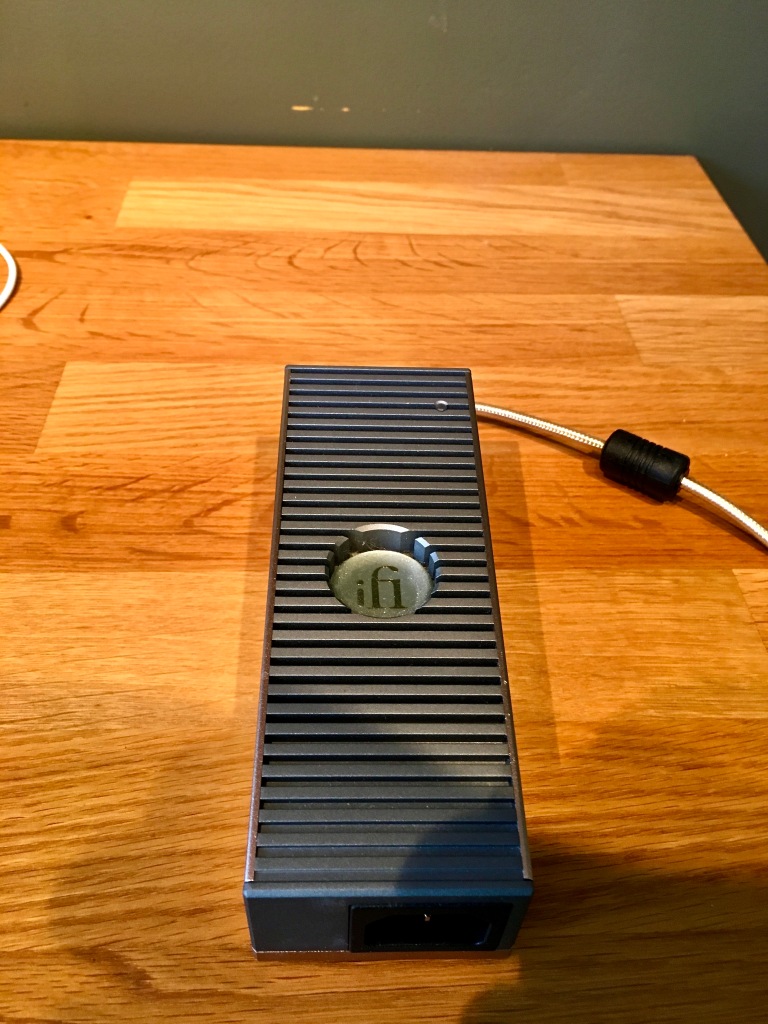
iPower ELITE
The tonal balance of the iDSD is again largely similar to its predecessor. There is a slight warmth to the sound, and I certainly wouldn’t say the iDSD Sig is a cold sounding device. Similar to the previous model, the iDSD Sig features three modes of operation. Solid state, Tube, and Tube+. I largely settled on using the Tube mode as my favourite, but they do all have slightly different signatures. The Solid State mode is the most incisive, with a faster sound and sharper edges to the notes. The Tube mode slightly rounds off the leading edges of notes, and adds a very slight hint of harmonic richness that isn’t there in solid state mode. To be honest, the difference is very small between the two modes, which is why I ended up preferring the Tube mode. Tube+ does take it slightly more to the more relaxed and rounded off side of things, which ended up not being my overall preference. The Pro series ability to switch between all three modes is still a unique feature, and really does add to the “Swiss Army Knife” nature of the series. You can switch between modes depending on your headphones or speakers used, and also your mood and listening tastes.
I remember that with the original iDSD I mainly used the Bit Perfect + mode, but after more time with the iDSD Sig unit, I ended up using iFi’s GTO filter. “Gibbs Transient Optimized.” I did do a lot of back and forth between the modes, but the GTO filter did seem to be the most incisive, “correct,” and overall, the most refined sounding filter. I’m not sure why I ended up preferring it over the Bit Perfect + mode I used on the original model, perhaps my hearing preferences have changed over time. Regardless, I would recommend experimenting with all the various filters and options, to see what works best for you and your ears. The iDSD Sig also features DSD512 and DSD1024 upsampling just like the original did. As with the original, I didn’t find these made massive differences, but the DSD1024 upsampling was worth trying. I found I preferred it for electronic music, and fast paced heavy metal and similar. Again, it’s something worth experimenting with, as everyone is different, and you may end up preferring your music without the DSD upsampling.

Rear
The iDSD Sig is an all in one unit, just as its predecessor was. The headphone amp does have slightly more power (4200mw vs. 4000mw) from the balanced output. Also included is the 4.4mm balanced pentaconn output, vs the originals 2.5mm output (though after some time the original model did include the 4.4mm output also.) This is a welcome addition, as it is just a better, more sturdy option compared to the 2.5mm balanced jack. With 0db, 9db, and 18db gain option, the pro iDSD can drive most headphone on the market. For me, it reaches its limit with the AB1266 TC from Abyss, and I wouldn’t recommend it for the Susvara or HE6seV2 (or similarly hard to drive headphones.) Although the headphone amp is not the most competent on the market, I think it has to be taken into consideration that this is a small, and compact all in one. In that context, it is actually a very good performer, at an attractive price (again, in terms of an AIO.) The Pro iCAN Sig obviously exists for a reason, and I would recommend it for someone who wants a dedicated headphone amplifier with higher performance than the iDSD’s all in one nature. With that being said, if you are a more casual user, or perhaps you mostly listen to speakers using the iDSD as your DAC, and want to use headphones at night when its quiet, the iDSD Sig absolutely has you covered. You can also use very sensitive IEMs with the iDSD Sig from the 3.5mm output, which has iFi’s “IEMatch” feature, to help reduce any hiss.
The overall technical performance of the iDSD Sig seems to be where most of the improvements are, vs a change in its overall tonality etc…While the ELITE power supply helping bring about a blacker background with more perceived detail, things like improved capacitors etc…and tighter matching tolerances of the components seem to have lifted the iDSD Sig’s overall performance also. Again, it’s not a vastly different sounding unit to the original iDSD, it just sounds slightly more refined, more detailed, more spacious, and improved in an overall sense on the technical side of things.
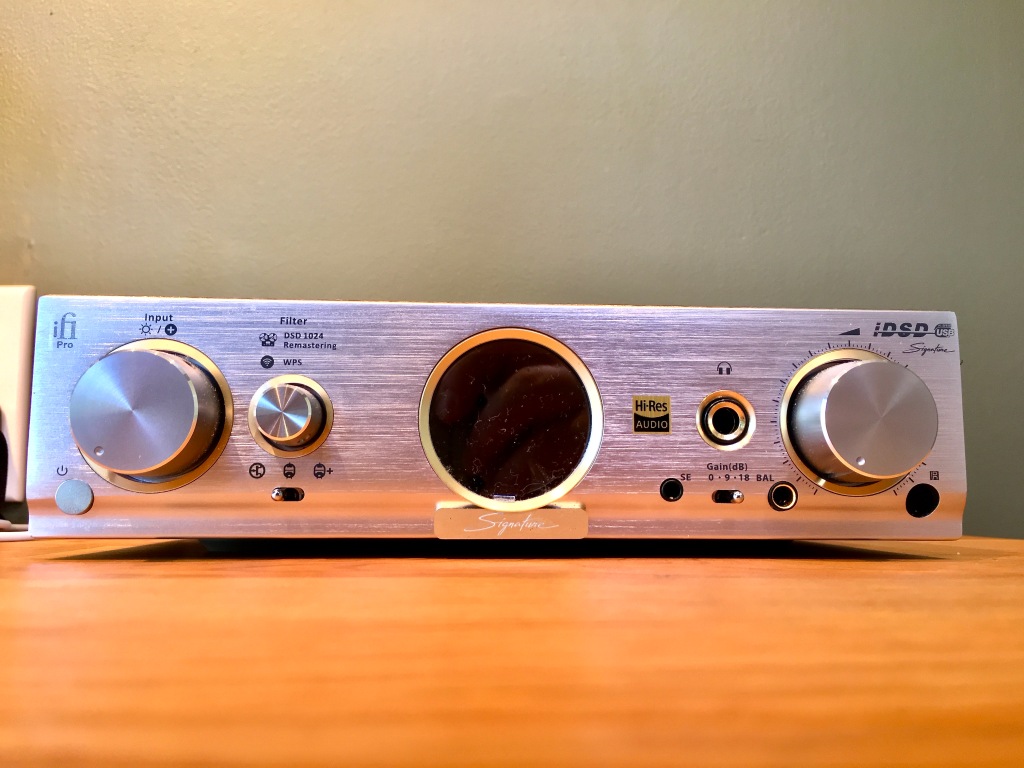
Front
The Pro iDSD Signature from iFi is a seriously great all in one unit, just as its predecessor was. It has taken the sound from the original model, and built upon it in a meaningful way. Although the sound in terms of tonal balance remains very similar, it has improved its technical performance, through better components and a much better power supply unit. It retains the awesome Swiss Army knife like capabilities of the original, and thankfully also retains the same size and almost transportable nature of the original also. I think for the right customer with the right needs, the iDSD Sig is hard to beat, as it simply covers so many areas in a competent manner. If you only need a pure DAC, and have more space whilst also wanting to keep your budget in check, you may be served by better dedicated DACs. However, for those who want a multi functionary device, tubes, DSD upsampling etc…there really isn’t a better option on the market for an all in one option.
I’m looking forward to what iFi comes up with next for their “Pro” range, but for now, the Signature iDSD and Signature iCAN certainly have people’s needs covered.
ufospls2
Headphoneus Supremus
Pros: Comfy
Lightweight
Good technical performance for the price
solid bass for an electrostatic
Lightweight
Good technical performance for the price
solid bass for an electrostatic
Cons: Little bit nasal in the 1khz range
plastic-y timbre at times
plastic-y timbre at times
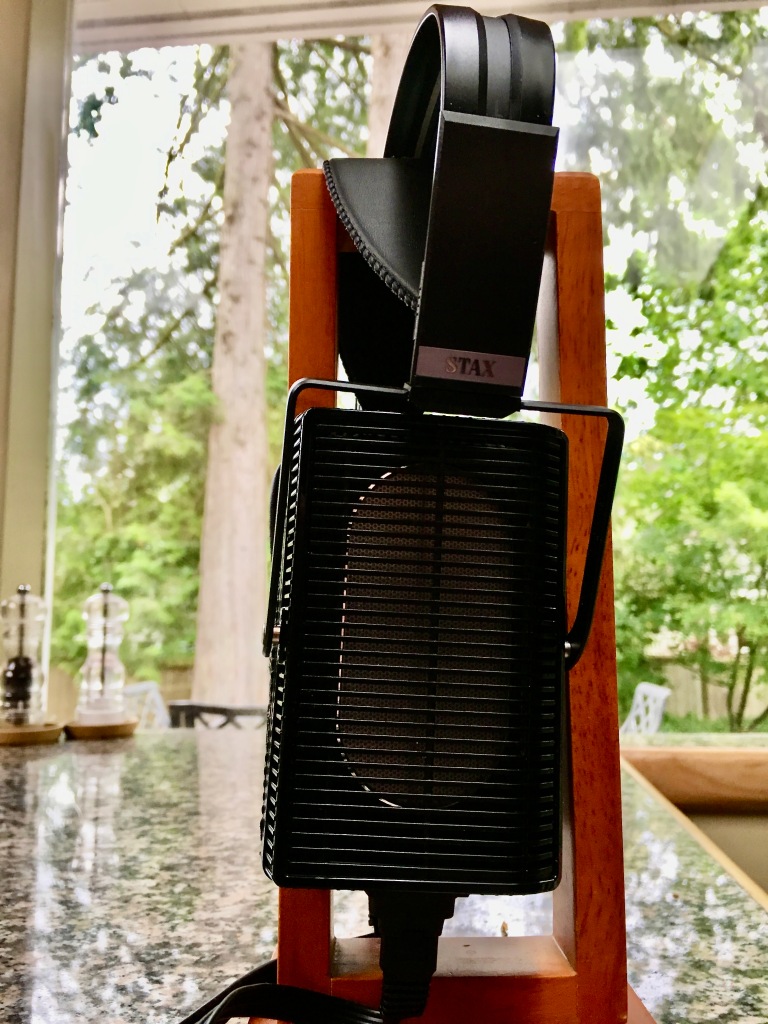
Hi Guys,
Today we are talking about an entry level, or should I say closer to entry level headphone from Stax Headphones of Japan. The L500mk2, which I will simply refer to as the L500 for the rest of this review. This is the middle of the road headphone in Stax Lambda line up, retailing currently at $830USD. The Lambda line up has existed in one form or another since the 1980s, always featuring the distinctive square housing. I think this is perhaps the most commonly thought of shape and design when people mention Stax headphones. Like their Omega, top of the line siblings, the Lambda series from Stax are electrostatic headphones, thus requiring some form of dedicated amplification to drive them, not being able to be driven from a conventional headphone or speaker amplifier.
For the majority of this review, I used a KGSSHV Carbon, fed from an iFi iDSD Pro DAC.
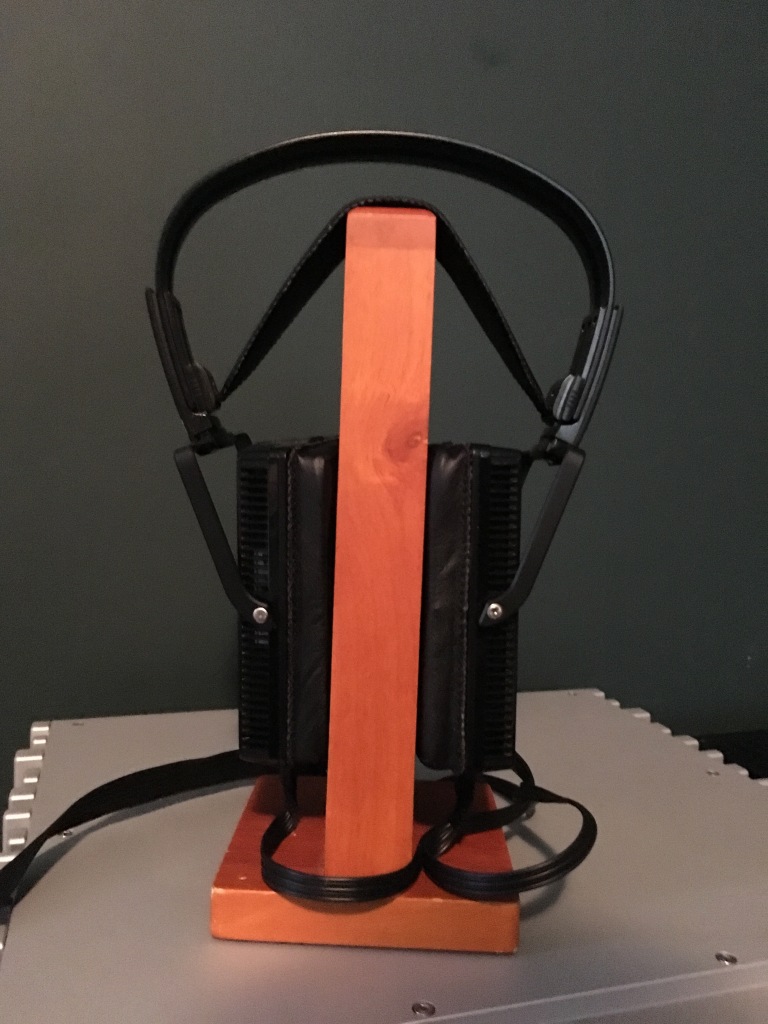
The most interesting and surprising part of the L500’s tuning for me was its bass response. Electrostatic headphones have a fairly poor reputation for their overall bass level, usually being quite light handed in this area. I figured the L500 would be similar to the 009 in its level of bass, but it was actually much fuller sounding, by a large margin. It also had a slight amount more mid bass, as well as overall impact in the low end. For me personally this was a welcome change. It does have a bit less overall bass level than the 007mk2, but not massively so. Some listeners may actually much prefer the L500’s bass level and overall presentation, based on their personal preferences.
The midrange of the L500 was somewhat forward sounding, but slightly less so than the 007mk2, which is still the warmest headphone I have heard from Stax. I was entirely ok with the stock midrange response of the L500, apart from one area. Right around 1Khz, there is a bit of a peak which can cause some sounds and vocals to become slightly nasal sounding. Its not a large enough peak to be a deal breaker on enjoying the headphones, but bringing this area down slightly via EQ did really increase my enjoyment of these headphones. Apart from that, the mid range came across as slightly warm and forward, certainly not sucked out or cold and clinical. This is an interesting tuning choice, and I think it makes sense given the price range of the L500 and its overall goal in the marketplace. It’s not striving to be the most technically advanced headphone, but a good all rounder that is enjoyable to listen to for long periods of time. In that sense, the mid range tuning works very well.
The highs of the L500 are less bright and piercing than the SR009, and less dark and muted than the SR007mk2, making me think that they are doing their best to walk the path between the tuning of the two former flagship headphones from Stax. Again, this is a smart tuning decision, as it allows you to get a fairly high amount of clarity and sense of detail, whilst also being enjoyable for longer listening sessions.
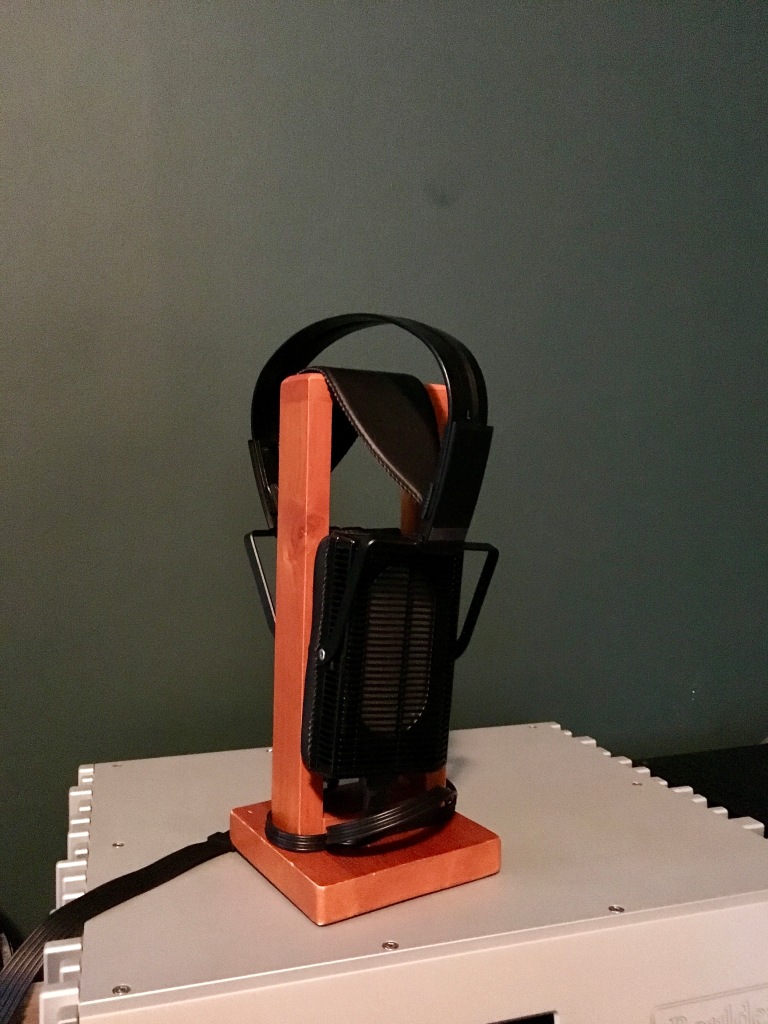
In terms of detail and technical performance, the L500 is interesting for a few reasons. The overall details levels are absolutely commendable for their $830 MSRP, although this comes with a caveat I will mention a bit later. As I mentioned earlier, I actually found the slam, or impact of the L500 to be better than it is with the 009, but its overall dynamic performance does fall behind. The L500 is also a slightly slower sounding driver overall, not having that same level of speed and “notes are tied together” feeling some top level electrostatic headphones do. There was also a very small sense of a somewhat“plastick-y” nature vs some other more natural sounding headphones on the market. I didn’t find this to be bothersome at all, it was just something I noticed on a few tracks.
The soundstage of the L500 is actually incredibly enjoyable, being very open and airy sounding, fairly wide and tall, which may be due to the shape of the driver (more of a tall oval, than round.) Imaging again is entirely acceptable in this price range, though not class leading. Not that you would expect a middle of the lineup headphone to be class leading I suppose. The comfort of the L500 is very well done, I found them incredibly comfortable. The build quality is acceptable, but do be warned they are fully made out of plastic, thus leading to an overall feel that is not the most premium.
This leads me to the Caveat I mentioned earlier. The L500 is an $830 dollar headphone, and its overall sound and performance is commendable at that price
BUT
You need an amp, or transformer of some sort to drive them. This is less of a concern when dealing with the flagship level Stax headphones, as it is generally understood you need a good amp of some sort for them, and many listeners will already have one in their collection. These amplifiers come in at varying price points, but cannot be avoided. If you already have one at your disposal, then the L500 is easy to recommend. If you don’t, then it becomes a question of – do you like the sound of electrostatic headphones, and if you do, how much, do you like that sound signature? Its very easy to buy a $1000 dollar conventional headphone, and drive it with a suitable $99 dollar amp, and reach totally satisfying sound quality levels. With the L500, you will be looking at probably equalling the headphones cost at a minimum for the amplification of said headphones. This is a conundrum, and as mentioned before, it comes down to your personal preferences, and where you feel your money will go farthest. As such, I would recommend trying out the L500 locally if possible, or at a trade show, before deciding to go all in on the land of electrostatic headphones.
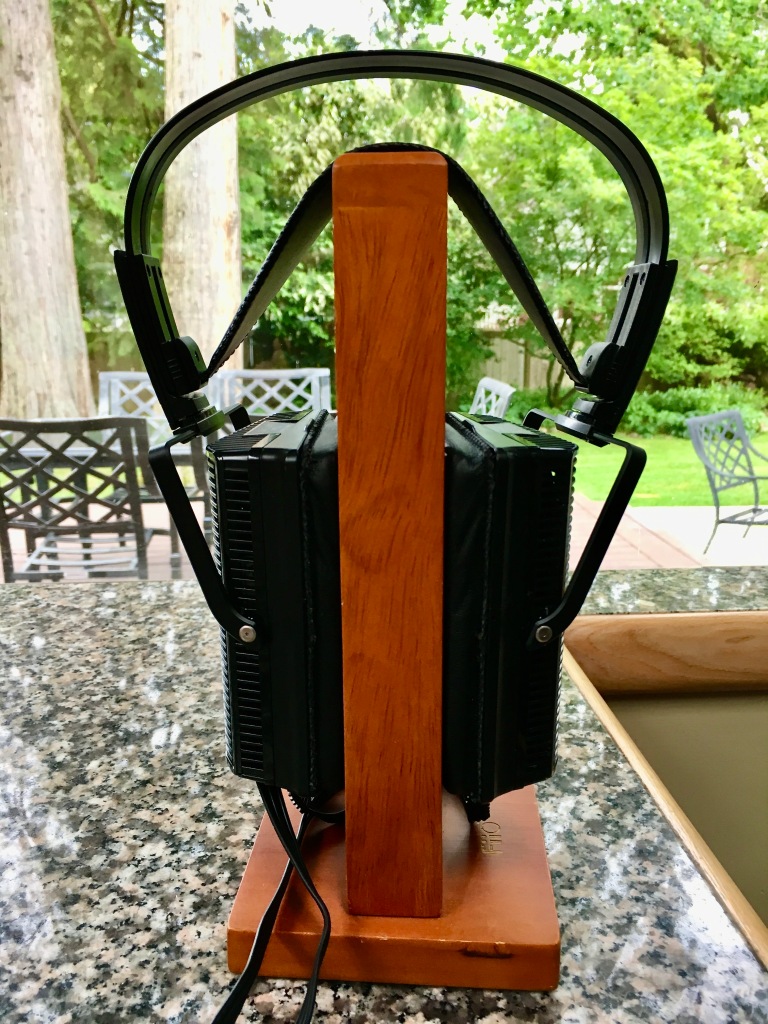
With all that being said, these headphones sound seriously great for their MSRP, and electrostatics do offer some traits and qualities that other headphone technologies simply can’t. Whether it is worth it to you to try them out, is entirely up to the individual. For me personally, I’m glad I’ve been exploring electrostatic headphones lately after spending just short of a decade largely avoiding them, as its been incredibly fun to do so, and as mentioned before, they just do some things others headphones can’t (and it’s up to the individual if they value those particular things.)
The Stax L500mk2 is a very interesting headphone. I love that it carries on a similar look to the classic Lambda series headphones from the 1980s, whilst also sounding quite modern and presenting a sound signature that is enjoyable for long chilled out listening session. They also seem to bridge the gap between the much more expensive former flagship Stax headphones and other conventional headphones on the market. If you are willing to take amplification needs into account, I would very much recommend these headphones to someone looking to try out electrostatic headphones. I am hoping to borrow the L300 from Stax at some point, as that may prove to be an even more compelling entry level electrostatic headphone at its $455 MSRP. Two thumbs up from me
capetownwatches
Very well presented review indeed.
I have the L500 MK1 and along with a 353X they fully satisfy my estat cravings.
I have the L500 MK1 and along with a 353X they fully satisfy my estat cravings.
davidbea
Topping has just released an electrostatic amplifier for a very reasonable price making these ear speakers an intriguing option.
TOPPING EHA5 Electrostatic Headphone Amplifier
https://apos.audio/products/topping...7ejuH_fHPknHMbDq3qG0q6tJ46orkeKRL8fs8p.Ldk8SWufospls2
Headphoneus Supremus
Pros: Balanced tuning
Price/Performance
Looks
Price/Performance
Looks
Cons: Bit Heavy
Loose clamp
Loose clamp
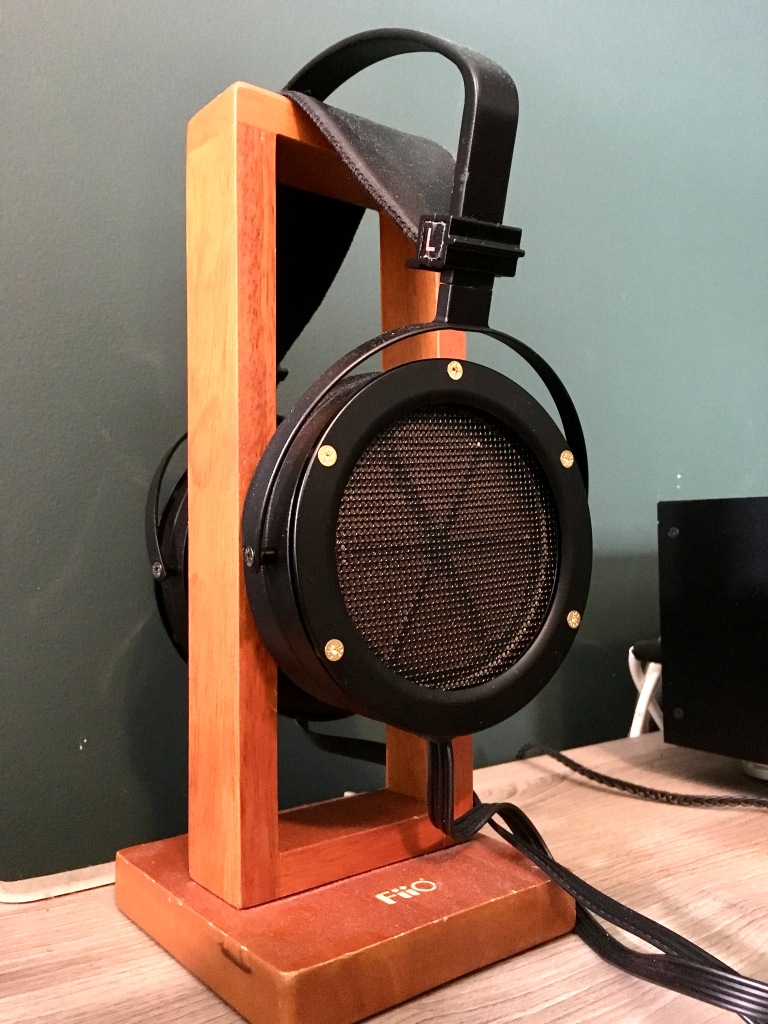
Hi Guys,
Today we are talking about a very interesting headphone from Hong Kong, made by the company ES-Lab. ES Lab started out repairing old Stax headphones, and doing DIY work, eventually leading to the release of their ES1a headphone, their take on the Stax Sigma, and most recently their recreation of Sony’s legendary R10. The ES1a is styled after the original Stax Omega from the 1990s, but all in black, with gold screws. Although the looks are very similar, the sound between the original Omega and the ES1a is supposedly somewhat different, although I have never heard an original Omega to do a direct comparison. The ES1a retails for right around $1750USD which for the performance it provides, is honestly quite compelling in todays headphone market, especially in term of electrostatic headphones.
The vast majority of this review was done with the HeadAmp BHSE, a KGSSHV Carbon, and an iFi Pro iDSD DAC as supporting gear.
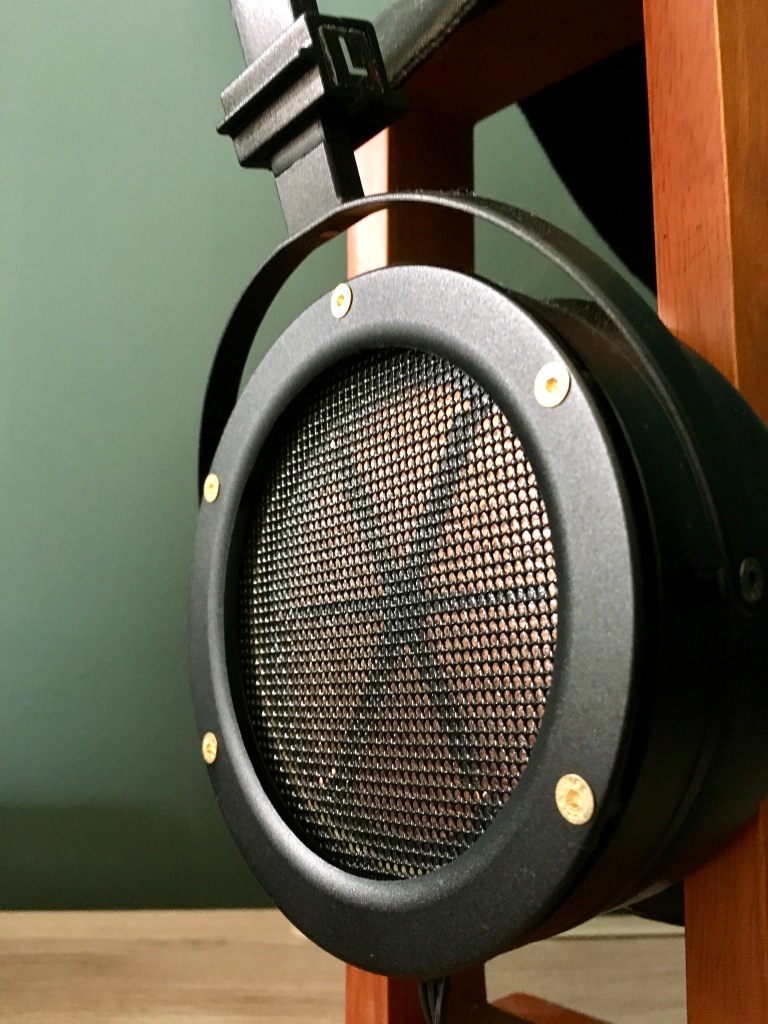
In terms of level, the bass of the ES1a in its stock tuning is not enough for my personal preferences. I think this may partly be due to the very loose clamp force the headband provides. I do have quite a large head, and even I found it to be a very loose fitting headphone. When I very lightly provided a more secure seal, the bass level did rise slightly, and seemed to also be a bit punchier. If you are open to EQ’ing up the bass via a simple low shelf, then that also solves the problem easily. There is about the same amount of bass as a stock SR009 I find, and certainly a bit less than the SR007mk2. With that being said, after a small EQ boost, the bass is entirely satisfying, and has a somewhat rounded off leading edge. There is slightly more impact than the 009 and about the same amount as the 007. Overall, I think people’s perception of the bass may differ depending on the clamp level they experience from the headphones, and the seal they are able to get with their head shape and the ear pads , but the overall bass quality is actually very good and can be tweaked via EQ to the users preference. Once thing to note is that it helps to have a powerful amplifier, as these headphones are quite hard to drive, especially if you take negative gain compensation on the EQ if you are boosting the low end.
The mids of the ES1a make them a less thick and warm sounding headphone than the SR007mk2, yet less cold and thin than the SR009. They really do split the difference between the two quite nicely. There is a slight amount of warmth and “sweetness” to the mids that I really enjoyed. Around about 1khz there is a bit of a bump I think, and this seems to be an electrostatic thing, as a lot of examples I’ve tried have this bump. Honestly, I could have thoroughly enjoyed these without any tweaking via EQ, but I wouldn’t be surprised if some people preferred a little dip via EQ at around about 1khz. I never found the ES1a to sound somewhat nasal and honky due to the 1khz range where on some other headphones that certainly can happen. Apart from that, there really isn’t much I found about the midrange of the ES1a to be offensive at all. I really liked how these headphones worked with all sorts of music styles and were never overly shouty or harsh in the upper mids.
The treble performance of the ES1a is where it excelled for me personally. There is a bit more energy in the highs than the SR007mk2 but less than the SR009, again splitting the difference between the two very well. I didn’t find the treble at all tizzy or sharp, bright or harsh. Yet at the same time it never sounded dull or as if it was smoothing over details and going towards being a darker tuning. Overall, the treble response of the ES1a is probably the best aspect of its overall tuning and is incredibly pleasing and addictive. In a way, it reminds me of the treble of the Hifiman Susvara. It’s not as finely detailed as the Susvara, but in in terms of its overall character and tuning, there were similarities to my ears.
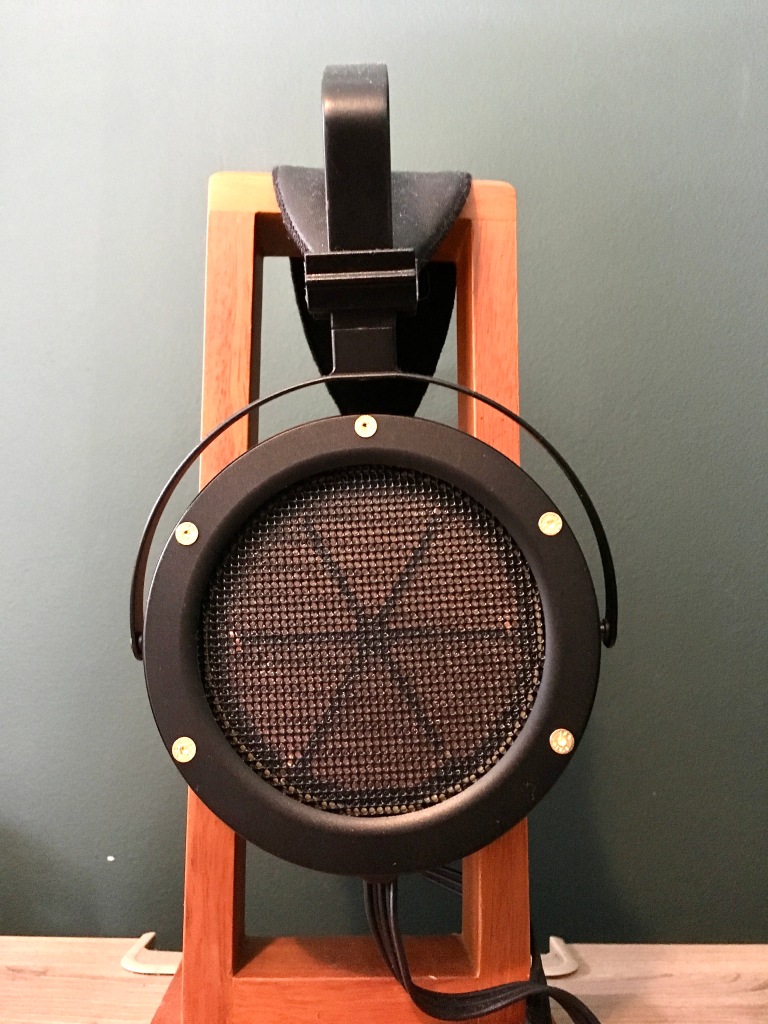
In terms of technical performance, the ES1a is quite impressive, especially in terms of their price/performance ratio. Their overall detail level seemed to be quite similar to the 007mk2 from Stax, but the overall sound image was much larger than both the SR007mk2 and the SR009. The soundstage was wider, taller, and larger front to back than both of the Stax offerings. I suppose this may have to do with their pad shape and tuning. Microdetail was also quite well done for an electrostatic headphone in this price range. I did find that they were again similar to the SR007mk2 in terms of their dynamic performance, both micro and macro. Nothing groundbreaking, but again, very good for the price.
The ES1a is about on par with the SR007mk2 in terms of how hard they are to drive, meaning they seem to love power, and will do best with a good powerful electrostatic amp behind them.
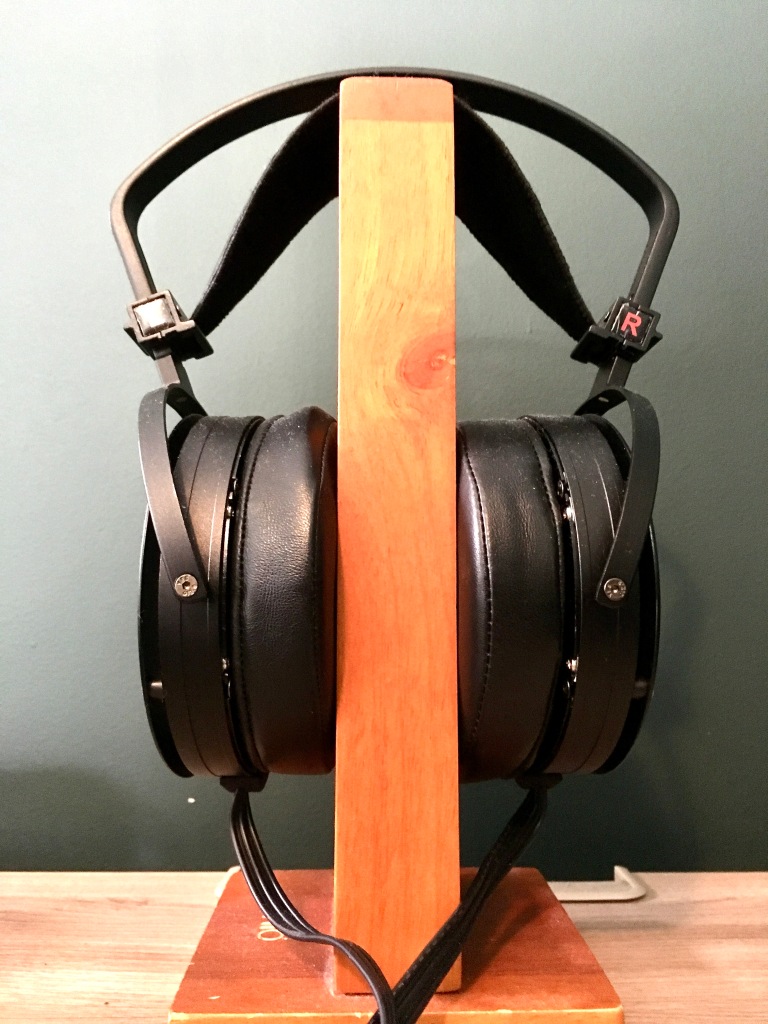
In terms of build quality, the ES1a seems entirely acceptable and actually feels more substantial than the SR007mk2 The construction materials are a mixture of metal and plastic, and although they do weigh quite a bit, they never felt like a burden to wear (as some Audezes and similar can feel over time.) I would personally like slightly more clamp force, simply to make the ES1a feel a bit more secure and snug on the head, and I also think it might help their low end performance slightly. The cable is very similar to the ribbon cable you get with Stax headphones, and seems well built, and does the job nicely. In terms of aesthetics, I think they look awesome. They take the shape and design language of the original Stax Omega and update with a sleek all black look, with slight gold accents from the screws. It works for me, and I think they are one of the better looking headphones I have come across.

Overall, the ES1a is a great pair of headphones, especially if you tend to favour electrostatic headphones and what they do well. Although the low end in its stock tuning isn’t really anything groundbreaking, the mid and treble tuning are very well done, and the detail and technical performance is very good for their asking price. If you don’t mind boosting the low end a little with a bit of EQ, then I could see these being great all rounders. If someone were looking into buying a Stax headphone at SR007/009 type pricing, but can’t figure out which they would prefer, or just want a better all rounder whilst also saving some money, I would seriously recommend giving the ES1a a try. They seem to split the difference between the two former flagships from Stax, and also look better (in my opinion) whilst doing so.
bigjako
Great review and aligns with my experience, particularly the way they split the difference between the 007 and 009. I like to think of them as the unofficial 008.
Jimmyblues1959
Excellent review!
DesignTaylor
I worked with the builder to create a slightly more substantial headband. It is not a huge shift but clam is slightly improved. If it really bugs you, you might reach out and see if he can fabricate a copy of the version I have.
ufospls2
Headphoneus Supremus
Pros: Overall technical performance
Very well tuned
Comfort
Very well tuned
Comfort
Cons: Could have used "Fancy" materials (carbon fibre etc..)
Cost
Cost
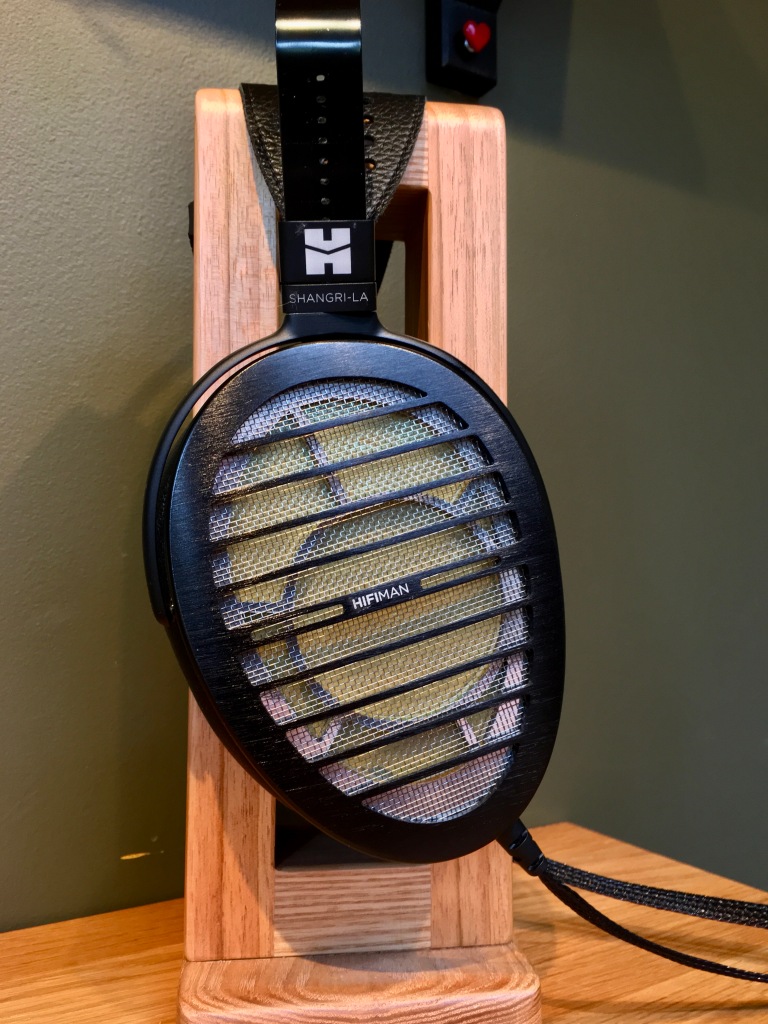
Hi Guys,
Today we are talking about the Hifiman Flagship, the Shangri-La Senior. For this review, I am only talking about the headphone, not the headphone and amp combination, which retails for $50,000USD. This is Hifimans “Statement” headphone/amp combination, and represents what they feel is their best effort at a high end headphone. The headphone on its own retails for $18,000USD, and is an electrostatic headphone. This means that should you have a suitable electrostatic amplifier, it can be used with the headphone only Shangri-La. Based on the Shangri-La’s MSRP, and the fact this is an electrostatic headphone, Hifiman is targeting the Sennheiser HE-1 market, a similarly priced statement electrostatic amp/headphone combination. I do appreciate the fact that Hifiman has made the headphone available without the amplifier, though at $18,000USD, it is still an incredibly expensive headphone, and as such, is more of a halo product than something you see day in day out in the headphone hobby space.
I do feel a sense of responsibility with this review, as there are not that many impressions of this headphone out there, and if I am to recommend it, then that is a lot of money that I am recommending a Hifiman customer spend on a headphone. I knew that with this review, I wouldn’t be able to talk positively about the headphone unless I really deeply felt it was worth buying vs the $6000USD Susvara or other TOTL options on the market. I also wanted to do my absolute best to avoid the “higher price=better” trap that can happen. After having spent two months with the Shangri-La Sr, doing multiple long term comparisons to other top flight options on the market, I do actually feel it is the most technically accomplished, and “best” headphone I have personally heard, and I will try to explain why in the rest of this review.
For the rest of this review, I will review to the Shangri-La Sr. as the Shang SR. This review was done with the HeadAmp BHSE as amplification, and the iFi iDSD Signature as the DAC, as well at the Yggdrasil GS for a period.

In terms of bass response, the Shang SR did remind me mostly of the Susvara, with a slight increase of how incisive the leading edge of the notes is. I could very happily listen to the Shang SR without an EQ boost in the lows, but did ultimately find a low shelve of about 2.5-3dB increased my enjoyment overall of their bass response. The low end is not as impactful as the Abyss 1266TC, which remains my reference for that quality. With that being said, I was surprised at the overall quality of the bass response, as electrostatic headphone do have a rough reputation in terms of how they convey low end information. I didn’t find myself missing any sub bass information or wanting in terms of level, and the mid bass is actually not at all bloated or muddy. The bass did seem to be very, very slightly less in terms of level in the stock tuning vs the Susvara, but that was easily remedied via EQ. I do prefer a slightly more robust bass response than most people, and I would reckon most would enjoy it entirely without any increase via EQ.
In terms of the midrange, it seemed slightly “colder” than the Susvara. Perhaps, slightly less “sweet” sounding, though that descriptor is hard to quantify. The Shang SR is not a warm headphone, but is also not what I would describe as having a cold and clinical sound. It does seem to straddle that line of balance better than some other headphones. In terms of upper mids, the 2khz range seems to be very much in line with the modern Hifiman sound. It is slightly pulled back and I really enjoy this tuning type with electronica, and rock. In contrast to the Susvara, I hear the 3-4khz area as being a bit more forward, which works well with vocals, but I’m curious if some people might find it a bit too forward? For my ears, it was nothing like the Audeze CRBN, which I found far too forward in this range, and I never found myself wanting to do any EQ tweaking of the mid range.
The Highs of the Shang Sr. are slightly bright, but not piercing and sibilant as some headphones can be. I think that when I say they are slightly bright, I mean they are not as laid back and relaxed sounding as the Susvara. The Shang SR are a more forward sounding headphone overall, and I think this helps them reveal how technically capable the drivers actually are. If you prefer a more laidback listen, then I would reckon the Susvara might be a better fit for your preferences. However, if you want a headphone that is more exciting, and really commands your attention, the Shang SR is certainly more along those lines in terms of treble response.

What has impressed me most about the Shang SR over the past two months, Is their technical performance. It has taken me a long time to come to this conclusion, as I wanted to be absolutely sure about how I felt. I think the Shang SR is the most technically accomplished headphone I have heard in a decade of being involved in the hobby. They convey the most detail, in the most delicate and effortless way that I have heard so far. Their micro detail in particular is amazing, and how capable they are at tiny little dynamic swings. The speed of the driver is also the fastest that I have heard, yet I never found it to sound artificial. Over the past ten years I have almost always favoured planar magnetic headphones, and whilst I appreciated electrostatic headphones for what they did well, they were never really “for me.” Yet, as I said to someone I was talking about the Shang SR with, this is the first electrostatic headphone that I have said to myself “…..yeah ok, I get it now.” They have showed me that cliche “new level” in terms of what is capable from heaphones, and that is pretty remarkable. In terms of soundstage width, they are about the same as the Susvara, perhaps very slightly wider. What is really interesting however is how “big” the sound is overall, in terms of height, and front to back. Although the soundstage is not as wide as the HD800 or 1266TC, the sound image itself comes across as being much larger. Separation and imaging are also top notch across the board, being the best I have personally heard.

In terms of build quality, the Shang SR is the best I have felt and handled from Hifiman, yet also felt as if it was a missed opportunity in a way. It feels similar to a Susvara, but with slightly better tolerances and overall build quality. With that being said, for $18,000USD I would have loved to see Hifiman go all out. The Shang Sr done in similar materials and build quality to the Audeze CRBN would make it feel more remarkable, and more worth its MSRP. From a sound standpoint, I absolutely get it, and think it is at that level, but at the price they cost at MSRP, and given their statement product nature, I would have loved to see space aged materials (carbon fibre frame etc…)
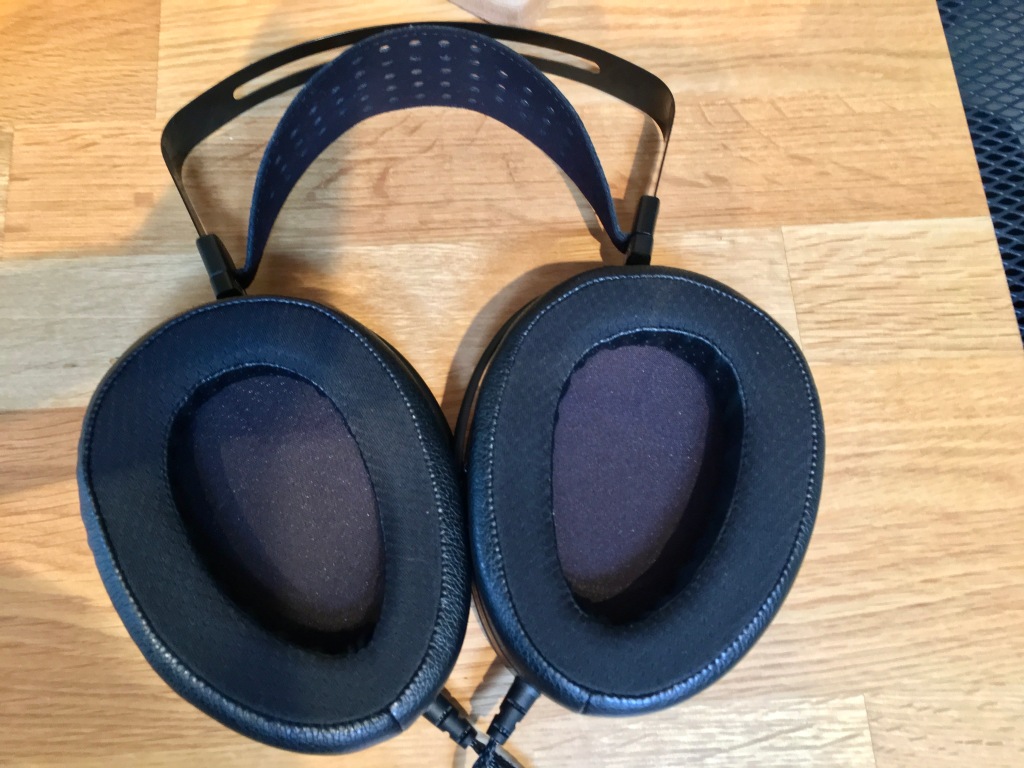
The most obvious comparison to the Shang SR is the Sennheiser HE1. Sadly, I have not heard the HE1 and can’t offer a direct comparison.
The next most obvious comparison is the Susvara from Hifiman, their planar magnetic flagship headphone. The Susvara is slightly warmer, and more laidback in the treble. It is a more relaxing headphone to listen with whilst still managing to be very detailed. The Shang-SR is like a slightly brighter, less warm, and more technically accomplished Susvara. If you love the Susvara, but feel its a bit too relaxed sounding, I would check out the Shang SR, even if its just to see what is possible.
Compared to the 1266TC from Abyss, the Shang SR is a bit more detailed and more delicate sounding. The 1266TC has more impact, and a wider soundstage. These two headphones are incredibly different sounding, and compliment each other very, very well. The Shang SR is the first headphone, that for my personal preferences, has equalled the 1266TC. Although the Shang SR has slightly out done the 1266TC in terms of detail, and refinement sonically, the 1266TC still has the most exciting, impactful, and fun to listen to response I have heard overall. I love both.
The SR009S is another obvious comparison to the Shang SR, being Stax’s former flagship. Honestly, the Shang SR. does everything better to my ears. It’s more detailed, has a more even sounding frequency response, and maintains all the electrostatic traits the 009S has sonically. I think that the new SR-X9000 may be a more fair comparison, but I have not heard them yet sadly. If I manage to hear them in the future, I will come back to this review and update this section, as I think it is a very obvious comparison to make.
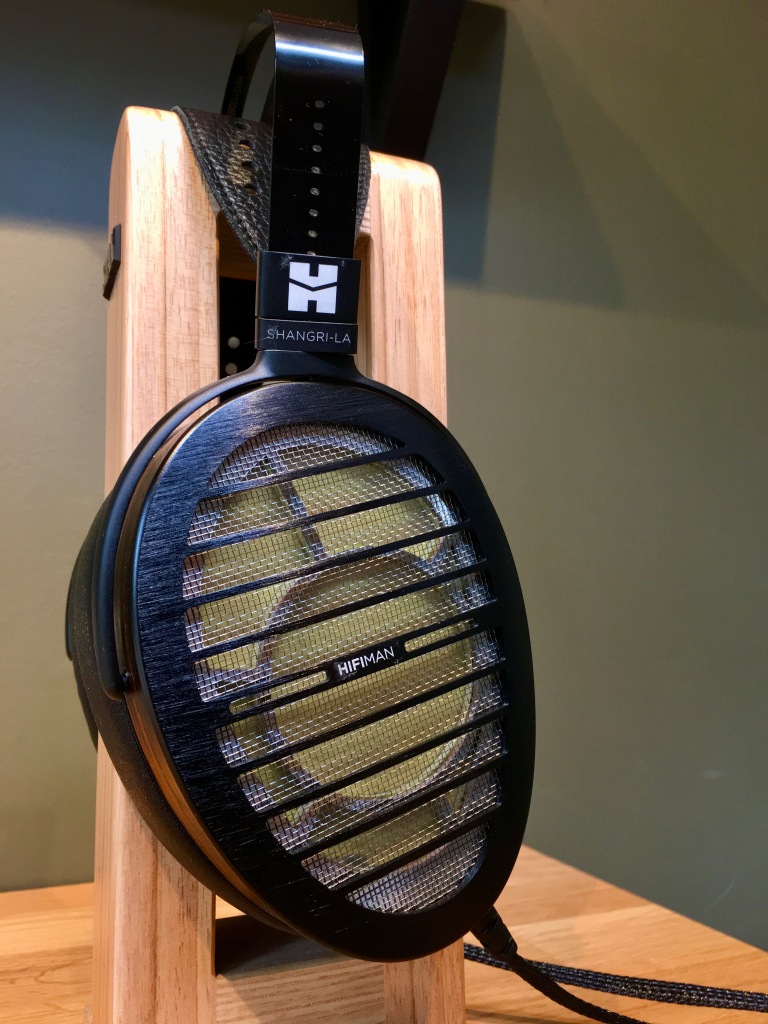
Overall, The Shang SR has been a treat to spend time with. In terms of value for money, it’s not really in the conversation at all, and the vast gulf in MSRP of the Shang SR and Susvara does demonstrate the nature of diminishing returns in the Hifi hobby. With that being said, the Shang SR is the most technically accomplished headphone I have heard, period. It has an incredibly pleasing and balanced frequency response, and is also incredibly comfortable whilst wearing it. I would have loved to see Hifiman go all out on space aged materials and build quality for such an expensive statement product, but I just can’t argue with the sonic performance on display. Perhaps its a bit cliche these days, but the old quote from Ferris Buellers Day Off seems to be a fitting way to end this review. “If you have the means, I highly recommend picking one up.”
ufospls2
@Chefguru not personally, but if others have experienced it then I would suppose its something to look out for should one own them for a long period. I wonder if it has something to do with humidity? Not sure.
@cladane Thats one of the things I like about the Shangri-La, the opportunity to use other amplifiers and buy the headphones as a separate component. I have certainly found myself wondering how successful a headphone only version of the HE1 would be (maybe 85% of the HE1's capability?)
@cladane Thats one of the things I like about the Shangri-La, the opportunity to use other amplifiers and buy the headphones as a separate component. I have certainly found myself wondering how successful a headphone only version of the HE1 would be (maybe 85% of the HE1's capability?)
NickT23
Hi I have local event going on. Believe it or not, I can get to try the Orpheus and Shang ri la side by side and chances like that will never happen once in a life time. I hope I can share impression. And yes on the same spot a/b removing headphone and try another one.
davidhunternyc
So, after some time, has anyone compared the Shangri-La to the Sennheiser Orpheus HE-1?
ufospls2
Headphoneus Supremus
Pros: Complete Package
Easy To Drive
TOTL Technical Performance
Easy To Drive
TOTL Technical Performance
Cons: A tiny bit heavy
Connector Choice for aftermarket compatibility
Darker Treble in stock tuning
Connector Choice for aftermarket compatibility
Darker Treble in stock tuning
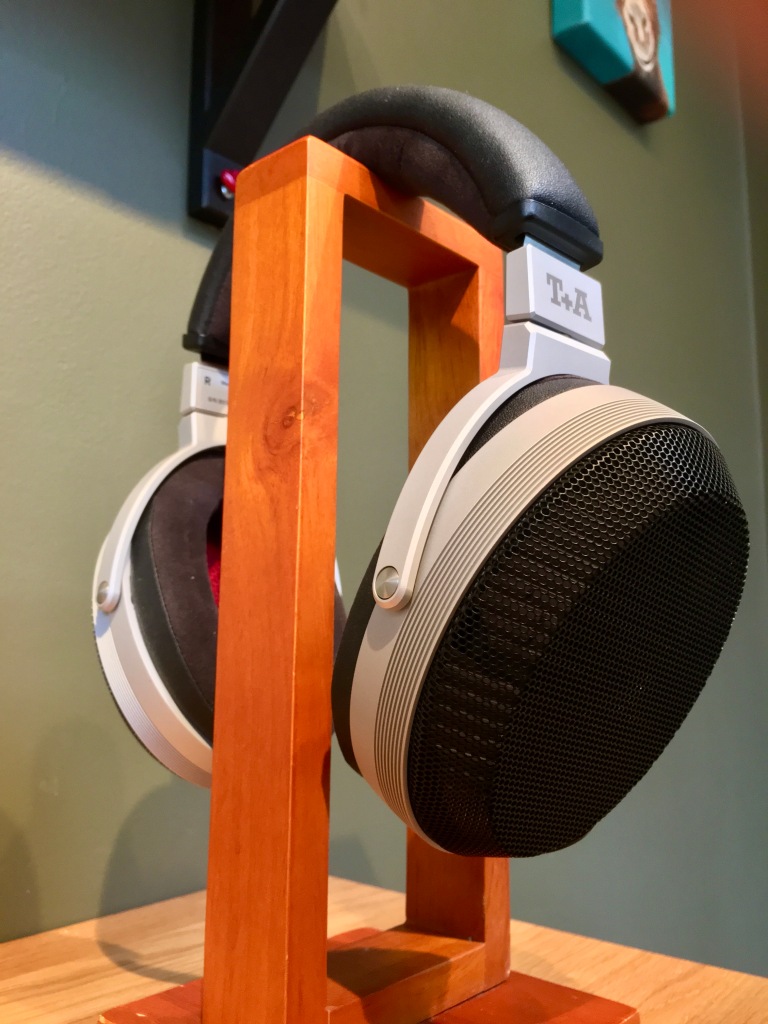
Hi All,
Today we are taking a look at T+A (Theory and Application) of Germany’s flagship headphones, the Solitaire P. This is a headphone I have been incredibly interested in since its release back in early 2020. Since its release, T+A have also followed up with the Solitaire PSE, which retails at roughly half of the price of the Solitaire P. I hope I can get ears on a pair of those someday as well, as the Solitaire P itself is an incredibly compelling headphone overall.
The Solitaire P, which for the rest of this review I will refer to as the “SolP” is a planar magnetic headphone, with a sensitivity rating of 101db/mw and 80 ohms impedance rating. Overall, they are quite an easy to drive headphone, and will play well even from lower power source equipment. With that being said, they do seem to enjoy a healthy supply of power behind them, and scale well with an increasing quality of source equipment. The reason I note that they play well from lower output power equipment, is that generally speaking, top of the line planar magnetic headphones have been fairly difficult to drive in the past. There are obviously a few exceptions, but things like the Hifiman Susvara and Abyss 1266TC, are both difficult to drive, the Susvara notoriously so. I was worried the Solitaire P would not play at the level of the very upper echelon of planar magnetic headphones, especially given its $6900USD MSRP ($6200USD at launch.) Thankfully, they absolutely do play at the very top level, and also manage to do some things I have not heard before.

The bass of the SolP’s has been the most surprising element of its sound signature. In terms of overall level, they are perhaps very slightly elevated, but it is the technical performance of the bass that has stood out to me. They are the most similar to the Abyss 1266TC’s bass response that I have heard from a different headphone, and for myself and many others the 1266TC’s bass is their absolute reference point. The SolP’s bass response has a similar quick, impactful, “slam” heavy response. It is not exactly the same as the 1266TC, and I would say sort of bridges the middle ground between the more laidback response of the Hifiman Susvara, and 1266TC. This works incredibly well with electronica, rock, and metal – those sorts of genres. However, in the low end, things like upright bass in jazz, or perhaps a baritone saxophone are also conveyed incredibly well. Overall, the bass response of the Solitaire P has been its most surprising element, as it is the best I have heard in an easier to drive model, and comes the closest that I have personally heard out of any other headphone to my favourite headphone in terms of bass response, the 1266TC.
The midrange of the SolP is mostly in line with my preferences. The lower mids are what I would consider fairly neutral. My personal preferences have shifted over time as I used to prefer warm and thick sounding headphones. Nowadays I favour a more neutral, or sometimes even “colder” midrange response. The lower mids of the SolP never came across as thick, or warm to me. At the same time I never found myself wanting to boost the low mids as if they sounded sucked out and hollow. The lower mids of the SolP are well tuned in my opinion. The upper mids in the 2khz region might be a bit relaxed for some listeners preferences. If you listen to lots of female vocals and really prefer that region to be forward, you might want to boost it slightly via EQ. In the stock tuning, it reminds me of the Hifiman Susvara slightly, and I totally enjoy it without any tweaking. I largely listen to electronica/IDM, jazz, and metal (though I do listen to a wide variety of other genres, those are just my usual go to’s.) For these genres, a slightly relaxed upper midrange works very well.
The treble of the Solitaire P is likely its most controversial tuning decision. Overall, in the stock tuning, I find them a bit blunted and dark sounding. If you are a treble sensitive listener, I would highly, highly, recommend checking these headphones out. Now, in the stock tuning, the SolP lend themselves to very long relaxed listening sessions. However, if one is open to using EQ (which I absolutely am) a simple high shelf from about 4Khz upwards increased by a few dB really opens up what these headphones can do. I think the stock treble response may artificially disguise how truly technically capable and detailed these headphones are. In the same vein that boosted treble can convey a somewhat fake sense of “detail” that isn’t really there, I think the SolP’s stock treble response may be doing the exact opposite. With that slight treble increase, you really get a thoroughly satisfying, incredibly capable sounding treble. *To note: T+A has released a pair of alternate pads that supposedly increase the highs and pull back the mids slightly, I would like to try these eventually, and if I do I will edit this review and update it with my impressions of those pads.*

So, that is how I hear the overall frequency response. It is actually the other parts of the SolP that add up to make it such a compelling package. In terms of technical performance – soundstage, detail, dynamics, it is up there with the best in my opinion. The fact it plays at that level technically whilst also being easy to drive, is also part of what makes them special. I would say they are very very close to being as detailed as the Susvara and 1266TC, perhaps lagging behind by about 5%. It is such a small amount of difference in overall detail levels, both micro and macro that you would have to be intently listening for any differences. The SolP’s drivers are very quick, and as such seem to convey dynamic swings with ease. As I mentioned in the bass section, the SolP also do “slam” and impact very well. The soundstage of the SolP is slightly wider than what I would consider a “natural” sounding soundstage, leaning more towards a “wide’ soundstage. Although not as wide as the cavernous soundstage of the HD800 and 1266TC, the SolP give a large sounding image. The imaging and precision of the drivers is again up there with the best I have heard, but always seemed to be more obvious with the slight boost in the treble, vs the stock tuning.

In terms of build quality, the SolP’s are very substantial, and feel very well put together. They are mostly aluminum, with Alcantara Pads. They aren’t the comfiest or lightest headphones I have tried, but I have not struggled with comfort at all. I have read a few impressions of listeners struggling with the fit of the headband. As it lacks the suspension strap seen on other models in the marketplace, I think that it may be a case of “it fits” or “…it doesn’t.” I have a fairly large head, and have not had any troubles thus far, but if you can try it personally I would highly recommend doing so, just in case. The ear pads, being alcantara, have a really nice plush feel to them. The weight of the SolP is enough that you notice that you are wearing them, but not troublesome like some Audeze (700g+) models for example. The fit and finish is pretty much impeccable, and I have no complaints about it. One thing that I’m still undecided on is the connector choice. The SolP use a recessed HD800 connector. I understand that the HD800 connector is a high quality option, and the recession protects it, but it does make aftermarket cable options a bit more difficult. This is simply something to note, as if you are getting an aftermarket cable made, you will need to specify longer heat shrink so that the cable can be inserted and removed. Perhaps something like the Audeze/Meze 4pin XLR option would have been a bit more universal, allowing existing cables in someones collection to be used.

Compared to the Hifiman Susvara, the SolP has slightly more bass, similar mids, and is darker in the treble (without EQ.) I would say the Susvara is very slightly more detailed and delicate sounding, but the difference is slight. The SolP does have more impact or slam in the low end than the Susvara, and does sound slightly wider in terms of soundstage. The Susvara is more comfortable, but the SolP’s build is more impressive, and feels far more substantial. In terms of sensitivity, the Susvara is 83db/mw and the SolP is 101db/mw. In practice, this makes the SolP so much easier to use day to day, as it doesn’t need a nuclear reactor to sound at its best.
Compared to the Abyss 1266TC, the SolP actually reminds me of the 1266’s bass more than any other model I have heard, though still not exactly the same. There is slightly more mid presence in the lower mids on the SolP, and the SolP is darker in the treble (no EQ) than the 1266. The 1266TC has a wider soundstage and overall a larger sonic picture, but again the detail levels between the two are quite similar, with the SolP only slightly trailing behind. Both feature impressive aluminium builds, but the SolP is slightly more comfortable due to its lighter weight and more conventional shape.
Compared to the Meze ELITE, the SolP is more detailed, and more technically accomplished overall. The Meze does have more presence in the treble, a bit more euphony in the mids, and slightly more mid bass. The Meze is still the comfiest headphone I have ever tried, and has a build that I think all headphone companies can aspire to equal. Still, the SolP bests it sonically for my personal preferences.

Overall, the Solitaire P from T+A is an incredible first effort at a TOTL headphone. The more I think about it, the more I think it might be the most “complete” package in terms of a top of the line planar magnetic headphone options currently available. I say “complete” in the sense that it is almost as technically accomplished as the other TOTL planar magnetics (incredibly close) but is also a comfortable, and most importantly, easy to drive headphone. More and more I have come to appreciate having a headphone that plays in the top league in terms of detail etc…whilst also being able to drive that headphone from even standard portable gear (something like the iFi Gryphon worked incredibly well,) something unthinkable with a headphone like the Hifiman Susvara. I do think the current $6900USD MSRP is a bit much, simply based upon the other options in the TOTL arena. However, if it is within your budget, the Solitaire P is very much worth considering. If you want a headphone which can be used day in day out, from a multitude of source options, but also plays at the highest technical level, the T+A Solitaire P is absolutely worth looking into.
Last edited:
Somatic
Thanks for the great review. Curious on your thoughts of the ultra wide pads. Can’t wait for the update. Wondering if they are even needed if one adds a high shelf with a few db. I ended up ordering them with the Sol P just in case. Still waiting on them.
Do you find the TC or Susvara redundant now?
Do you find the TC or Susvara redundant now?
auricgoldfinger
What amp did you use to drive these headphones?
ufospls2
@auricgoldfinger quite a few. Boulder 866 mainly, iFi Gryphon, Fiio Q3, iFi iDSD Signature Pro were the ones I spent the most time with.






















Cheers!!